Forums
- Forums
- Axis And Allies Forum
- General Discussion
- Aviation News
Aviation News
Post a reply
- Go to Next topic
- Go to Welcome
- Go to Introduce Yourself
- Go to General Discussion
- Go to Screenshots, Images and Videos
- Go to Off topic
- Go to Works in Progress
- Go to Skinning Tips / Tutorials
- Go to Skin Requests
- Go to IJAAF Library
- Go to Luftwaffe Library
- Go to RAF Library
- Go to USAAF / USN Library
- Go to Misc Library
- Go to The Ops Room
- Go to Made in Germany
- Go to Campaigns and Missions
- Go to Works in Progress
- Go to Juri's Air-Raid Shelter
- Go to Campaigns and Missions
- Go to Works in Progress
- Go to Skinpacks
- Go to External Projects Discussion
- Go to Books & Resources
-
 Main Admin6 September 2016 Press Release
Main Admin6 September 2016 Press Release
Vietnam?s Vietjet has placed a firm order with Airbus for 20 A321 single aisle aircraft to meet growth on its domestic and regional network. The purchase agreement, covering 10 A321ceo and 10 A321neo, was signed in Hanoi today by Vietjet President and CEO, Nguyen Thi Phuong Thao and Fabrice Br?gier, Airbus President & CEO.
The signing took place during the state visit to Vietnam of Fran?ois Hollande, President of France, and was witnessed by Mr Hollande and Tran Dai Quang, President of the Socialist Republic of Vietnam.
In addition to the new order, Vietjet and Airbus also finalised an agreement for the manufacturer to provide training services for flight crew and maintenance personnel at the airline?s new facility in Ho Chi Minh City. This will see Airbus oversee courses at the facility identical to those offered at the manufacturer?s own training centres.
At the signing ceremony, the President and CEO of Vietjet Nguy?n Th? Ph??ng Th?o ?shared: "Vietjet is developing robustly and sustainably with an aim at better serving our passengers and promoting tourism and economic development in Vietnam and other regional countries.The friendly relationship in politics and culture between Vietnam and France has been nurtured through generations. Two countries are heading towards a more efficiently economic cooperation of which today agreement of Vietjet and Airbus is a vivid example. We do take pride in and appreciate Airbus for their efforts and supports since our operation. Thanks to our modern fleet with advanced designs, fuel efficiency as well as effective supports in operations, training and system development, Vietjet will continue to realize passengers? dreams of flying, to create a future in the air with an aim at making Vietjet become more and more popular globally.?
?We are pleased to sign our latest purchase agreement with Vietjet,? said Fabrice Br?gier, Airbus President & CEO. ?Vietjet is benefitting from the very significant economies that come from operating a single aircraft family. For busier routes the A321 combines higher capacity with the lowest operating costs in its class, offering unbeatable efficiency. We look forward to developing further our partnership with Vietjet, including working with the airline to develop its new training facility.?
Vietjet first took to the skies at the end of 2011 and now operates a fleet of 40 A320 Family aircraft. Following today?s announcement the airline has placed firm orders with Airbus for a total of 119 A320 Family aircraft, including 54 A320s and 65 A321s.
The A320 Family is the world?s best-selling single aisle product line, with four models (A318, A319, A320, A321) ranging from 100 to 240 seats. To date, the Family has won more than 12,700 orders since launch and more than 7,150 aircraft have been delivered to some 400 customers and operators worldwide.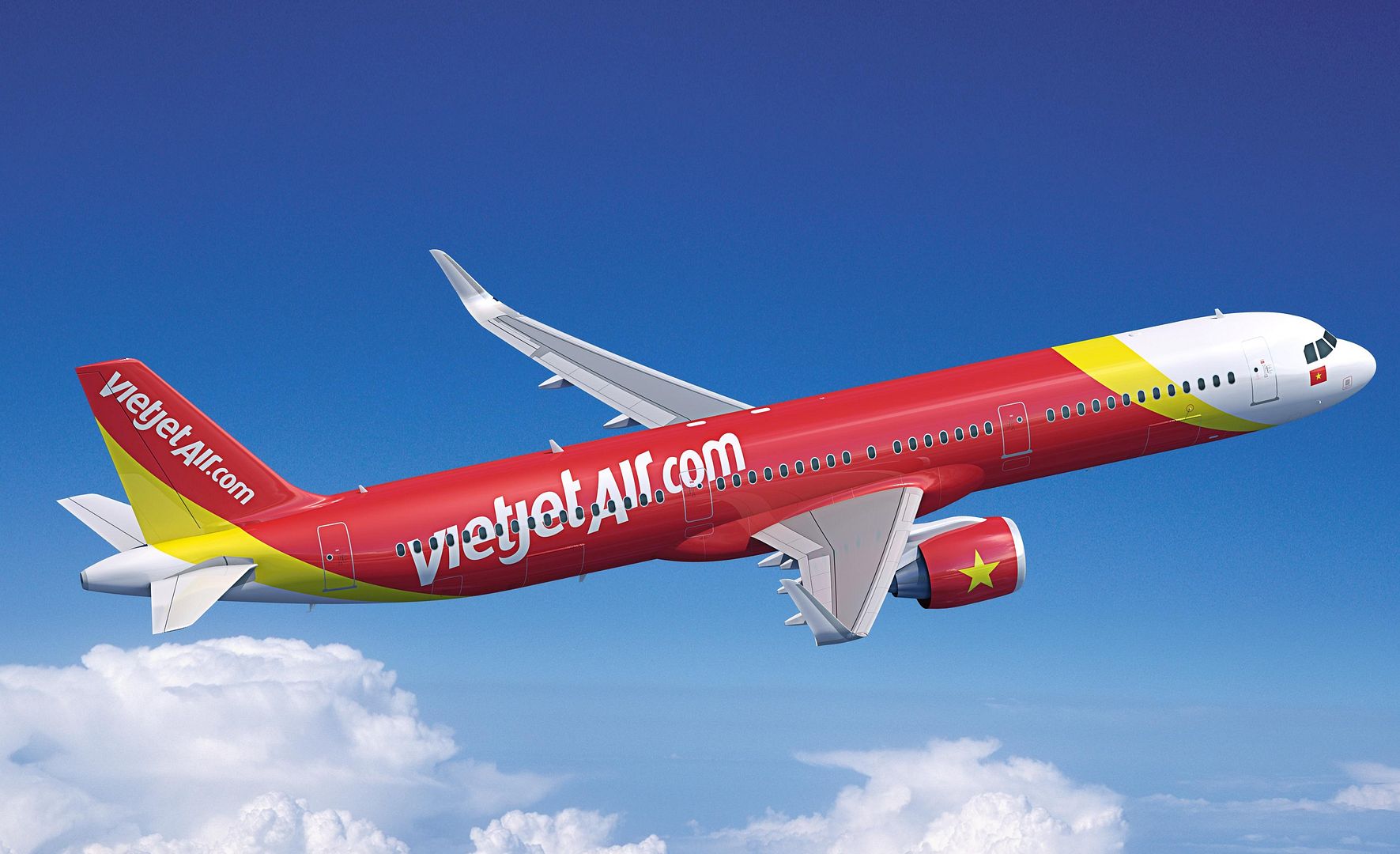
6 September 2016 Press Release
Vietnam?s Jetstar Pacific Airlines has finalised a purchase agreement with Airbus for 10 A320ceo aircraft. The contract follows an MOU announced earlier this year and was signed today in Hanoi by Le Hong Ha, Chief Executive Officer of Jetstar Pacific and Fabrice Br?gier, Airbus President and CEO.
The signing took place during the state visit to Vietnam of Fran?ois Hollande, President of France, and was witnessed by Mr Hollande and Tran Dai Quang, President of the Socialist Republic of Vietnam.
Based in Ho Chi Minh City, Jetstar Pacific is a joint venture between Vietnam Airlines (70%) and the Qantas Group (30%). The order from Jetstar Pacific marks the first direct purchase by the airline from Airbus. The aircraft will join an existing fleet of 12 leased A320 Family aircraft flying with the airline on domestic and regional routes.
?This order is a key milestone for our operation here in Vietnam and beyond,? said Le Hong Ha, Chief Executive Officer of Jetstar Pacific. ?These new aircraft will be used primarily to expand our international network from Vietnam as part of the wider Jetstar Group. As competition grows in Vietnam, we believe that the A320 and our value-based quality service will place us well to attract a growing share of the market.?
?We are pleased to sign our first purchase agreement with Jetstar Pacific in Hanoi today,? said Fabrice Br?gier, Airbus President & CEO. ?The order reinforces the position of the A320 as the single aisle aircraft of choice for airlines in Vietnam. We look forward to developing further our partnership with Jetstar Pacific as it consolidates its position in the fast-growing South East Asian market.?
Value-based airline Jetstar Pacific operates a total of 33 domestic and international routes. It is part of the larger Jetstar Group network that connects to more than 75 destinations in 17 countries with 4,000 weekly flights across Jetstar Airways (Australia), Jetstar Japan (Japan), Jetstar Asia (Singapore) and Jetstar Pacific.
The A320 Family is the world?s best-selling single aisle product line with more than 12,700 orders since launch and more than 7,150 aircraft delivered to some 400 customers and operators worldwide. With the widest cabin in the single aisle market, the A320 Family offer unmatched comfort in all classes and Airbus? 18? wide seats in economy as standard. The A320 Family aircraft seat from 100 to 240 passengers, seamlessly covering the entire single-aisle segment from low to high-density domestic to longer range routes.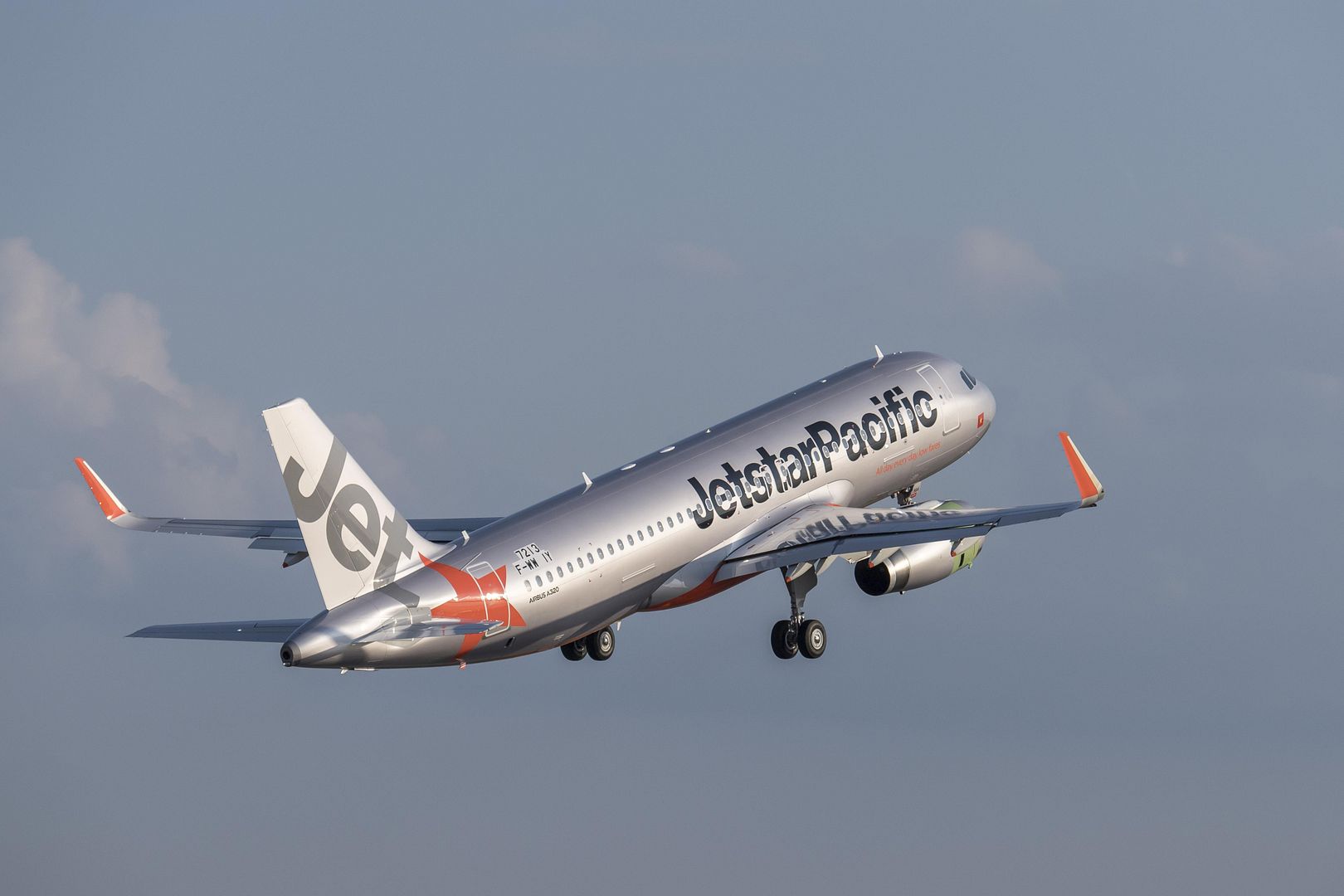
6 September 2016 Press Release
Comlux The Aviation Group has become the first to retrofit an Airbus corporate jet, an ACJ319, with Sharklets, which bring a fuel-saving of up to four per cent and a corresponding range improvement. The retrofit, carried out by TAP Maintenance and Engineering as part of the first such turnkey-project managed by Airbus Corporate Jets, is also the first on any version of the A319 airliner.
?Comlux has always been a leader in Airbus corporate jets, and our Sharklet retrofit highlights our innovative approach to offering customers one of the world?s most modern and handsome corporate jet fleets,? says Comlux Chairman and CEO Richard Gaona.
?Airbus has a reputation for innovative solutions and long-term relationships in the airliner world, so it?s great to have the opportunity to echo that with this one with Sharklets in corporate jets, with a leader such as Comlux,? says Airbus Corporate Jets Managing Director Benoit Defforge.
Sharklets act as a barrier to the flow of air around an aircraft?s wingtips, reducing drag to save fuel. They have been offered as an option on all A320 Family aircraft produced in recent years, and are standard fit on all A320neo (New Engine Option) Family aircraft. Sharklets can also be retrofitted to existing A320 Family aircraft, from Manufacturer?s Serial Number 1200 onward.
Airbus? corporate jet Family is the most modern and comprehensive in the world, and regularly benefits from innovations that keep it that way. It benefits from services tailored to corporate jet customer needs, as well a worldwide support network supporting more than 500 customers and operators around the world.
More than 180 Airbus corporate jets are in service around the world, and they are in service with companies, individuals and governments, flying on every continent, including Antarctica.
About Airbus corporate jets
Airbus Corporate Jets (ACJ) create the world?s most rewarding flying experiences with customers by providing them with unique expertise, the finest service, best technology and highest standards of care in corporate aviation.
All Airbus corporate jets come from the most modern aircraft family on the market. Derived from Airbus? successful market-leading jetliners, ACJ customers will invariably be close to Airbus? global support network and, wherever in the world they choose to fly their aircraft, they will be supported around the world, around the clock.
The ACJ family gives customers the greatest choice of wide and spacious cabins, presenting inspiring and infinite possibilities in creating unique spaces that offer the best comfort and functions. Those customers who want even greater space to carry even more passengers can opt for one of ACJ?s full family of VIP widebodies that also deliver ?non-stop to the world? range.
Customers choosing ACJ buy in to more than a product; they are making an investment in the future. They join a dedicated and exclusive community united in its quest for a unique flying experience.
Comlux The Aviation Group is one of the leaders in business aviation, operating worldwide with the highest standards of safety and quality. Beyond VIP charter operations, Comlux offers a comprehensive set of services to VIP customers who wish to have their own aircraft managed personally and professionally. This includes exclusive aircraft management, sales and acquisitions, cabin design and completion as well as maintenance and engineering services.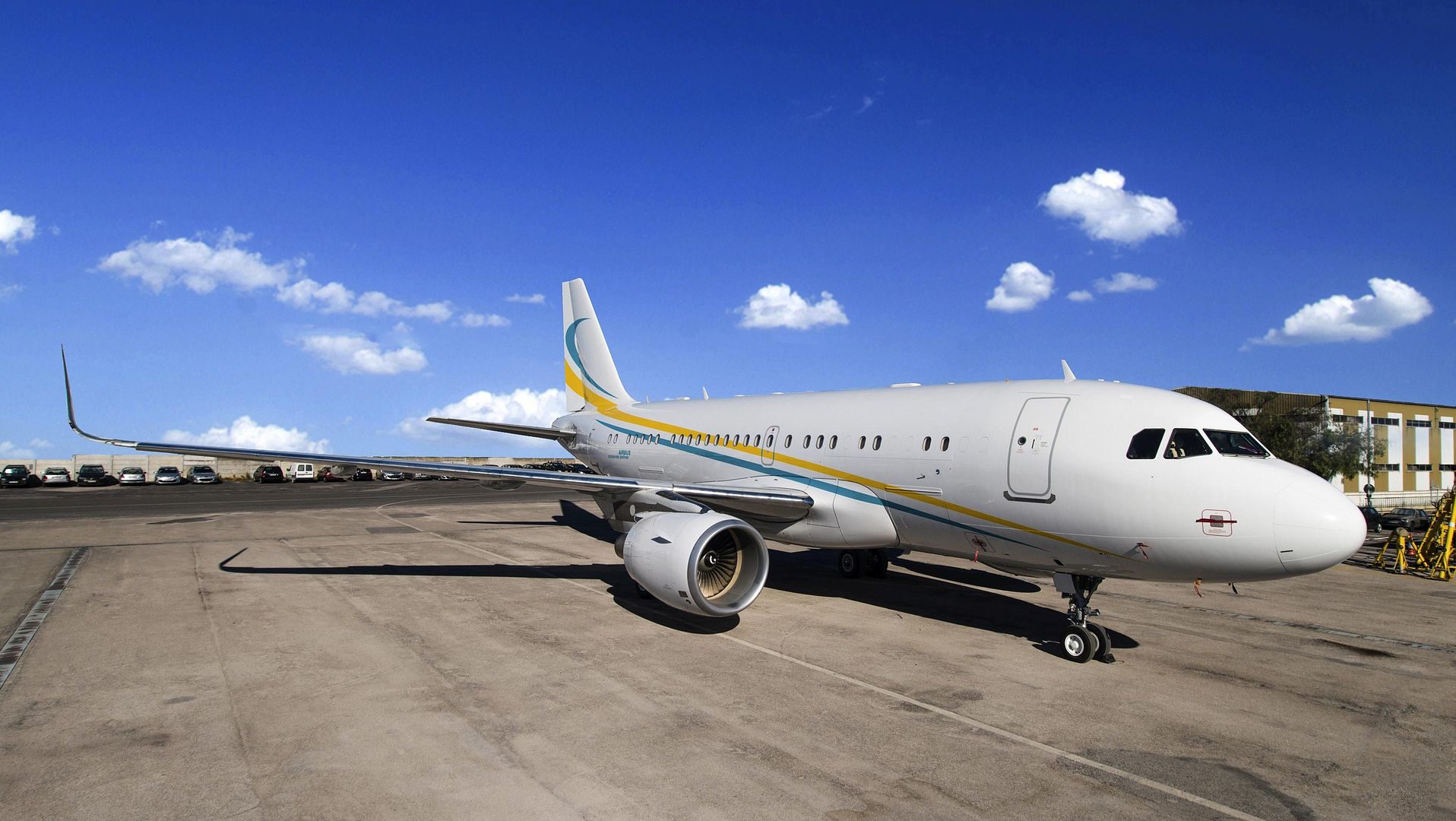
-
 Main AdminA CH-53E Super Stallion with Marine Light Attack Helicopter Squadron 167, 2nd Marine Aircraft Wing, lands at Riverfront Park, Nashville, Tenn., as part of Marine Week Nashville, Sept. 6, 2016. Marine Week Nashville is an opportunity to showcase the Marines and help people understand the capabilities of the Marine Corps. (U.S. Marine Corps photo by Lance Cpl. Alexis C. Schneider/ Released)
Main AdminA CH-53E Super Stallion with Marine Light Attack Helicopter Squadron 167, 2nd Marine Aircraft Wing, lands at Riverfront Park, Nashville, Tenn., as part of Marine Week Nashville, Sept. 6, 2016. Marine Week Nashville is an opportunity to showcase the Marines and help people understand the capabilities of the Marine Corps. (U.S. Marine Corps photo by Lance Cpl. Alexis C. Schneider/ Released)
ARABIAN GULF (Sept. 6, 2016) An F/A-18E Super Hornet assigned to the Sidewinders of Strike Fighter Squadron (VFA) 86 makes an arrested landing on the flight deck of the aircraft carrier USS Dwight D. Eisenhower (CVN 69) (Ike). Ike and its Carrier Strike Group are deployed in support of Operation Inherent Resolve, maritime security operations and theater security cooperation efforts in the U.S. 5th Fleet area of operations. (U.S. Navy photo by Mass Communication Specialist 3rd Class Nathan T. Beard)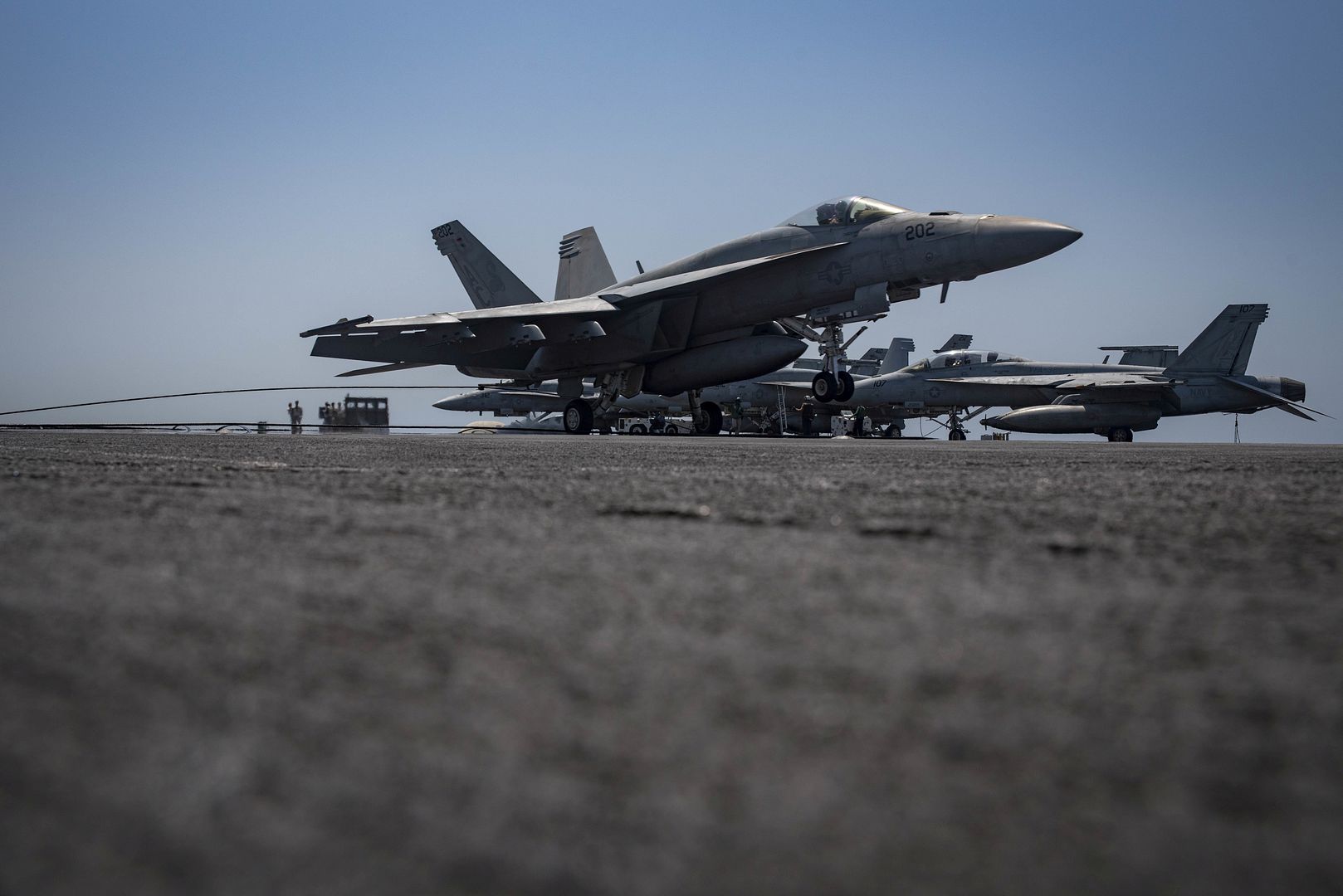
The first Airbus A400M new generation airlifter ordered by the Spanish Air Force has made its maiden flight, marking a key milestone towards its delivery. The aircraft, known as MSN44, took off from Seville, Spain where the A400M Final Assembly Line is located at 15:25 local time (GMT+1) on 5 September and landed back on site 3 hours and 45 minutes later.
Test-Pilot Nacho Lombo, who captained the flight, said after landing: "As always, the aircraft was a pleasure to fly. I am confident that its unique combination of strategic and tactical capabilities will have a transformational effect on the Spanish Air Force?s air mobility operations as it has done in other countries already." The aircraft is scheduled to be delivered in the coming weeks.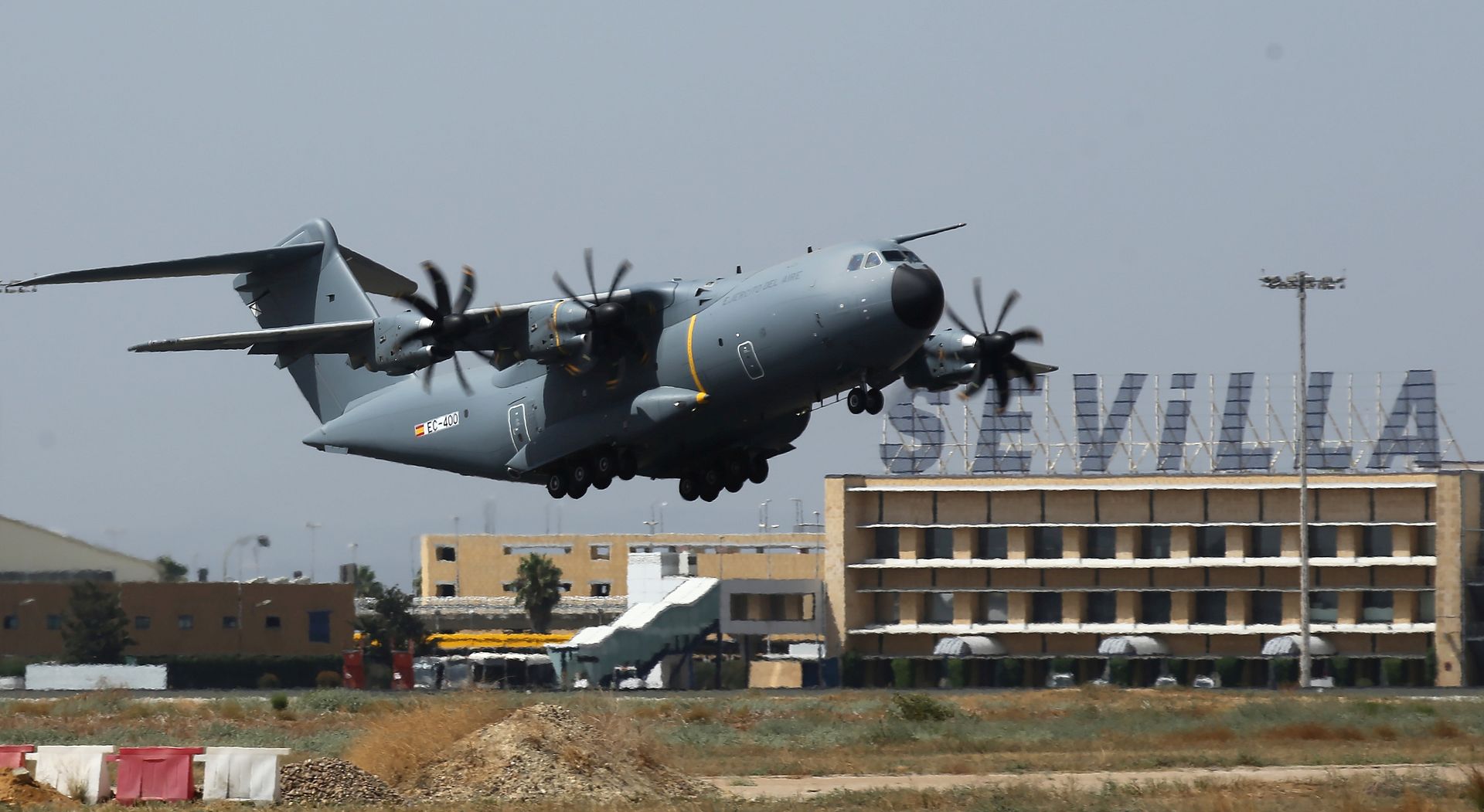
-
 Main AdminU.S. Air Force Lt. Gen. R. Scott Williams, commander of Continental U.S. NORAD Region-1st Air Force, takes off in his F-16 Fighting Falcon fighter jet at McEntire Joint National Guard Base, S.C., Sept. 7, 2016. Lt. Gen. Williams visited the South Carolina Air National Guard, 6-7 September, to fly and train with Swamp Fox pilots from the 169th Fighter Wing. (U.S. Air National Guard photo's by Senior Master Sgt. Edward Snyder)
Main AdminU.S. Air Force Lt. Gen. R. Scott Williams, commander of Continental U.S. NORAD Region-1st Air Force, takes off in his F-16 Fighting Falcon fighter jet at McEntire Joint National Guard Base, S.C., Sept. 7, 2016. Lt. Gen. Williams visited the South Carolina Air National Guard, 6-7 September, to fly and train with Swamp Fox pilots from the 169th Fighter Wing. (U.S. Air National Guard photo's by Senior Master Sgt. Edward Snyder)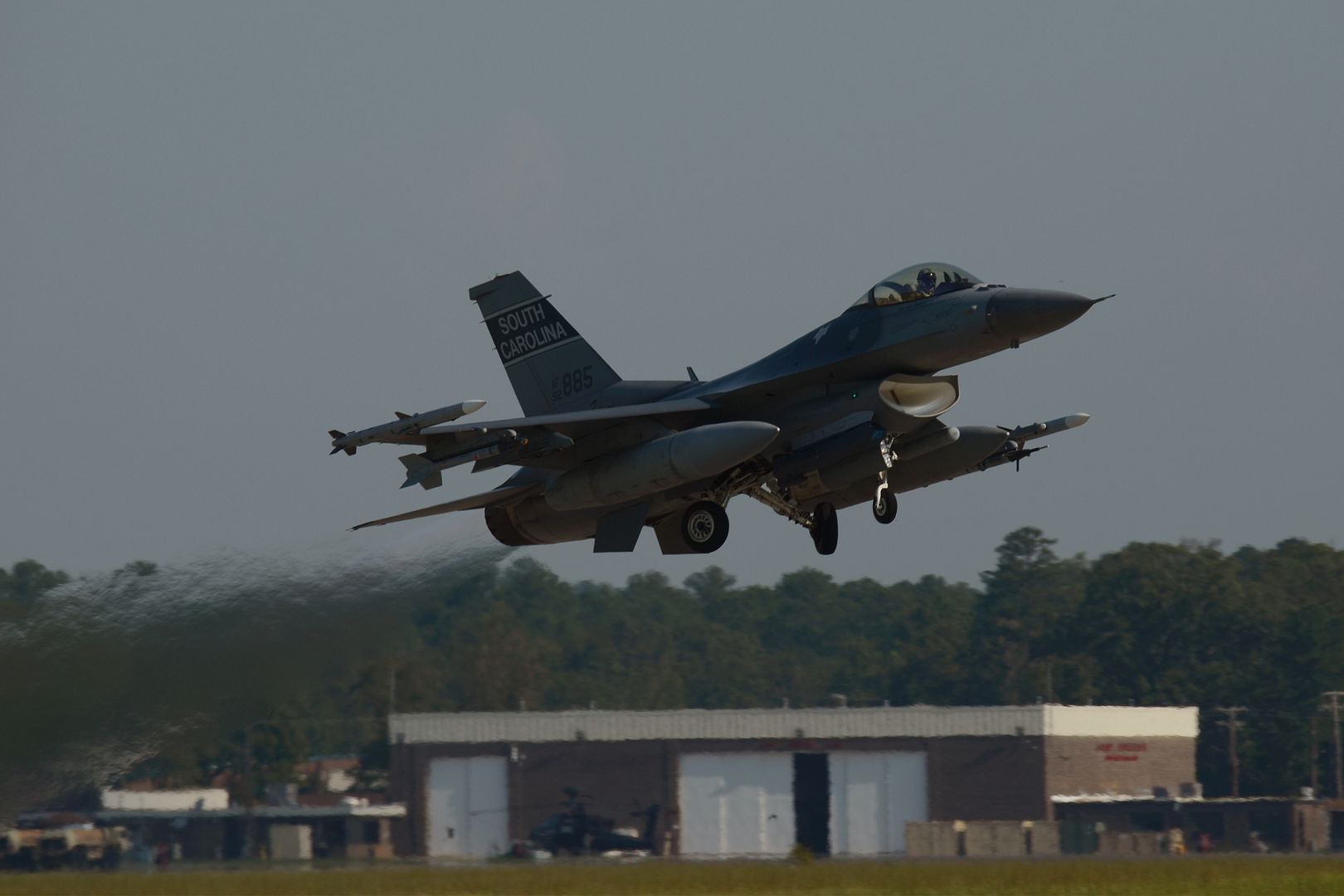
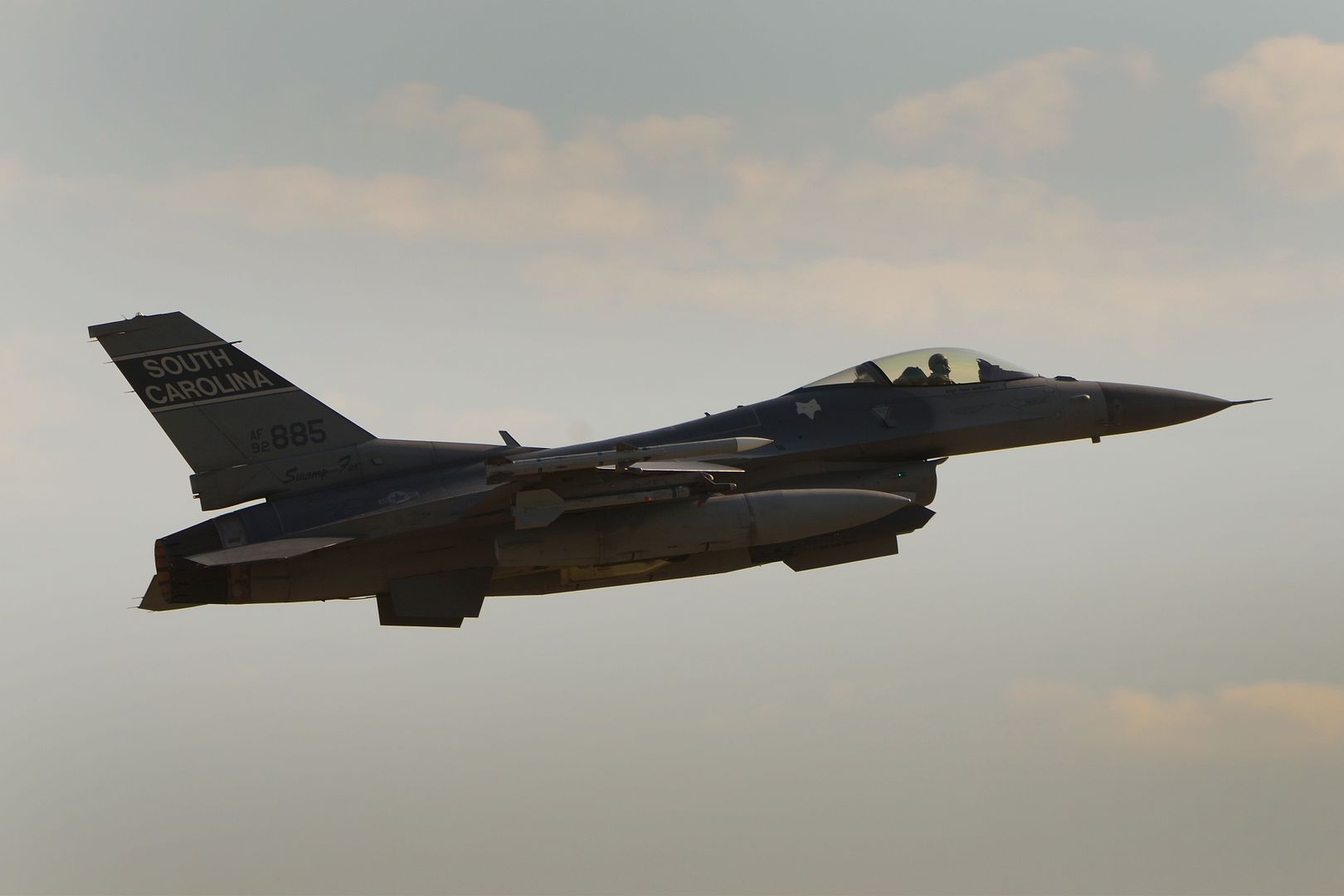
An AH-1W Super Cobra with Marine Light Attack Helicopter Squadron 167, 2nd Marine Aircraft Wing, prepares to land at Montgomery Bell Academy, Nashville, Tenn., as part of Marine Week Nashville, Sept. 7, 2016. Marine Week provides an opportunity for the Marine Corps to visit a city that normally doesn?t have opportunities to interact with Marines on a regular basis. (U.S. Marine Corps photo by Lance Cpl. Alexis C. Schneider/ Released)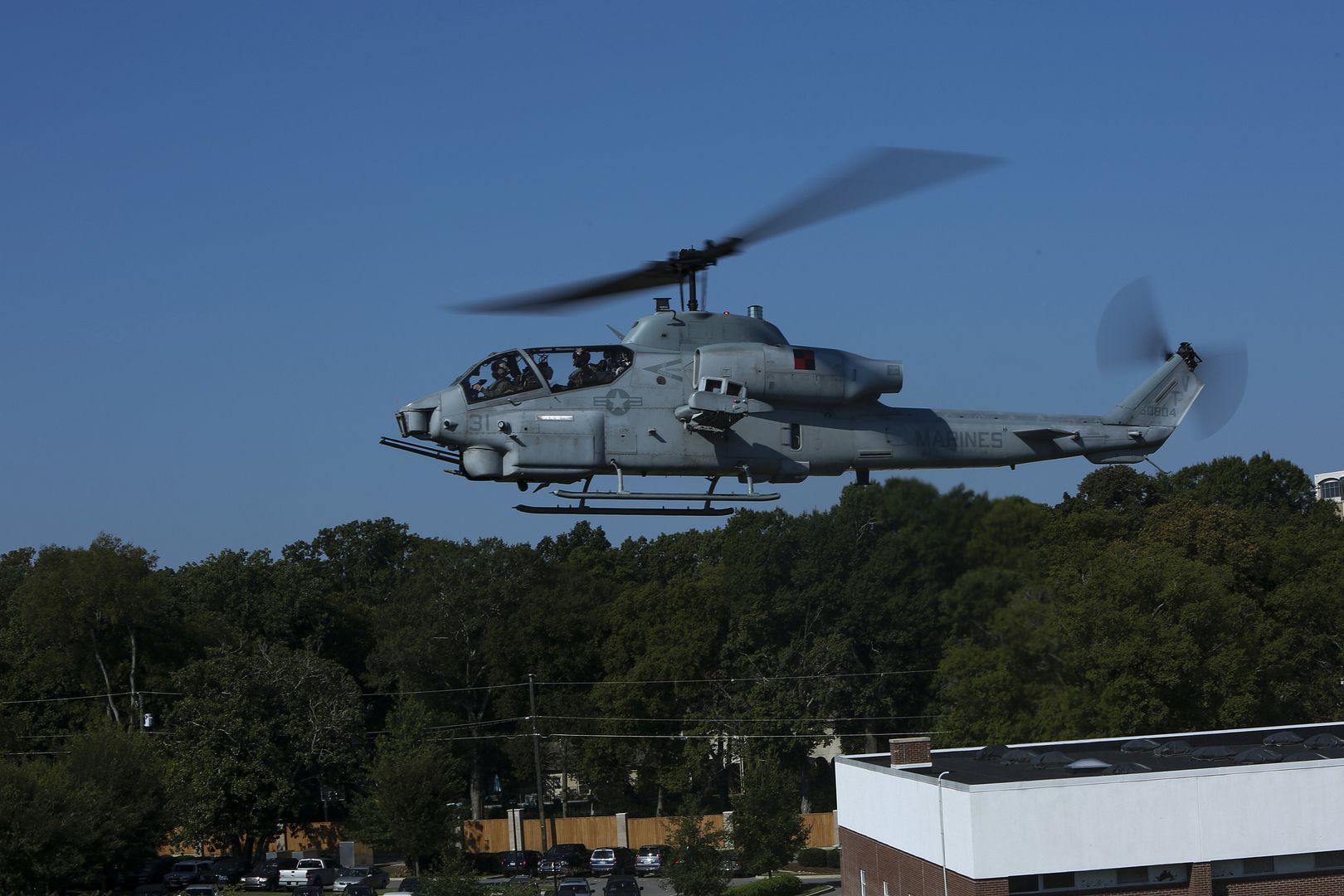
A Sikorsky UH-60 Blackhawk is hauled into a C-5 Galaxy for transport, Bagram Airfield, Afghanistan, Sept. 8, 2016. When Army aircrew units redeploy back to their home stations, the Blackhawks are packed up and transported back on aircraft such as the C-5 Galaxy. As the Air Force?s largest strategic airlifter, the C-5 can handle a payload of up to 5 helicopters. (U.S. Air Force photo's by Senior Airman Justyn M. Freeman)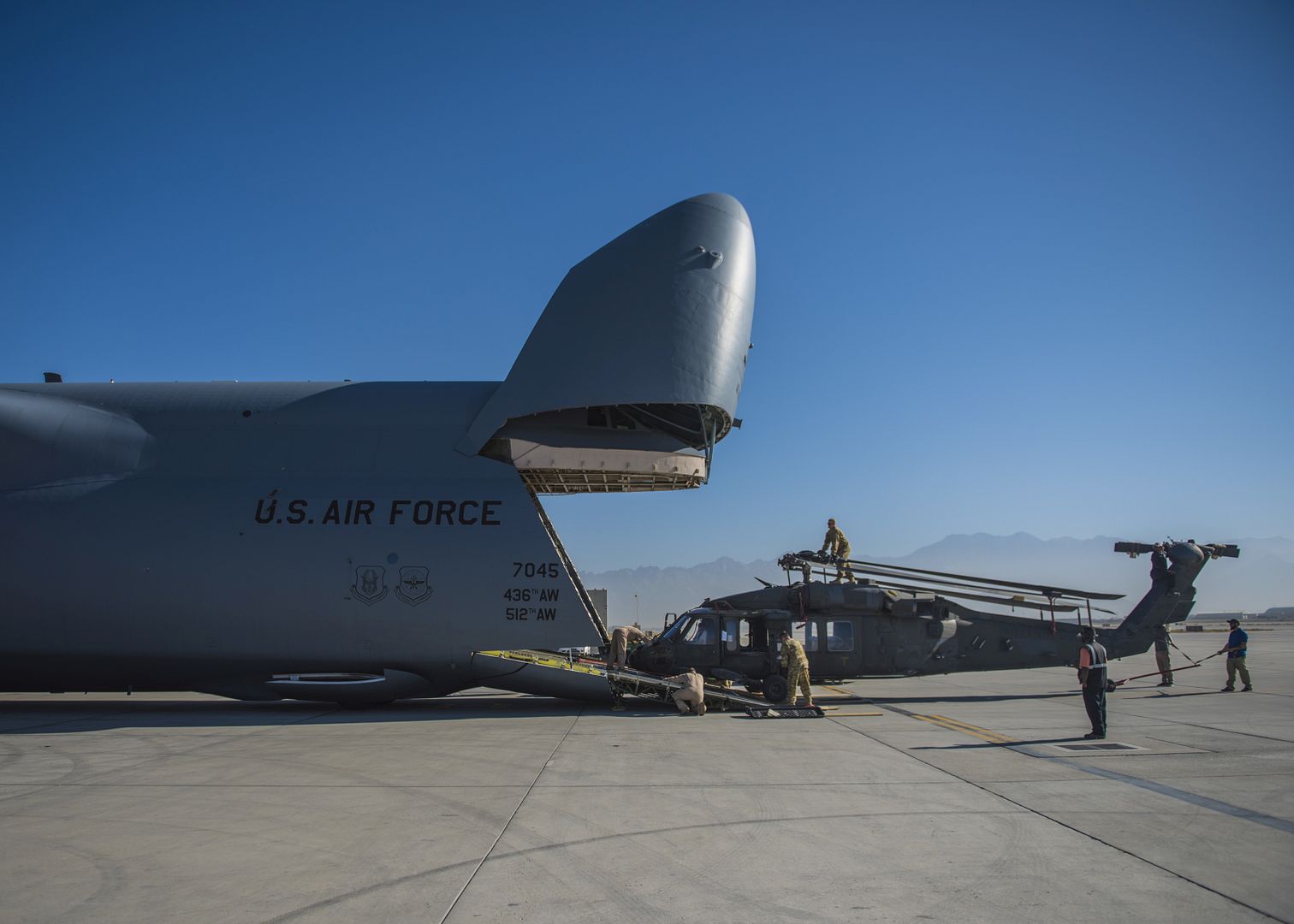
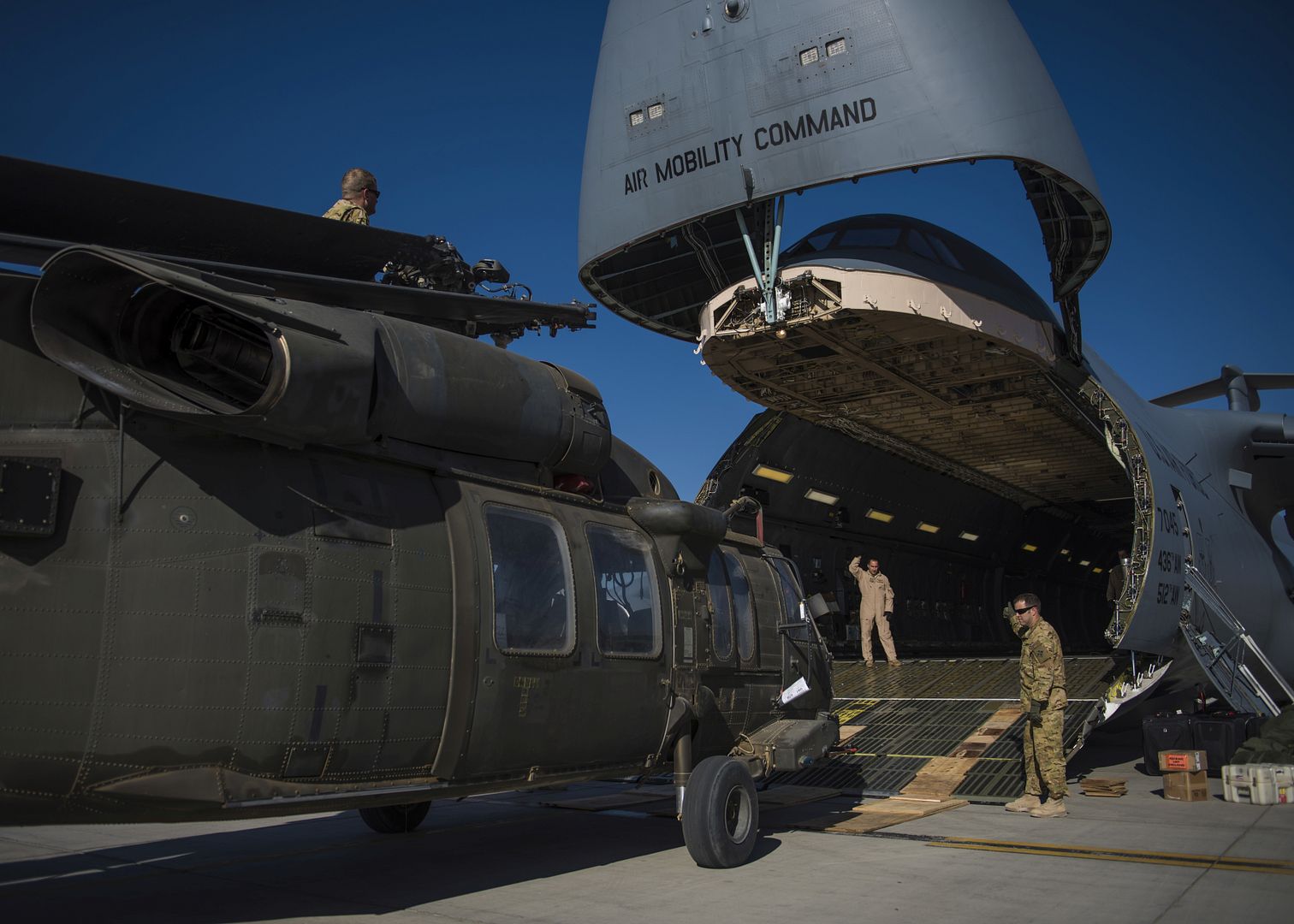
EGLIN AIR FORCE BASE, Fla. --
Three F-35B aircraft and 75 U.S. Marines from Marine Operational Test & Evaluation Squadron 1 F-35B Detachment at Edwards Air Force Base , California, along with 21 test personnel from the JSF Operational Test Team at Edwards deployed here to complete operational test missile shots of the AIM-120 Advanced Medium-Range Air-to-Air Missile.
These employment scenarios differed from those conducted in developmental test in that they were specifically designed around operational employment scenarios with the aim of further validating and developing tactics, techniques, and procedures for all three variants of the F-35.
?Due to the commonality of the F-35 mission systems and weapons, everything we learned during this detachment directly translates to combat capabilities for the Marine Corps, our sister services, and partner countries,? Lt. Col. Richard Rusnok, VMX-1 F-35B Detachment Officer-in-Charge, said of the test missile shoot.
The detachment completed multiple engineering runs in preparation for the expenditure of five AIM-120 missiles and one Guided Bomb Unit-12 LASER guided bomb. The operational test team developed complex air-to-air and air-to-ground scenarios and the F-35 weapons system performed as expected to deliver weapons on target. On day one of live fire testing, the team was able to shoot two missiles on two separate test set-ups within 12 minutes ? an exceptional level of efficiency in a test environment. Another test mission involved an F-35B dropping a GBU-12 and supporting it with LASER guidance while simultaneously engaging a QF-16 drone. Both weapons successfully guided to their targets.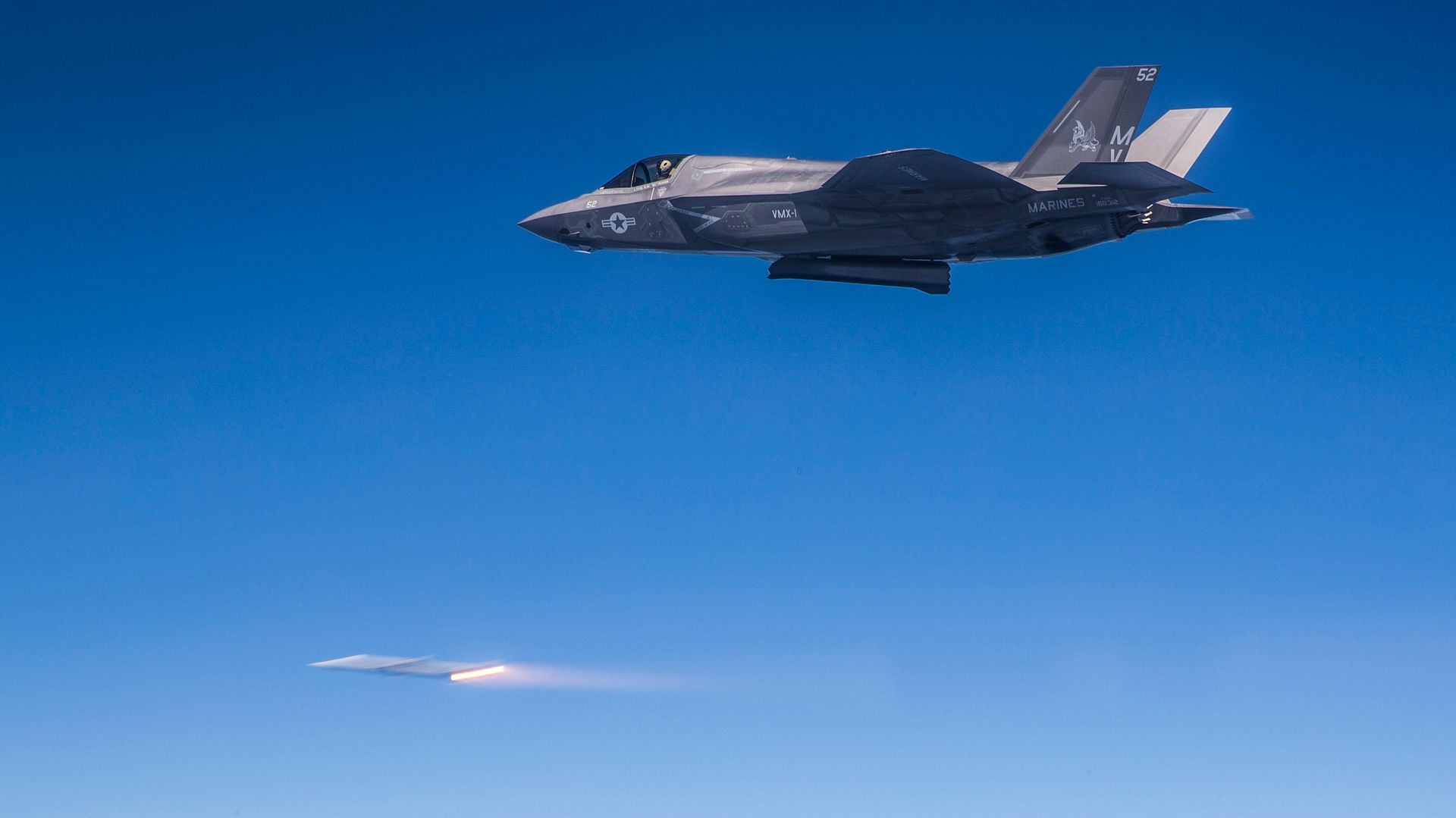
?This was a phenomenally successful deployment that was made possible by the close coordination between the JSF Operational Test Team, U.S. Air Force, Navy, Marine Corps and industry,? Rusnok said.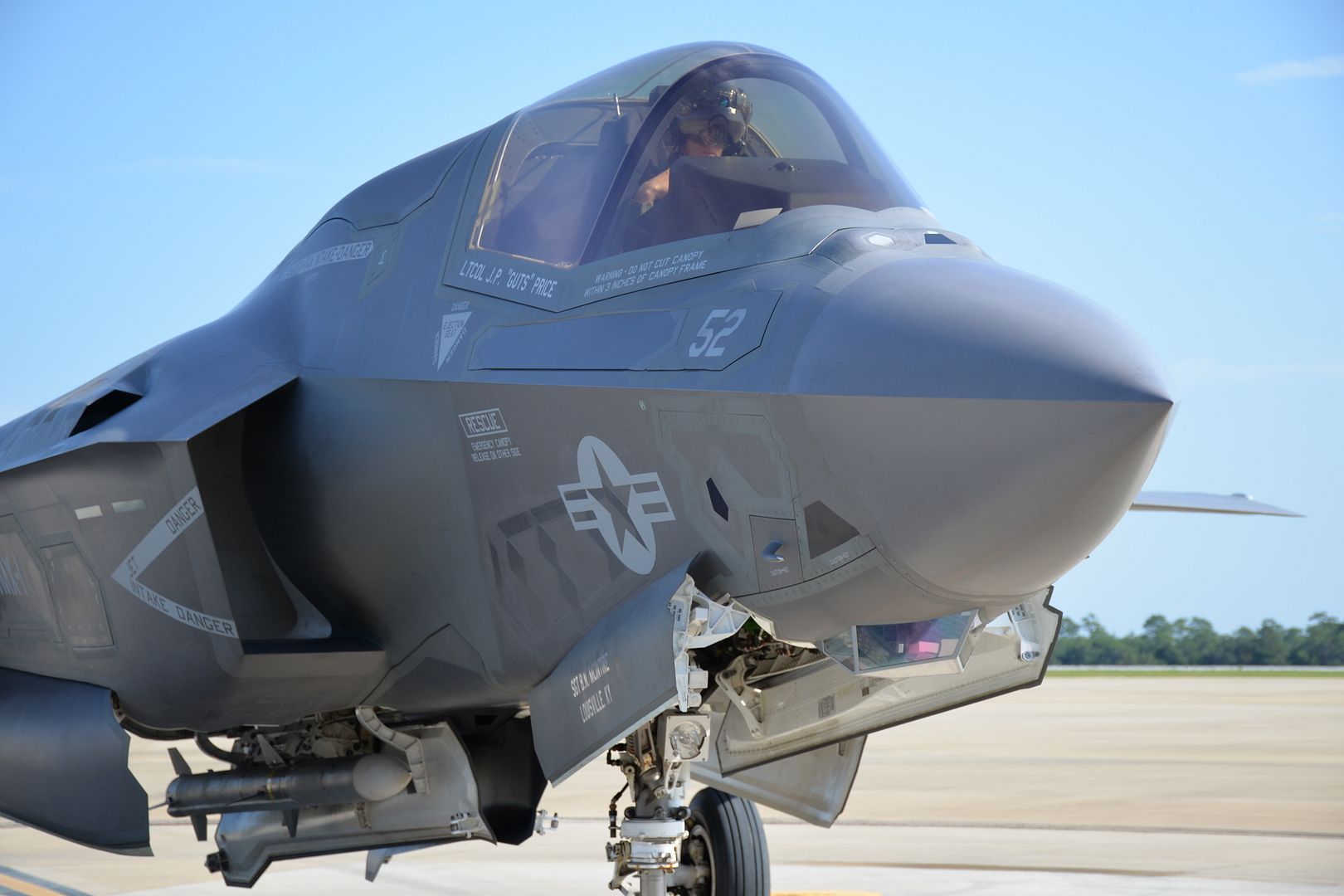
A B-1B Lancer from the 7th Bomb Wing, Dyess Air Force Base, Texas, Air Force Global Strike Command, taxis down the runway on Sep. 5, 2016 as the first day of participation in Exercise Ample Strike 2016, an annual Czech Republic-led exercise with 300 participants from 18 countries scheduled for Sept. 5-16. (U.S. Air Force photo by 1st Lt. Monique Roux/Released)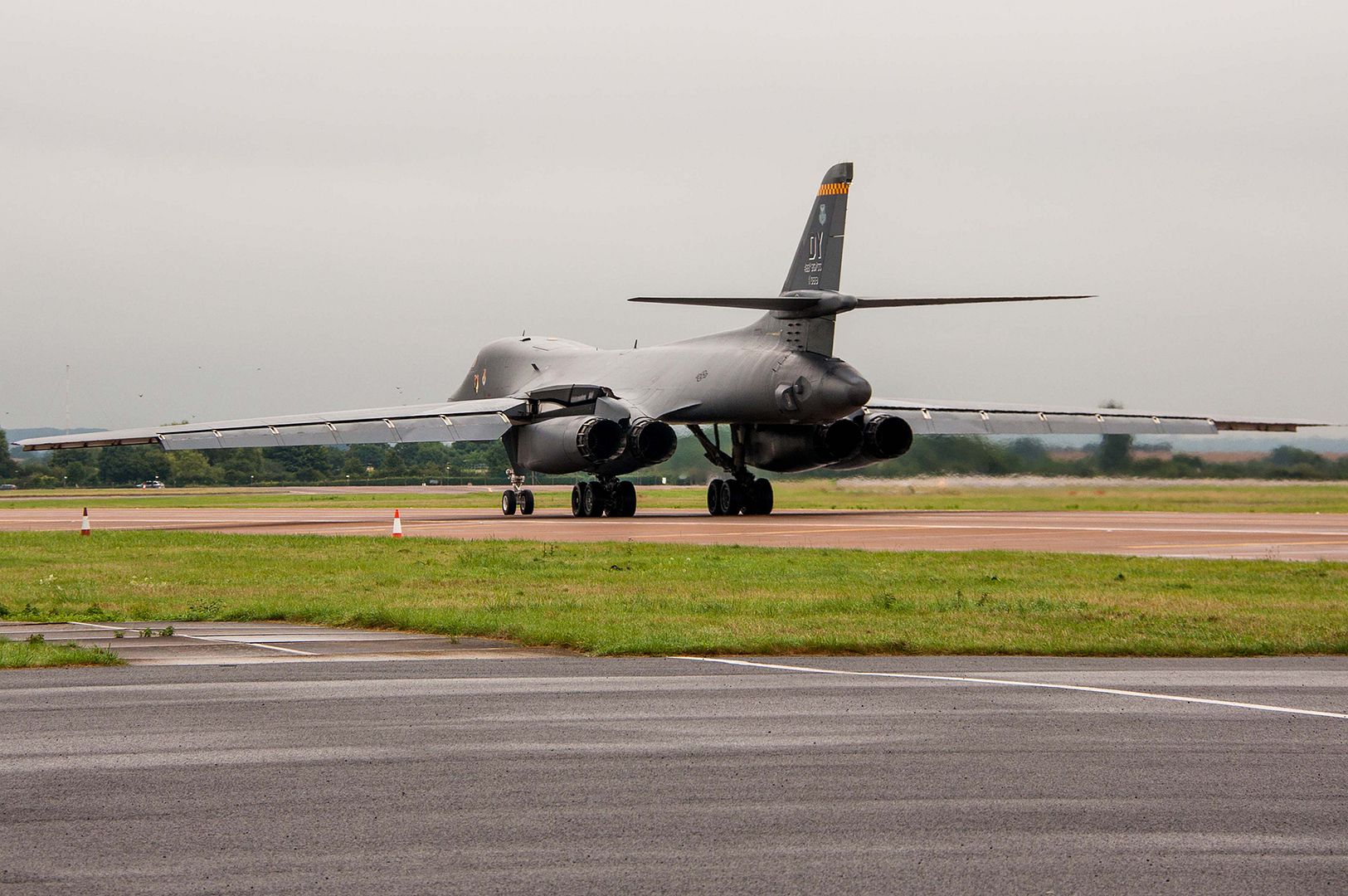
A B-1B Lancer from the 7th Bomb Wing, Dyess Air Force Base, Texas, Air Force Global Strike Command, takes to the skies on Sep. 5, 2016 as the first day of participation in Exercise Ample Strike 2016, an annual Czech Republic-led exercise with 300 participants from 18 countries scheduled for Sept. 5-16. (U.S. Air Force photo by 1st Lt. Monique Roux/Released)
7 September 2016 Press Release
AirAsia has taken delivery of its first A320neo at a dedicated ceremony in Hamburg. The aircraft is the first CFM International LEAP-1A powered A320neo in South East Asia and the second worldwide. Equipped with a Space Flex Cabin for an optimal passenger comfort and efficiency, the aircraft is configured with 186 seats.
AirAsia is Airbus? biggest airline customer for the A320 Family with a total of 575 aircraft ordered. Of these, 404 are A320neo Family, following the airline?s latest firm order for 100 A321neo aircraft placed at the recent Farnborough Airshow.
The A320neo Family is the world?s best-selling and most fuel efficient single aisle aircraft Family. The A320neo provides operators with double digits improvements in fuel consumption and CO2 emissions - with a 15% reduction at entry into service and up to a 20% reduction by 2020.
The A320neo Family incorporates the very latest technologies including new generation engines and Sharklet wing tip devices. With nearly 4800 orders received from 87 customers since its launch in 2010, the A320neo Family has captured some 60 percent share of the market. The Airbus? A320neo Family offers unmatched comfort in all classes and Airbus? 18-inch wide seats in economy as standard. This aircraft is the 17th A320neo delivered to date.
The New South Wales Rural Fire Service (NSW RFS) will once again be supported by RAAF Base Richmond for the 2016/17 bushfire season, with the arrival of the Large Air Tanker 'Thor'. A converted C-130 Hercules, Thor will be operated under contract to the NSW Government, and has a capacity to deliver 15,000 litres of water, and can also be used to deliver fire retardant. Thor will be joined at RAAF Base Richmond in November by a Very Large Air Tanker, with the two aircraft being part of a two-year trial by the NSW RFS. On launching from RAAF Base Richmond can reach any part of the state within an hour.
RAAF Base Richmond will provide the aircrew and NSW RFS with aircraft parking and security, access to fuel and refuelling facilities, equipment storage, use of resources including water, aircrew office space, and meals and accommodation for up to 20 people, as required. Facilitating the aircraft at RAAF Base Richmond is intended to maximise aircraft utility and provide access to all areas of NSW in the event of a bush fire emergency.
-
8 years agoSat Sep 10 2016, 05:09pm
 Main AdminCAPE CANAVERAL AIR FORCE STATION, Fla. (AFNS) -- The 45th Space Wing supported NASA?s successful launch of the Origins, Spectral Interpretation, Resource Identification, Security-Regolith Explorer (OSIRIS-Ex) spacecraft aboard a United Launch Alliance Atlas V rocket from Space Launch Complex 41 here Sept. 8.
Main AdminCAPE CANAVERAL AIR FORCE STATION, Fla. (AFNS) -- The 45th Space Wing supported NASA?s successful launch of the Origins, Spectral Interpretation, Resource Identification, Security-Regolith Explorer (OSIRIS-Ex) spacecraft aboard a United Launch Alliance Atlas V rocket from Space Launch Complex 41 here Sept. 8.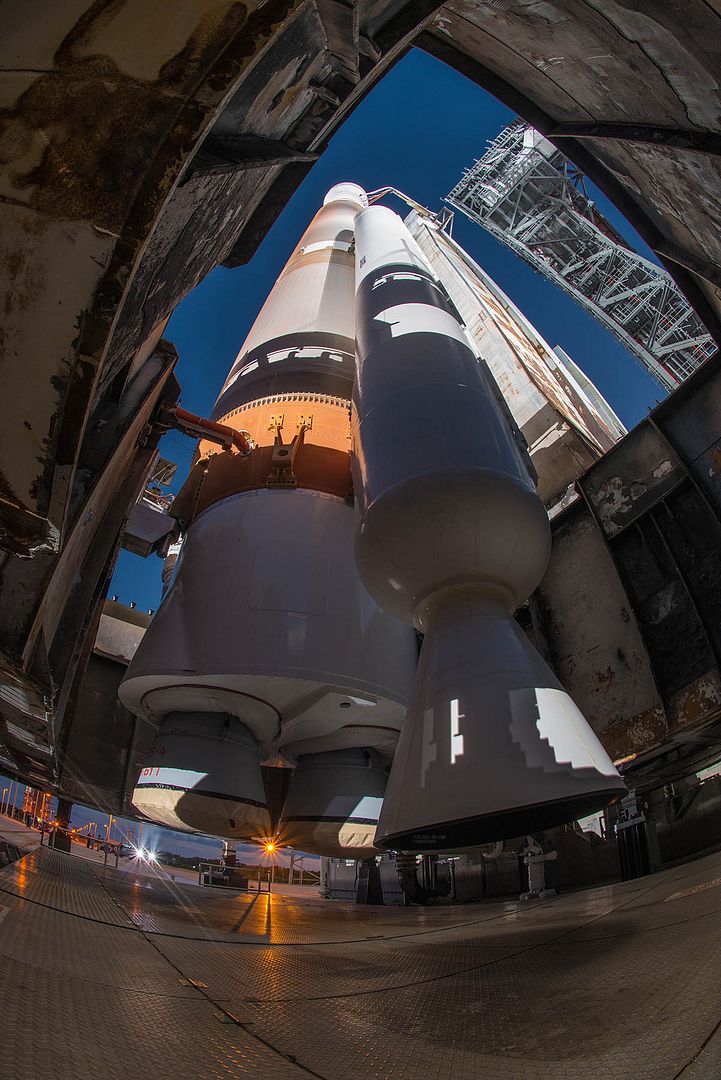
The ULA Atlas V rocket is carrying NASA?s OSIRIS-REx on the first U.S. mission that will travel to near-Earth asteroid Bennu to collect surface samples. As planned, the spacecraft will reach its asteroid target in 2018 and return a sample to Earth in 2023, according to NASA.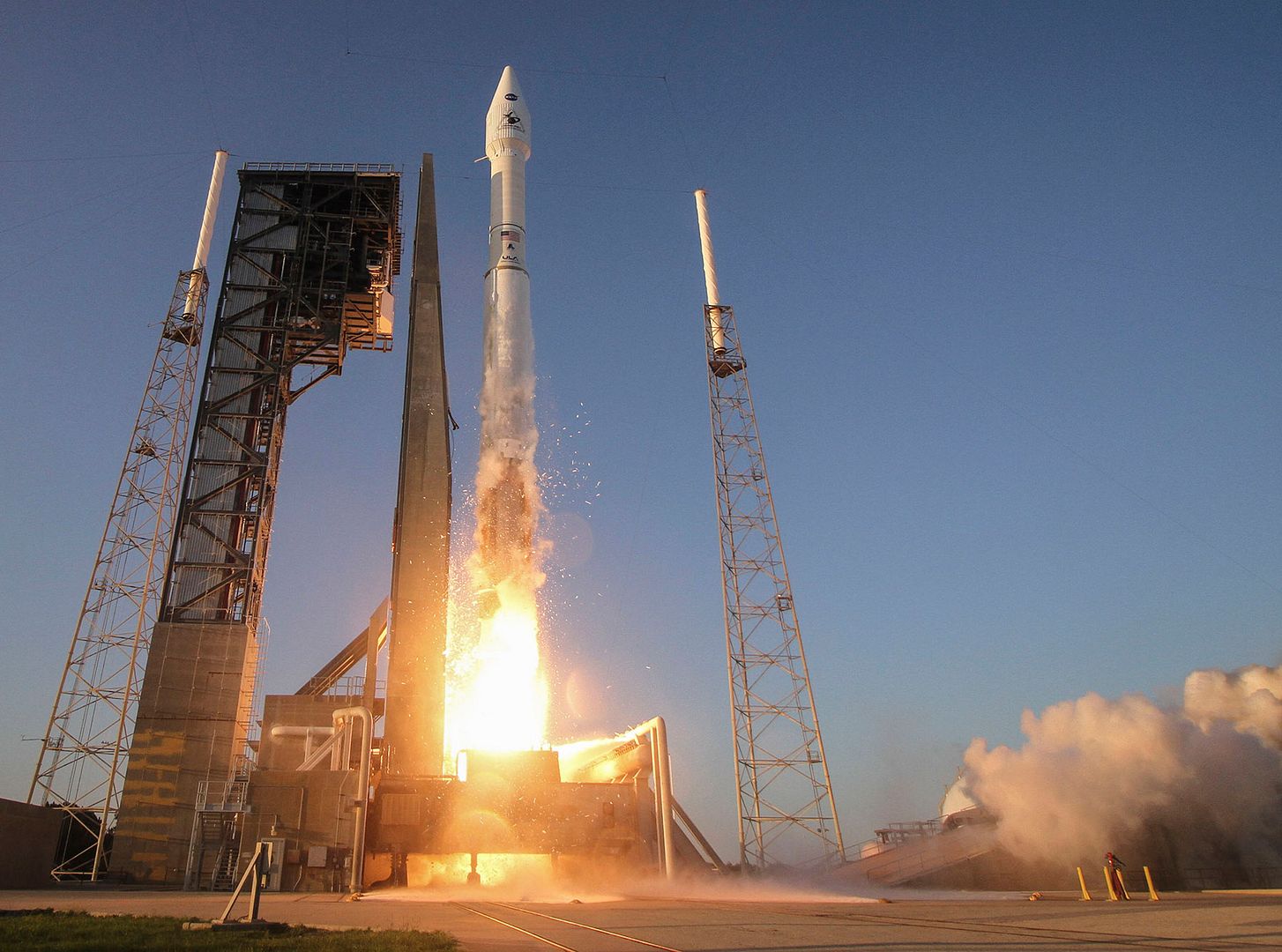
?Congratulations to ULA, NASA and the entire integrated team who ensured the success of this launch,? said Col. Walt Jackim, the 45th SW vice commander and mission launch decision authority. ?We truly have a tremendous space team supporting this historic mission -- the first since the Apollo program where we will bring a sample back from space. It?s my honor to be a part of this mission supporting the space industry. Assured access to space is a team sport and here on the Eastern Range, we continue to prove we are the ?world?s premier gateway to space.??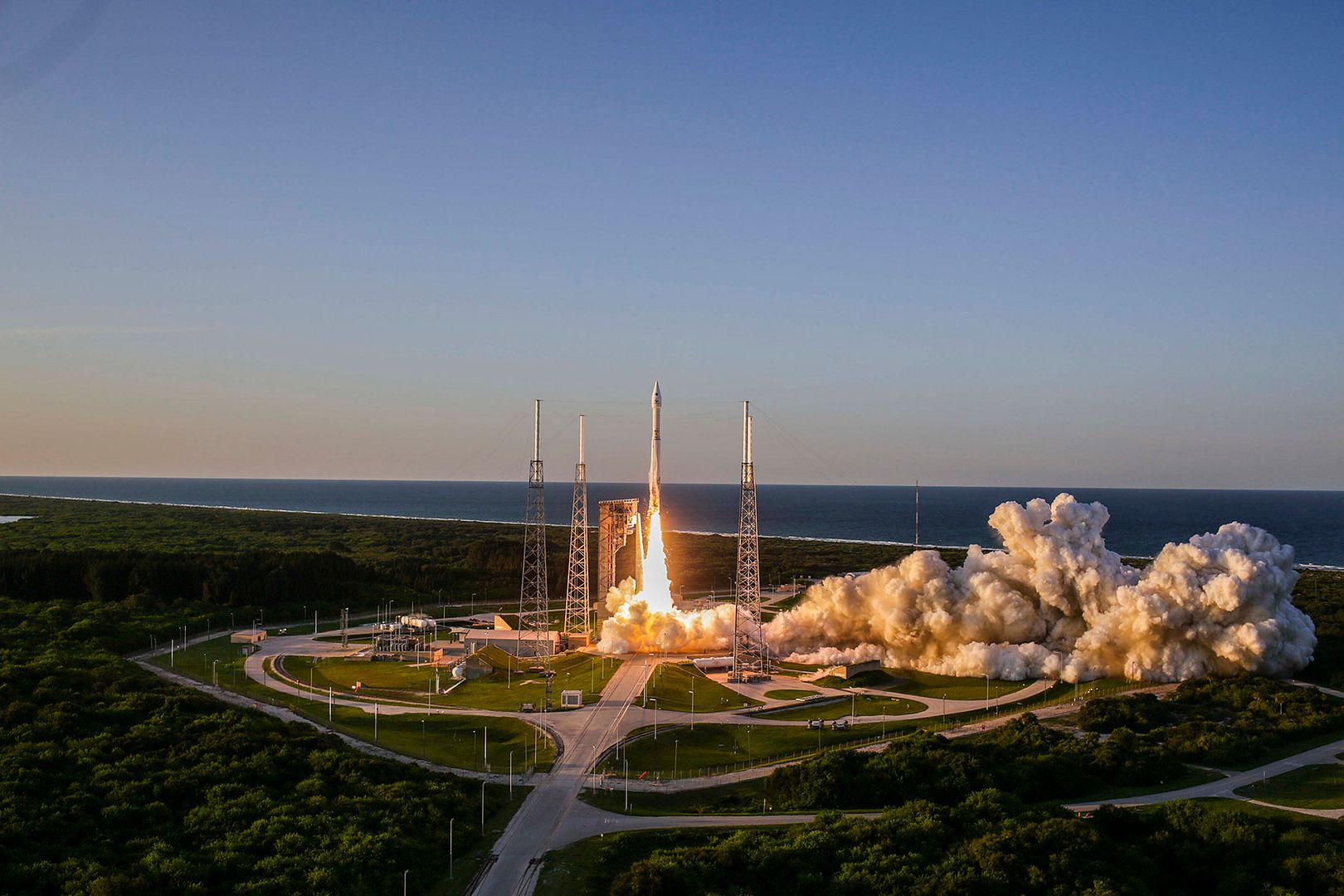
A Coast Guard Air Station Kodiak MH-60 Jayhawk hovers above a downed De Havilland DHC-2 float plane that crashed near Uganik Lake on Kodiak Island, Alaska, Sept. 9, 2016. Air Station Kodiak rescued three people aboard the aircraft. U.S. Coast Guard photo.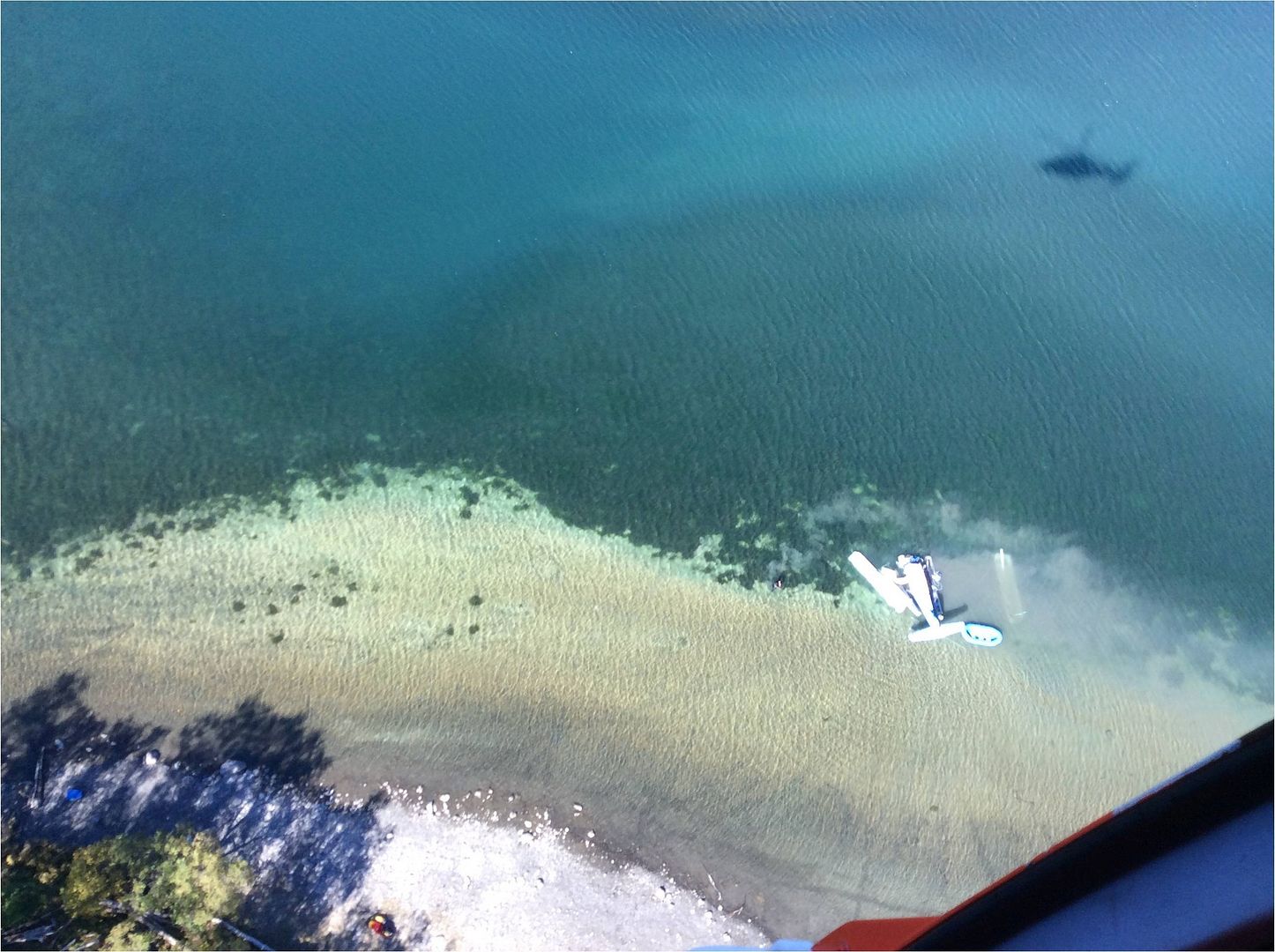
NEWPORT, R.I. (Sept. 8, 2016)
Not aviation but fascinating
The guided-missile destroyer Pre-Commissioning Unit (PCU) Zumwalt (DDG 1000) arrives at Naval Station Newport, Rhode Island during its maiden voyage from Bath Iron Works Shipyard in Bath, Maine. The port visit marks Zumwalt's first stop before the ship ultimately sails to her new homeport of San Diego. During the transit, the ship is scheduled to take part in training operations, a commissioning ceremony in Baltimore and various additional port visits. Zumwalt is named for former Chief of Operations Elmo R. Zumwalt and is the first in a three-ship class of the Navy's newest, most technologically advanced multi-mission guided-missile destroyers. U.S. Navy photo by Chief Mass Communication Specialist James E. Foehl (Released)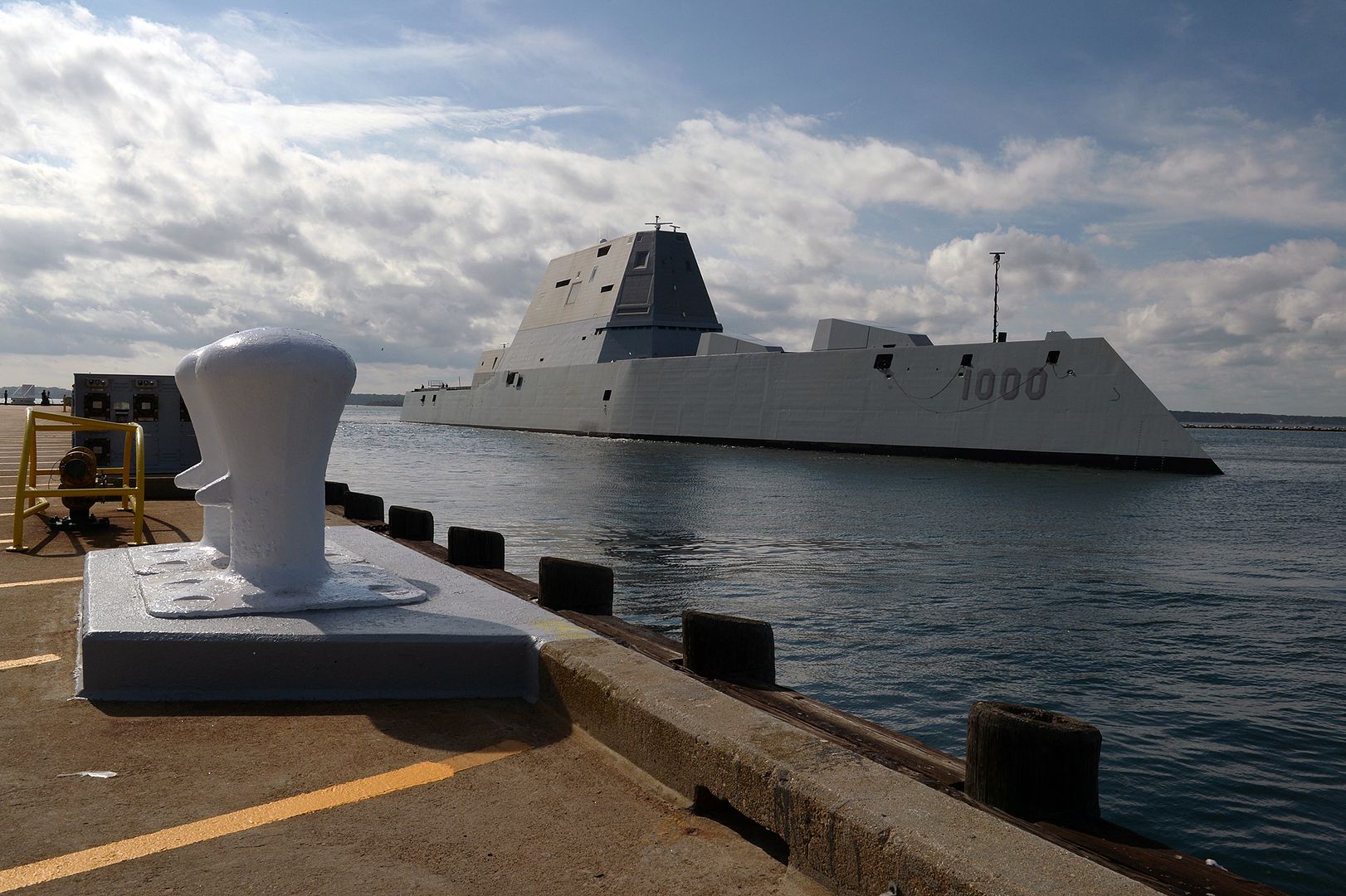
Vandenberg air force Base, Calif., Sept. 8, 2016 ? The WorldView-4 satellite, built by Lockheed Martin (NYSE: LMT) for DigitalGlobe, Inc. (NYSE: DGI), has been encapsulated in its protective launch vehicle fairing. It is scheduled to launch Sept. 16 aboard a United Launch Alliance Atlas V rocket.
For encapsulation, WorldView-4 was connected to an adapter and then enclosed in the four-meter fairing or ?nose cone.? The satellite will now be transported by truck to Vandenberg Air Force Base?s Space Launch Complex 3 East where it will be lifted by crane and mated with the Atlas rocket.
?Encapsulation is the last time people will ever lay eyes on this satellite before it launches to space,? said Steve Skladanek, president of Lockheed Martin Commercial Launch Services. ?Our Atlas rocket is ready to provide WorldView-4 a smooth ride and precise delivery into orbit.?
The Atlas V 401 rocket is provided by Lockheed Martin Commercial Launch Services. WorldView-4 is the latest in a series of imaging and data satellites built by Lockheed Martin for customers around the world.
Once launched, the satellite will more than double DigitalGlobe?s coverage of the world?s highest-resolution 30 cm commercial satellite imagery and increase the rate at which it grows its 16-year library of time-lapse, high-resolution imagery. WorldView-4 will orbit Earth every 90 minutes, traveling 17,000 miles per hour and capturing as much as 680,000 square kilometers of the Earth?s surface daily (18 terabytes) ? the equivalent of the land area of Texas.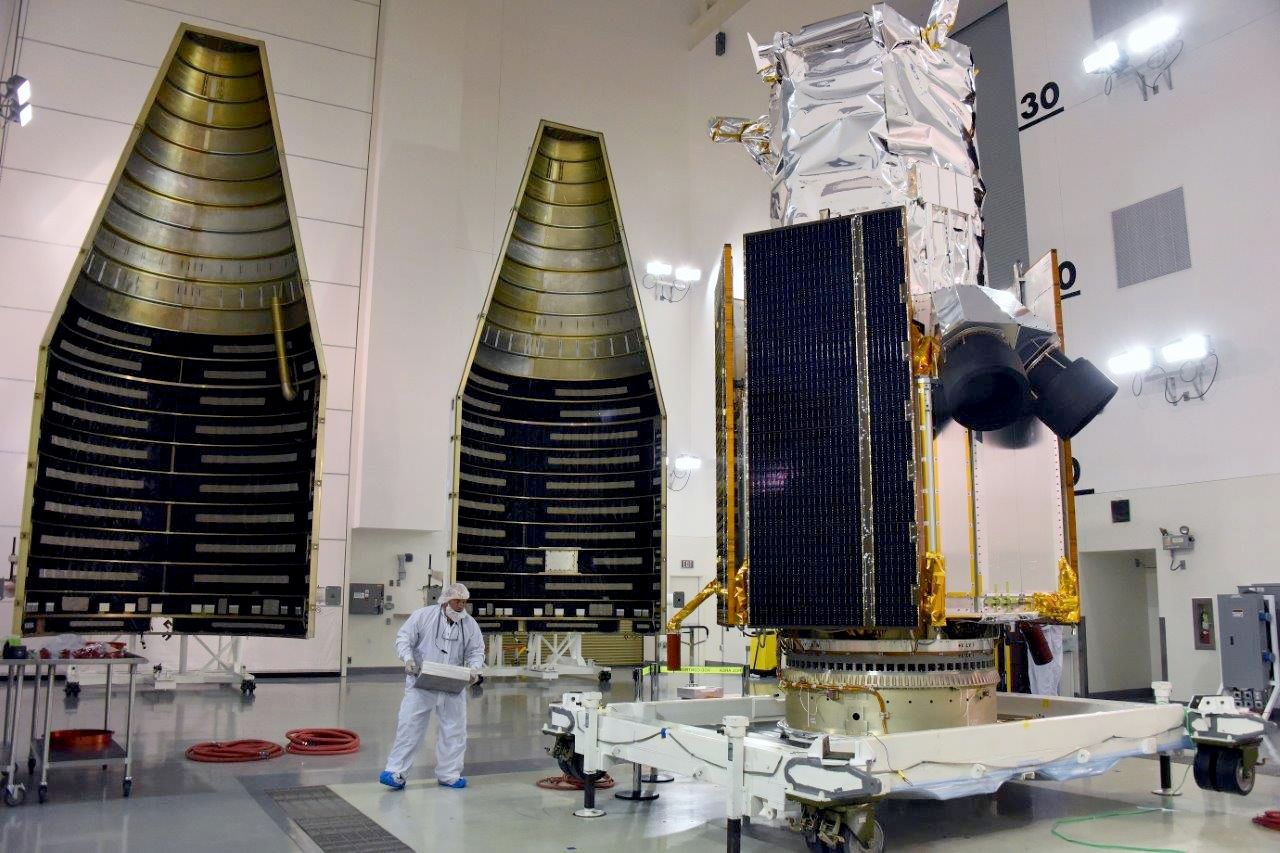
A California Air National Guard F-15C Eagle remains parked on the flightline at Graf Ignatievo, Bulgaria, Sept. 7, 2016. Four F-15Cs assigned to the 194th Expeditionary Fighter Squadron will conduct joint NATO air policing missions with the Bulgarian air force to police the host nation?s sovereign airspace Sept. 9-16, 2016. The squadron forward deployed to Graf Ignatievo from Campia Turzii, Romania, where they serve on a theater security package deployment to Europe as a part of Operation Atlantic Resolve. (U.S. Air Force photo by Staff Sgt. Joe W. McFadden)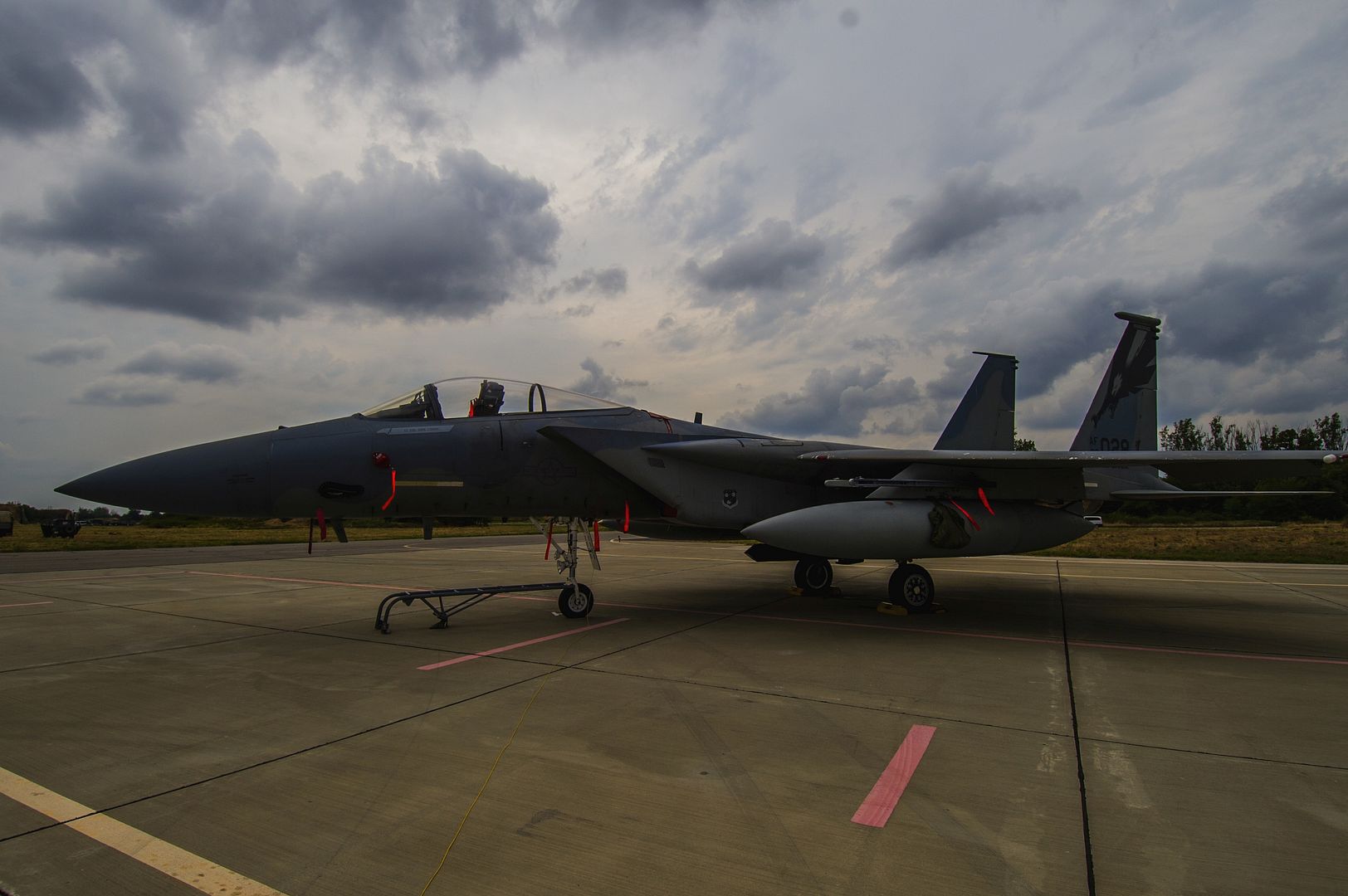
A Bulgarian air force Mikoyan MiG-29 Fulcrum fighter aircraft assigned to the 3rd Air Force Base flies over the flightline during joint NATO air policing at Graf Ignatievo, Bulgaria, Sept. 8, 2016. Four California and Massachusetts Air National Guards? F-15C Eagle fighter aircraft and approximately 75 Airmen from the 194th Expeditionary Fighter Squadron deployed to Graf Ignatievo, Bulgaria, and will stand ready as interceptors, prepared to quickly react to any violations and infringements for policing of Bulgarian airspace Sept. 9-16, 2016. The squadron forward deployed to Graf Ignatievo from Campia Turzii, Romania, where they serve on a theater security package deployment to Europe as a part of Operation Atlantic Resolve. (U.S. Air Force photo by Staff Sgt. Joe W. McFadden/Released)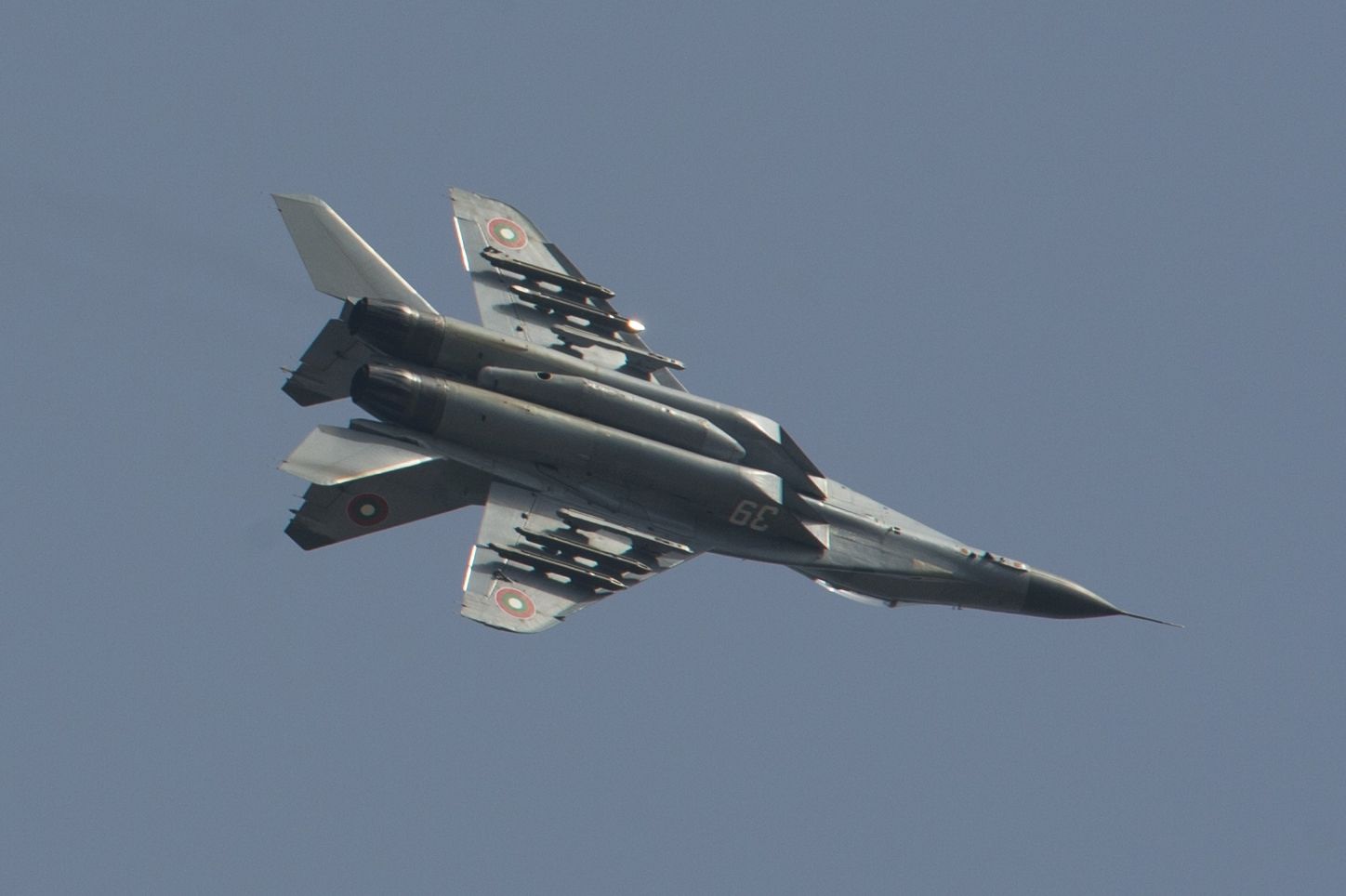
Two Bulgarian air force Mikoyan MiG-29 fighter aircraft assigned to the 3rd Air Force Base take off from the flightline at Graf Ignatievo, Bulgaria, Sept. 8, 2016. Four F-15C Eagle fighter aircraft from the 194th Expeditionary Fighter Squadron will conduct joint NATO air policing missions with the Bulgarian air force to police the host nation?s sovereign airspace Sept. 9-16, 2016. The squadron forward deployed to Graf Ignatievo from Campia Turzii, Romania, where they serve on a theater security package deployment to Europe as a part of Operation Atlantic Resolve. (U.S. Air Force photo by Staff Sgt. Joe W. McFadden)
A Massachusetts Air National Guard F-15C Eagle fighter aircraft takes off at Graf Ignatievo, Bulgaria, Sept. 8, 2016. Four of the 194th Expeditionary Fighter Squadron?s F-15Cs will conduct joint NATO air policing missions with the Bulgarian air force to police the host nation?s sovereign airspace Sept. 9-16, 2016. The squadron forward deployed to Graf Ignatievo from Campia Turzii, Romania, where they serve on a theater security package deployment to Europe as a part of Operation Atlantic Resolve. (U.S. Air Force photo by Staff Sgt. Joe W. McFadden)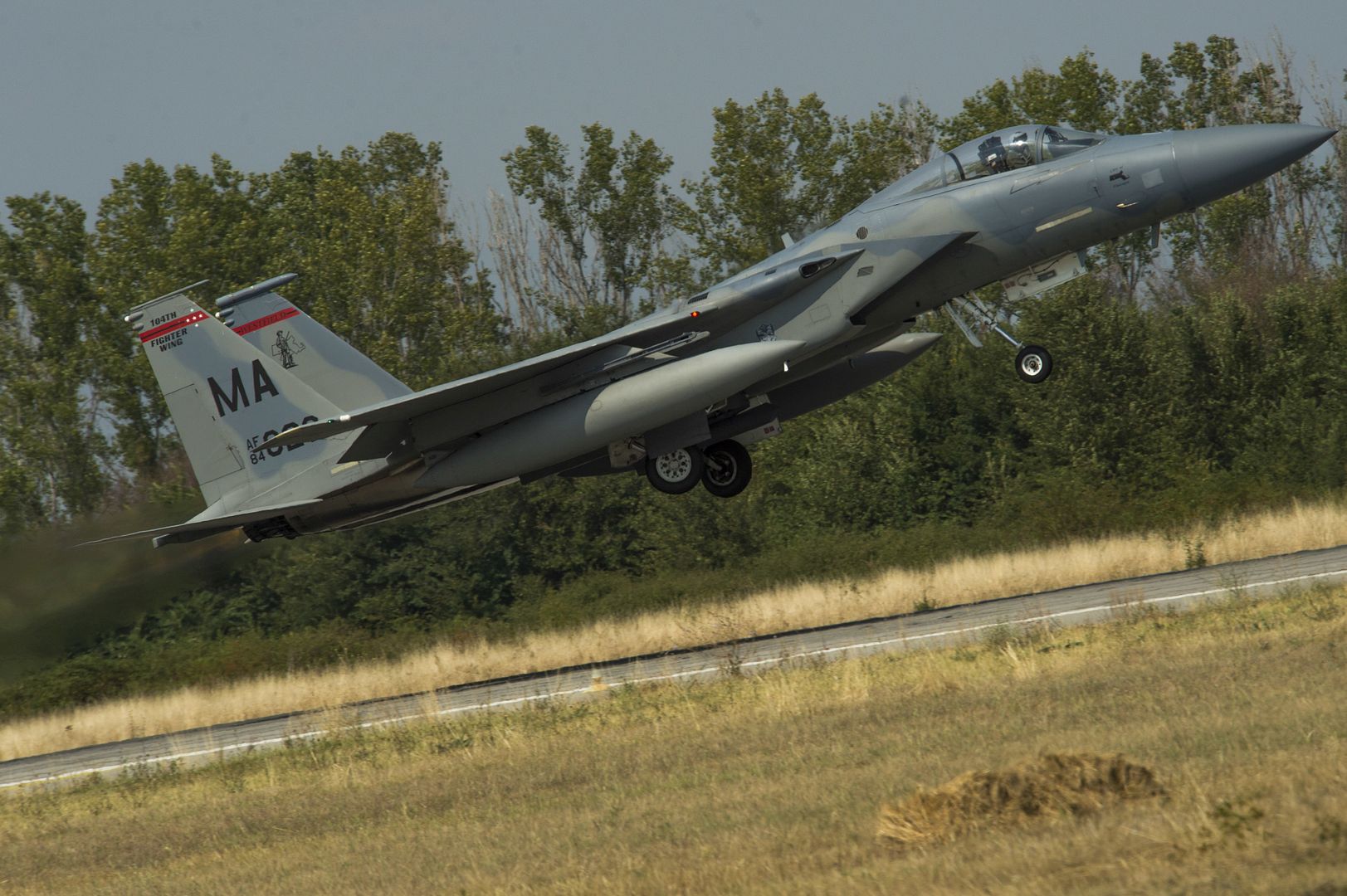
A California Air National Guard F-15C Eagle lands on the flightline at Graf Ignatievo, Bulgaria, Sept. 8, 2016. Four of the 194th Expeditionary Fighter Squadron?s F-15Cs will conduct joint NATO air policing missions with the Bulgarian air force to police the host nation?s sovereign airspace Sept. 9-16, 2016. The squadron forward deployed to Graf Ignatievo from Campia Turzii, Romania, where they serve on a theater security package deployment to Europe as a part of Operation Atlantic Resolve. (U.S. Air Force photo by Staff Sgt. Joe W. McFadden)
A Bulgarian air force Mikoyan MiG-29 Fulcrum fighter aircraft assigned to the 3rd Air Force Base flies releases its parachute during a landing on the flightline during joint NATO air policing at Graf Ignatievo, Bulgaria, Sept. 8, 2016. Four California and Massachusetts Air National Guards? F-15C Eagle fighter aircraft and approximately 75 Airmen from the 194th Expeditionary Fighter Squadron deployed to Graf Ignatievo, Bulgaria, and will stand ready as interceptors, prepared to quickly react to any violations and infringements for policing of Bulgarian airspace Sept. 9-16, 2016. The squadron forward deployed to Graf Ignatievo from Campia Turzii, Romania, where they serve on a theater security package deployment to Europe as a part of Operation Atlantic Resolve. (U.S. Air Force photo by Staff Sgt. Joe W. McFadden/Released)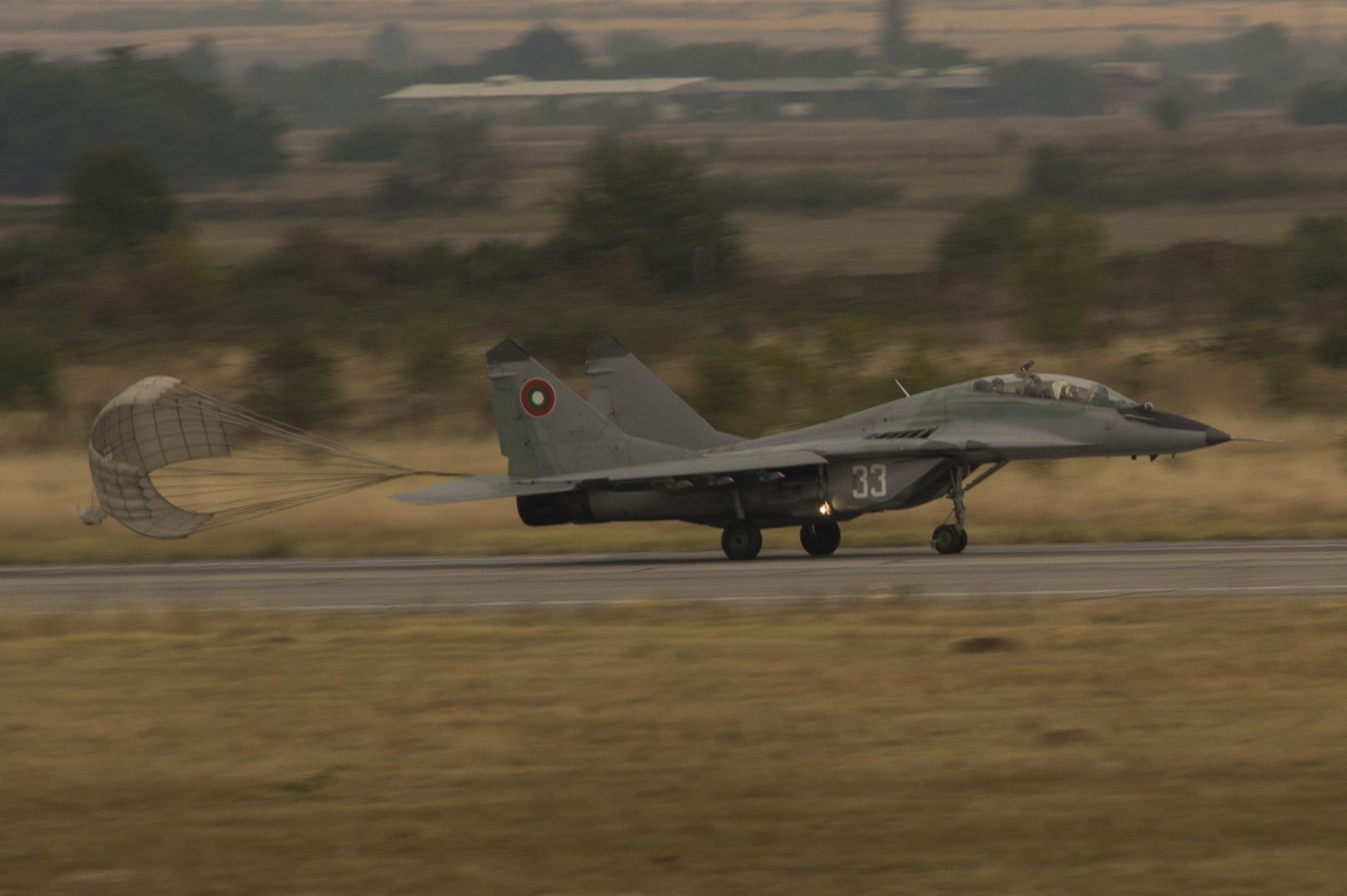
-
 Main AdminARABIAN GULF (Sept. 11, 2016) A C2-A Greyhound assigned to the Rawhides of Fleet Logistics Support Squadron (VRC) 40 prepares to make an arrested landing on the flight deck of the aircraft carrier USS Dwight D. Eisenhower (CVN 69) (Ike). Ike and its Carrier Strike Group are deployed in support of Operation Inherent Resolve, maritime security operations and theater security cooperation efforts in the U.S. 5th Fleet area of operations. (U.S. Navy photo by Mass Communication Specialist 3rd Class Nathan T. Beard)
Main AdminARABIAN GULF (Sept. 11, 2016) A C2-A Greyhound assigned to the Rawhides of Fleet Logistics Support Squadron (VRC) 40 prepares to make an arrested landing on the flight deck of the aircraft carrier USS Dwight D. Eisenhower (CVN 69) (Ike). Ike and its Carrier Strike Group are deployed in support of Operation Inherent Resolve, maritime security operations and theater security cooperation efforts in the U.S. 5th Fleet area of operations. (U.S. Navy photo by Mass Communication Specialist 3rd Class Nathan T. Beard)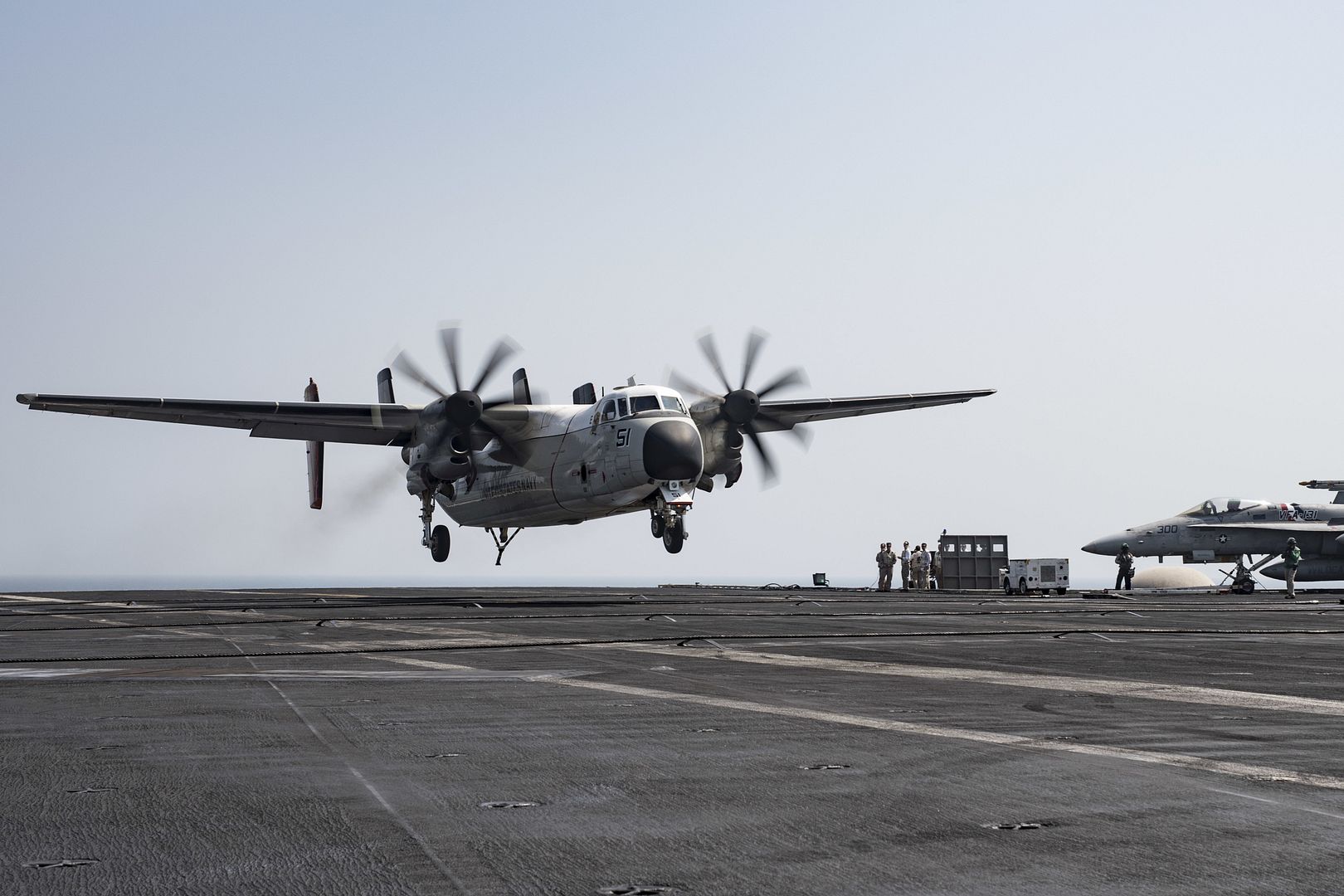
Portland Pilots join Sentry Aloha
by Technical Sgt. Emily Thompson
142nd Fighter Wing Public Affairs
9/11/2016 - JOINT BASE PEARL HARBOR-HICKAM, Hawaii -- Hawaii, is known for its prime vacation destination, known for the amazing ocean views and the sweet smell of flowers. It's also a great location for military training. Sentry Aloha is an exercise that provides the opportunity for numerous pilots from a variety of aircraft, to train together in a large exercise with vast air space and little travel time.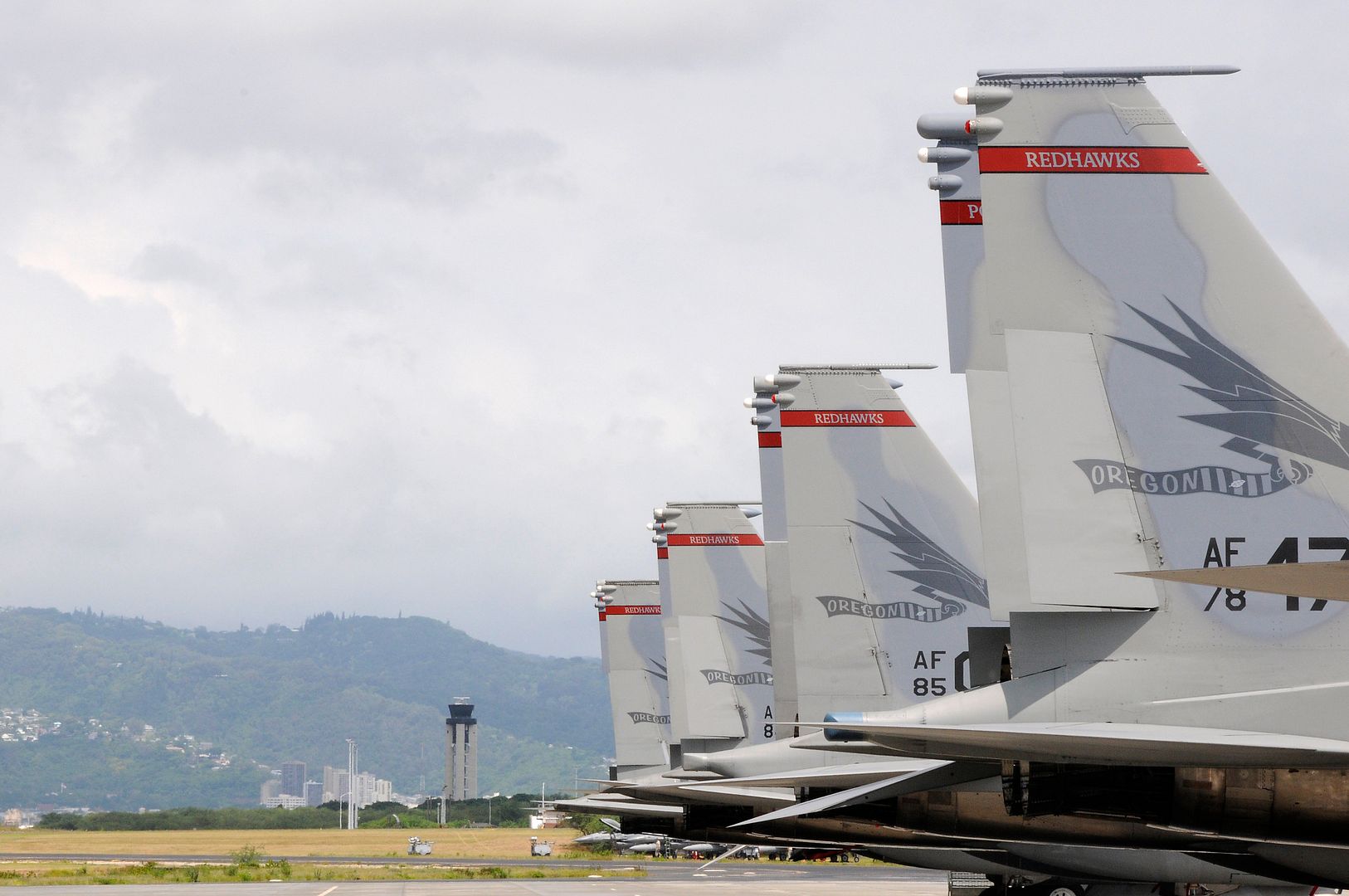
"Sentry Aloha is a National Guard Bureau funded exercise, designed to increase combat readiness," said Major Ryan "Jipsy" Itoman, 199th Fighter Squadron pilot, Hawaiian Air National Guard, and the officer in charge of Sentry Aloha.
This exercise is comprised of a variety of aircraft, which includes the F-16 Falcon from Texas, F-15 Eagle from Oregon, Japan, and Mississippi, KC-135 Stratotankers from Ohio and Utah, and C-130 Hercules from Georgia and Kentucky. The Hawaiian Air National Guard featured the F-22 Raptors and the KC-135s.
"It's an educational experience for visiting pilots," said Itoman. "The focus for Sentry Aloha is the Pacific Command's area of responsibility. We have the largest surface to air space and the air space is vast."
Itoman went on to state the uniqueness of this exercise because of their ability to tailor the mission and limiting the amount of participants.
"We limit the amount of participants so that units can fly the way they want, as opposed to other exercises where they have more restrictions, and everyone likes to deploy to Hawaii," he said.
The military provides numerous exercises throughout the year, such as Red Flag in Las Vegas and Sentry Savannah in Georgia. These exercises provide pilots with training on various missions and tactical maneuvers.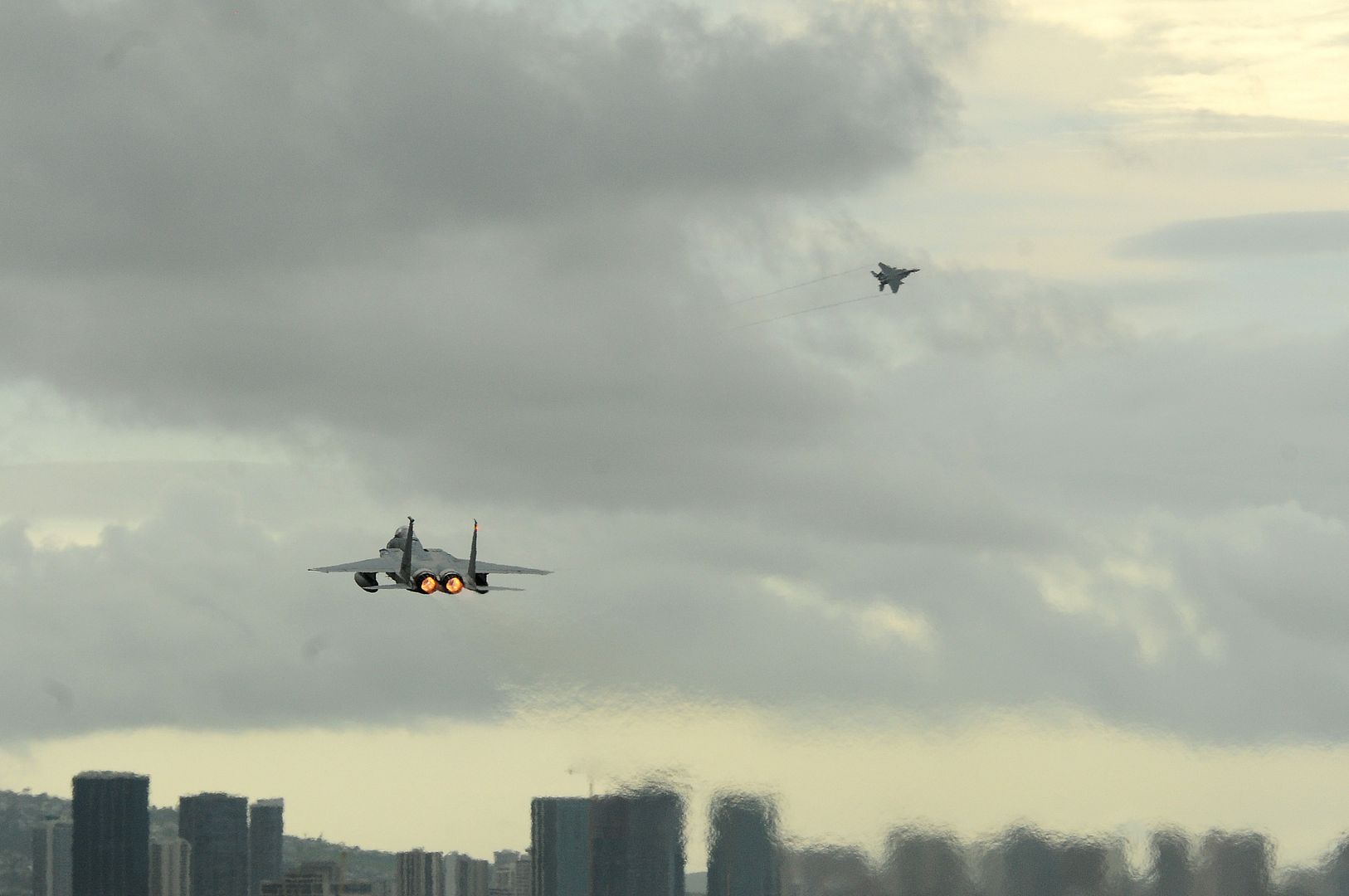
"This exercise is a local exercise to Portland to practice fighter integration and offensive/defensive fighter air scenarios," said Major Jared "Dirty" Aranda, 142nd Fighter Wing pilot, Portland Air National Guard, and weapons officer. "In Portland, we're limited to the kind of fighting we can do."
In a wartime situation, pilots would use defensive-air tactics to protect a target, and offensive-air tactics going out to strike a target.
"We don't have enough airplanes to practice defensive air tactics," said Aranda. "We practice air-to-air at home because that's all that we are capable of performing, so that's why we come out to Sentry Aloha. It's just easier to practice our offensive/defensive air tactics, instead of just tactical intercepts at home."
The benefit of coming to Sentry Aloha is the amount of ramp space and the location of the large air space is closer to the Joint Base Pearl Harbor-Hickam (JBPHH). In that case, it provides the opportunity to have more time to practice fighting tactics and have more use with tanker refueling.
JBPHH is also better equipped to hold more airplanes on the ramp to enhance the exercise scenario. At Portland Air National Guard base, there is simply not enough ramp space for Portland's F-15s and other aircraft.
"This is the kind of training we just can't get at home, we couldn't house as many people in Portland," said Aranda. "The infrastructure here [Hawaii], is just better for us. These new facilities are world class. We have more secure facilities to house space for everyone to brief and debrief. The Total Force Integration, between active duty and the guard, allows them more space and infrastructure."
This is the fourth time Portland ANG has participated in Sentry Aloha. The participation rate has been higher, because of the great training and location.
"I think the biggest thing about Sentry Aloha is they do a great job of allowing individual units to tailor the training," said Aranda. "When you go to red flag, it's such a huge exercise that they already have it set up a certain way. You can't tailor the missions."
The training missions are already built in for exercises like Red Flag and Sentry Savannah. At Sentry Aloha, the missions can be tailored towards the learning objectives and requirements for each specific squadron, and each unit is in charge of their own mission, which makes Sentry Aloha such a valuable exercise.
"I think we will continue to come to this exercise," said Aranda. "It makes us significantly more survivable, and it is excellent training."
(Air National Guard photo's by Tech. Sgt. Emily Thompson/Released)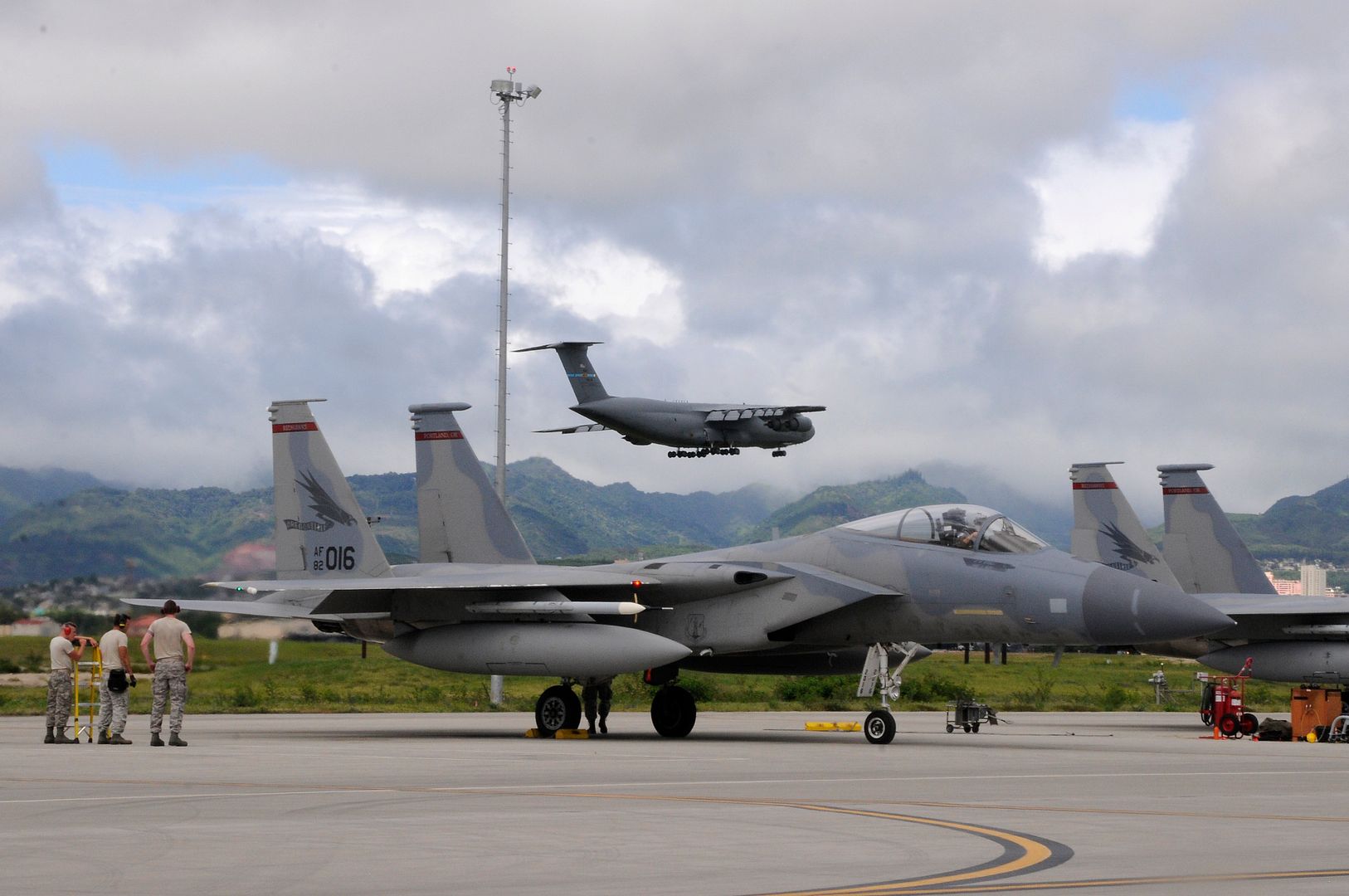
EL SEGUNDO, Calif. and GEORGE TOWN, Grand Cayman, Cayman Islands, Sept. 12, 2016 ? Boeing [NYSE:BA] will build a 702 satellite, called GiSAT, with a new digital payload offering twice the capacity of previous digital payload designs.
The customer, Cayman Islands-based Global IP, will use the satellite to deliver streaming media, digital broadcast and other communications services to Sub-Saharan Africa. With a coverage area encompassing 35 countries and 750 million people, GiSAT will deliver higher data rates at lower costs than previous satellites serving this part of the world.
?Our vision for GiSAT is to provide end users with connectivity and services that are affordable, rich in local content and truly broadband in nature,? said Bahram Pourmand, CEO, Global IP. ?With the ability to reconfigure the GiSAT on-board processor, the Boeing digital payload will allow us to broadcast different channels to different beams from different locations, providing better service to broadcasters, mobile operators and ISPs.?
?Boeing?s latest digital payload ? the most advanced design in the industry ? offers greater flexibility for Global IP's customers,? said Mark Spiwak, president of Boeing Satellite Systems International. ?Boeing is committed to driving innovation in satellite technology so that our customers can bring the benefits of reliable, high-speed communications to people across the globe.?
Scheduled to enter service in 2019, GiSAT is designed to operate with more than 10 gateways in Europe and multiple gateways within Africa.
Privately owned Global IP was founded by three satellite industry veterans with 75 years of combined experience providing satellite products and services in emerging markets. The company CEO, Bahram Pourmand, was until recently Executive Vice President and General Manager, International Division of Hughes Network Systems LLC. The other two founders, Emil Youssefzadeh and Umar Javed were founders and executives of STM, one of the VSAT industry pioneers with a 15 year track record in Africa before sale of STM in 2013 in a private equity transaction.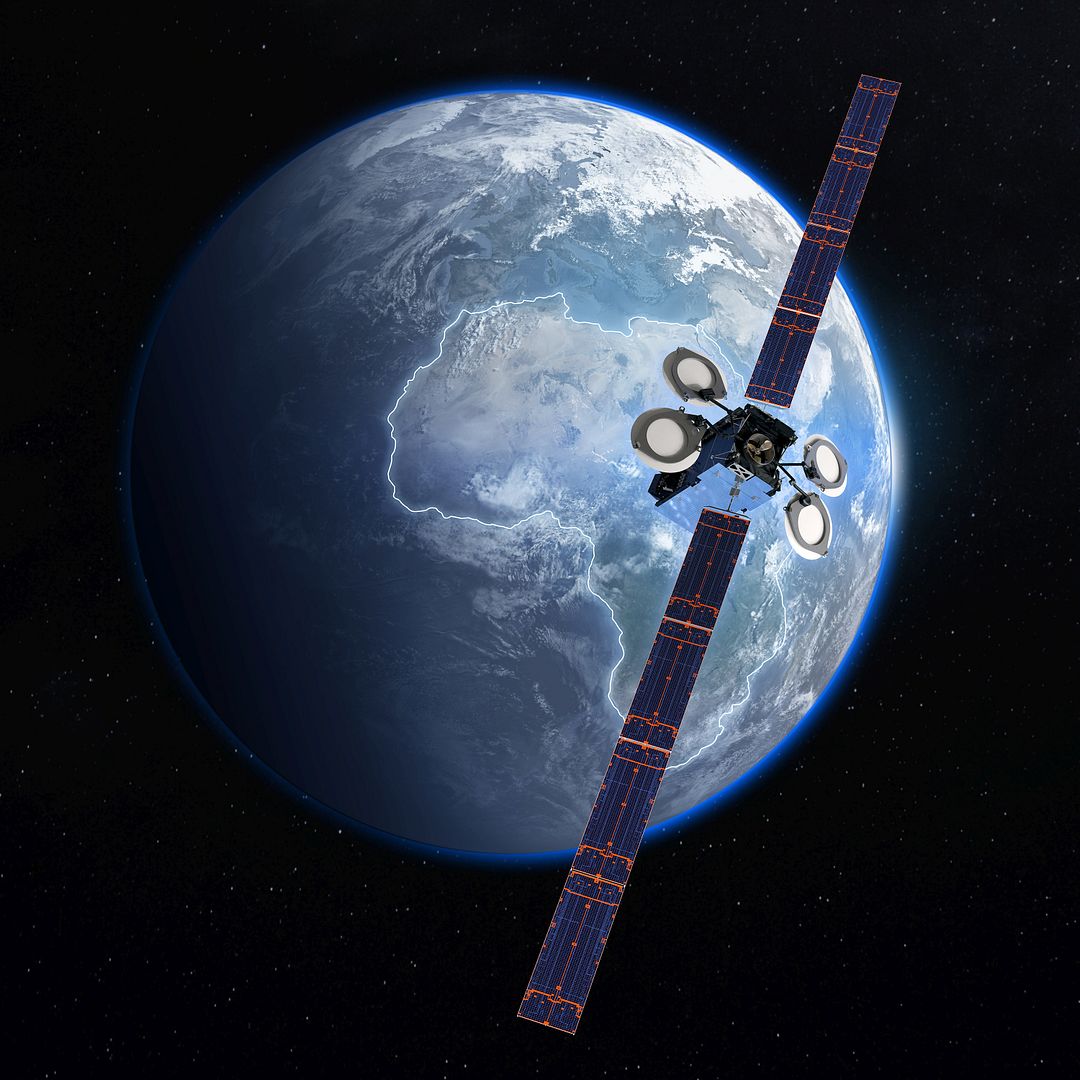
A Royal Australian Air Force (RAAF) C-130J Hercules taxis at RAAF Base Richmond, followed by a Royal Canadian Air Force (RCAF) CC-130J Hercules.
*** Local Caption *** On 9 September 2016, a pair of Hercules transport aircraft - one a Royal Canadian Air Force (RCAF) CC-130J, the other a Royal Australian Air Force (RAAF) C-130J - took to the skies from RAAF Base Richmond in Sydney's northwest for a tactical formation mission. The flight included an opportunity for both countries to demonstrate their formation flying practices to one another, as well as capture photos of the RCAF CC-130J with Sydney's Harbour and Beaches in the background. The flight capped off a week-long visit by the RCAF to RAAF Base Richmond, during which time crews from both countries shared knowledge of how they operate their Hercules.
A Royal Australian Air Force (RAAF) C-130J Hercules taxis at RAAF Base Richmond, followed by a Royal Canadian Air Force (RCAF) CC-130J Hercules.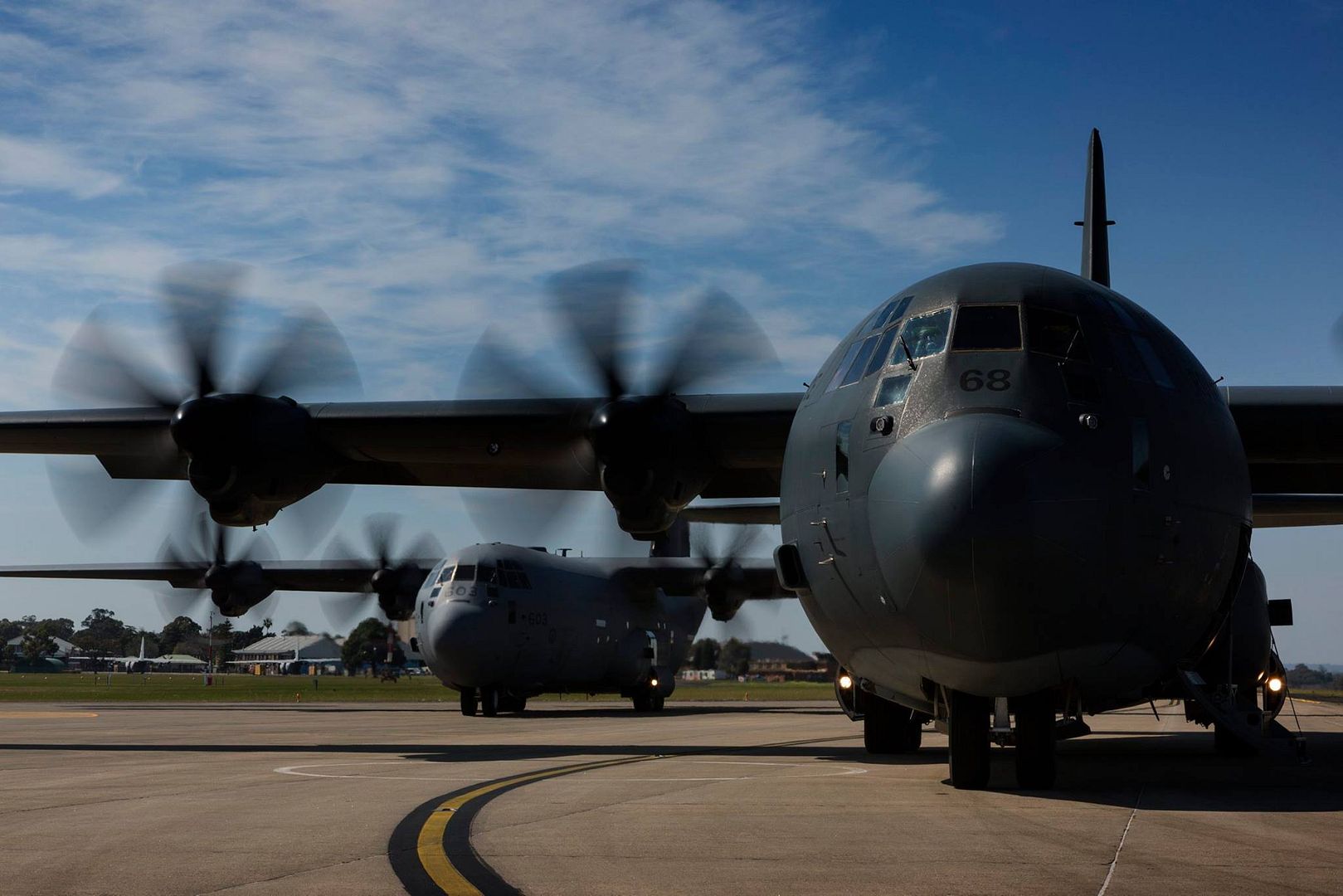
A Royal Canadian Air Force (RCAF) CC-130J Hercules over the Sydney coast, near Bondi Beach.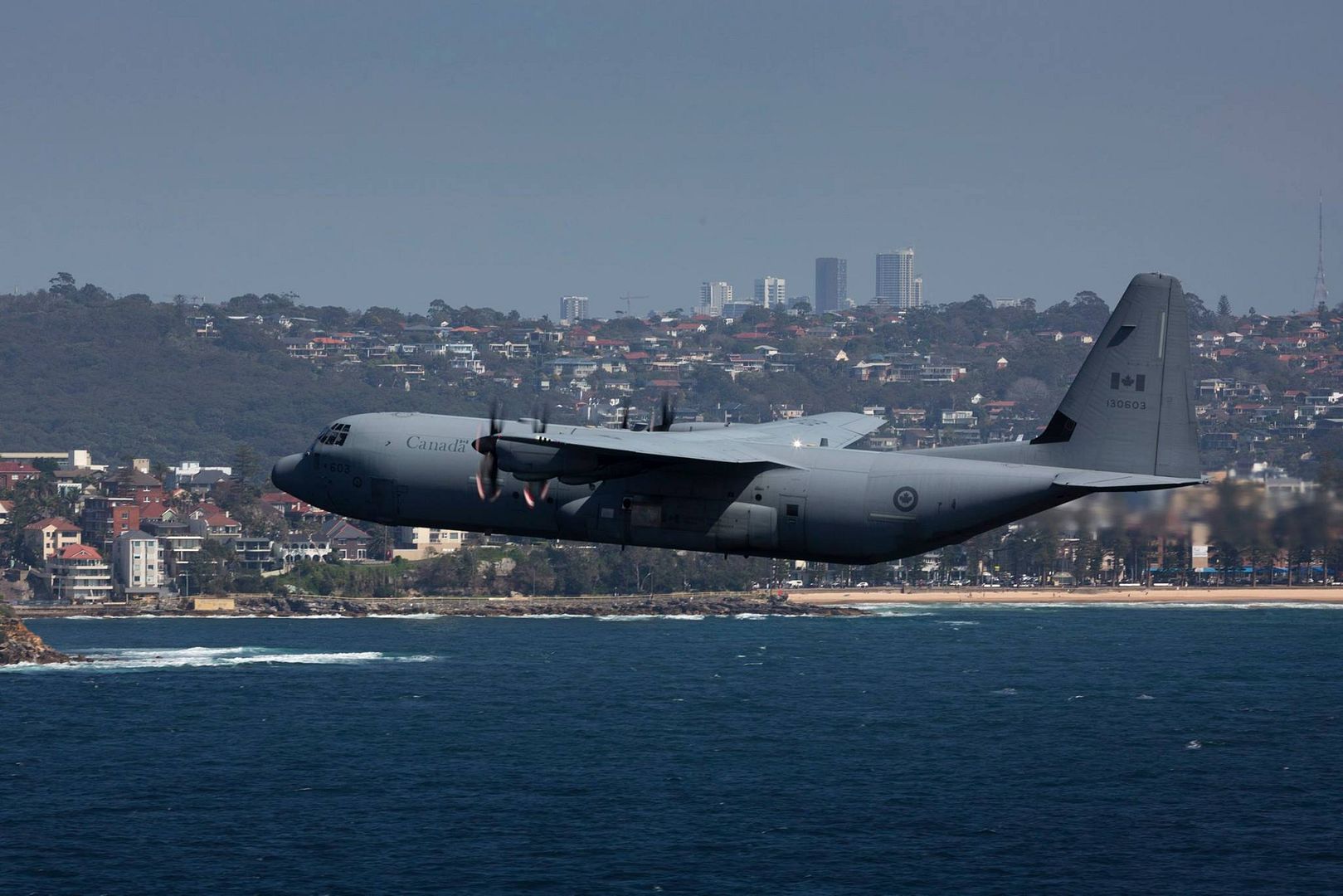
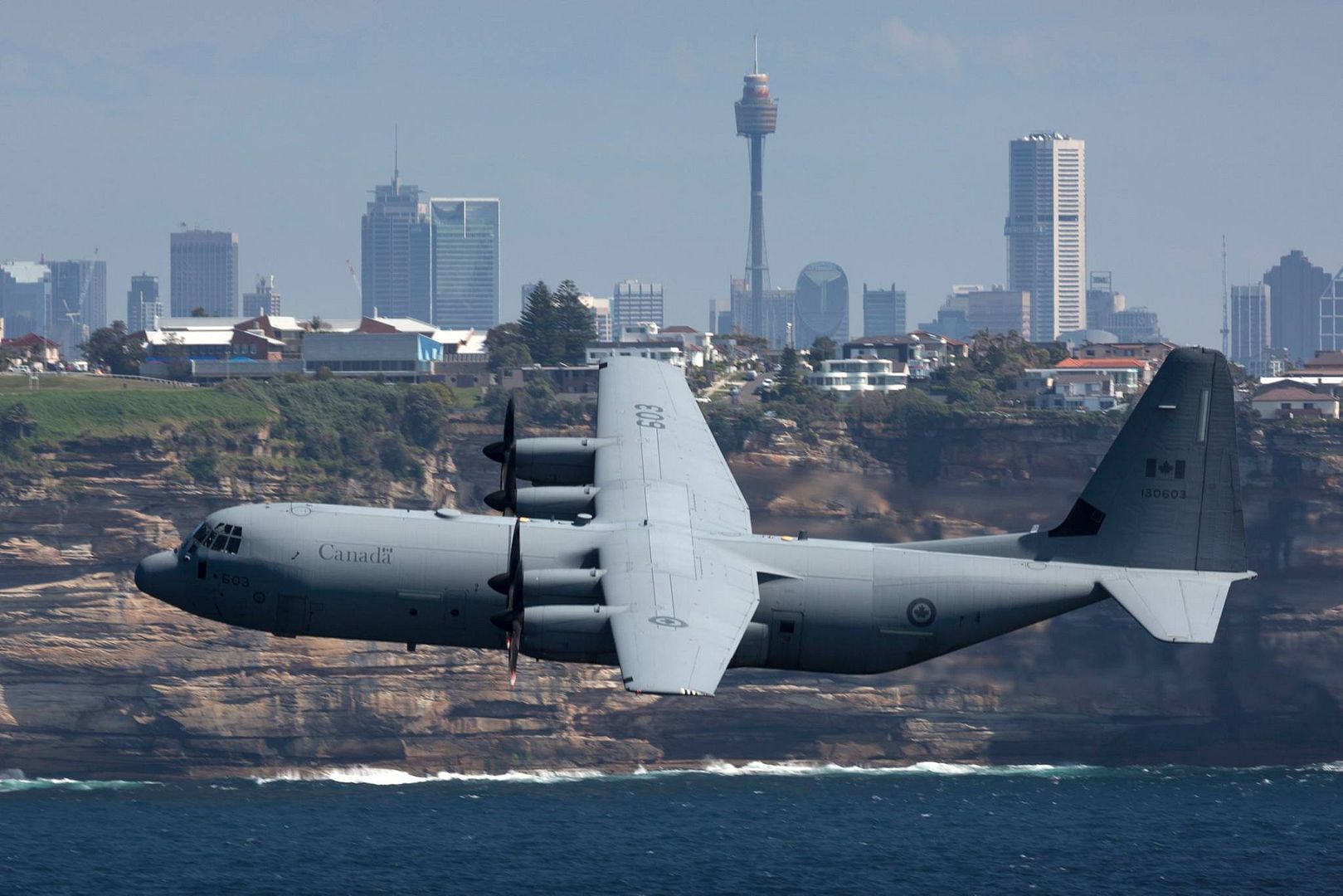
-
 Main AdminA U.S. Air Force B-1B Lancer, escorted by U.S. Air Force F-16 Fighting Falcons, performs a flyover over Osan Air Base, ROK, Sept. 13, 2016. The flyover highlighted the close cooperation between American and ROK military forces that keeps them ready to respond at any time to threats to stability and security. The B-1s are currently assigned to Andersen Air Force Base, Guam. (U.S. Air Force photo by SSgt Jonathan Steffen)
Main AdminA U.S. Air Force B-1B Lancer, escorted by U.S. Air Force F-16 Fighting Falcons, performs a flyover over Osan Air Base, ROK, Sept. 13, 2016. The flyover highlighted the close cooperation between American and ROK military forces that keeps them ready to respond at any time to threats to stability and security. The B-1s are currently assigned to Andersen Air Force Base, Guam. (U.S. Air Force photo by SSgt Jonathan Steffen)
A U.S. Air Force B-1B Lancer, escorted by U.S. Air Force F-16 Fighting Falcons, performs a flyover over Osan Air Base, ROK, Sept. 13, 2016. The flyover highlighted the close cooperation between American and ROK military forces that keeps them ready to respond at any time to threats to stability and security. The B-1s are currently assigned to Andersen Air Force Base, Guam. (U.S. Air Force photo by Senior Airman Dillian Bamman)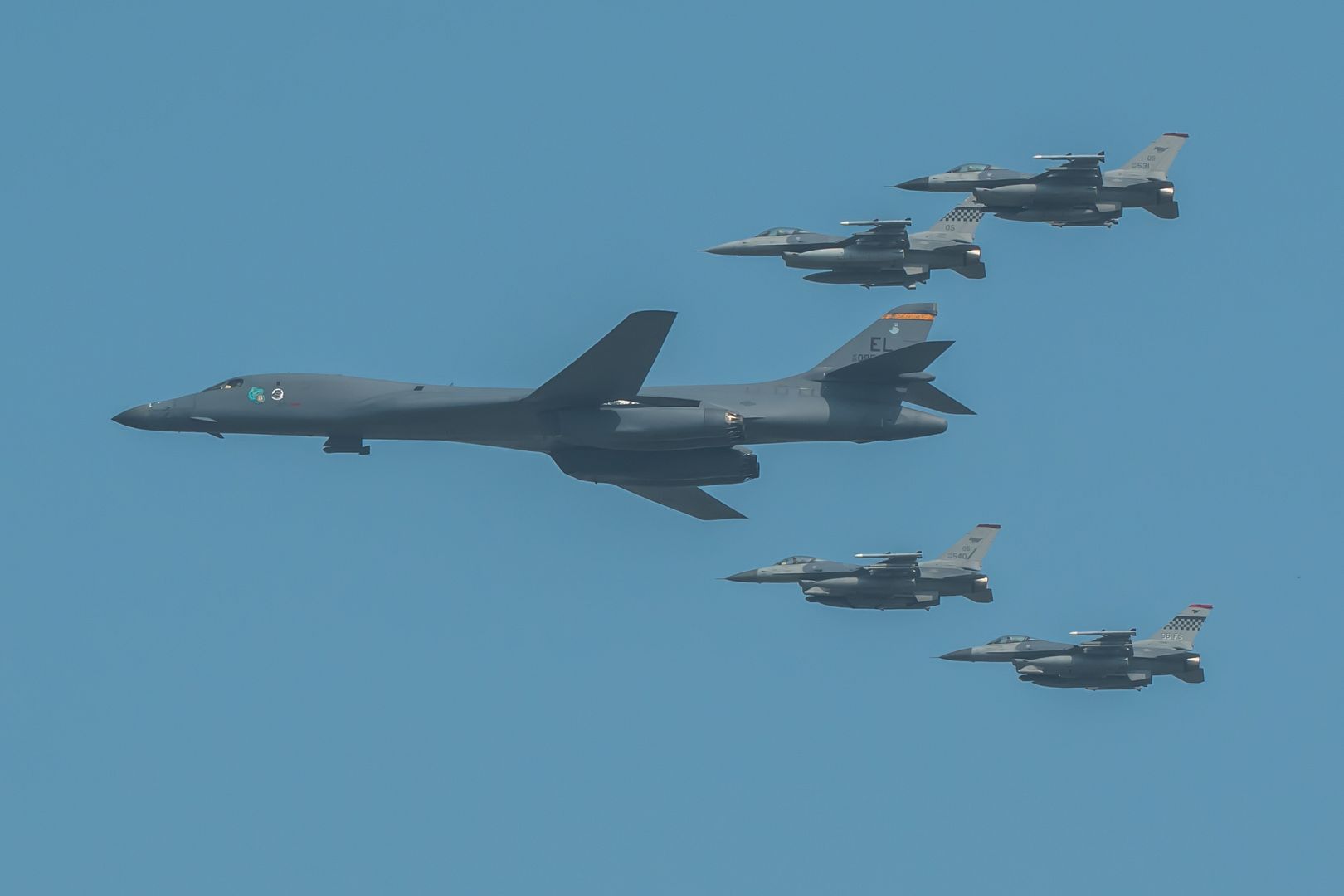
A U.S. Air Force B-1B Lancer, escorted by Republic of Korea air force F-15K Slam Eagles, performs a flyover over Osan Air Base, ROK, Sept. 13, 2016. The flyover highlighted the close cooperation between American and ROK military forces that keeps them ready to respond at any time to threats to stability and security. The B-1s are currently assigned to Andersen Air Force Base, Guam. (U.S. Air Force photo by Senior Airman Dillian Bamman)
LUKE AIR FORCE BASE --
Maj. Nathan Heguy, 62nd Fighter Squadron F-35 Lightning II pilot, successfully completed a routine training sortie Sept. 12, 2016, to officially cross more than 10,000 total combined flight hours in the F-35 for all pilots at Luke Air Force Base, Ariz.
The milestone marks yet another progression in the development of the tactics and utility of the F-35, which reached Initial Operational Capability on Aug. 2.
?It?s awesome to be a part of a milestone like this,? Heguy said. ?But it?s just a small tick in the long train of milestones accomplished here at Luke before me. It?s clear that everyone at Luke has done awesome work in the small amount of time that the F-35 has been here.?
The F-35?s advanced suite of sensors and stealth technology allow it to operate uncontested in a variety of environments, and as more and more time is spent in the cockpit, F-35 pilots develop the skills necessary to fully utilize all of the advantages their aircraft provides them.
?Now that we are in IOC, we?ve made a significant amount of progress toward being able to execute a lot of the missions that the airplane is tasked to execute,? said Maj. Brian Healy, 62nd Fighter Squadron director of operations.
As Luke?s mission transitions into training an international cadre of F-35 pilots, similar milestones will continue to be reached. In total, Luke is expected to host 144 F-35s distributed between six fighter squadrons once the entire fleet has been delivered.
?This is just another stepping stone that we?ve laid down through hard work,? Healy said. ?We?re taking incremental steps, and we are very, very quickly turning out students. It?s ramped up at almost an exponential pace.?
12 September 2016 Press Release
Low-cost carrier Volaris took delivery of its first A320neo, making the airline the first operator of the A320neo in North America. Volaris is Mexico?s largest Airbus customer, having ordered 74 A320 Family aircraft, including 30 A320neo. The all-Airbus operator became a customer in 2006, and since then has become Mexico?s biggest A320 Family operator with 63 A320 Family aircraft in service, including 17 A319, 42 A320 and four A321.
The A320neo for Volaris is powered by Pratt & Whitney Pure Power PW1100-JM engines and leased through AerCap. Configured to seat up to 186 passengers in 18?-wide seats, Volaris? A320neo will be equipped with the innovative Space-Flex cabin.
The A320neo Family incorporates latest technologies including new generation engines and Sharklet wing tip devices, which together deliver more than 15 percent in fuel savings from day one and 20 percent by 2020.
?The arrival of the A320neo symbolizes an important step in our ambitious ultra low-cost strategy,? said Enrique Beltranena, CEO of Volaris. ?Volaris is delighted to be the first to bring this new technology to passengers in North America.?
?Airbus is honored to deliver the first A320neo in North America to Volaris, an all-Airbus operator for more than 10 years,? said Rafael Alonso, President of Airbus Latin America and the Caribbean. ?Mexico?s strong economic growth presents a key opportunity for the country?s top airlines such as Volaris to expand and remain environmentally efficient, and the A320neo will be exceptional in achieving this for Volaris.?
?Pratt & Whitney extends its congratulations to AerCap, Volaris and Airbus on the delivery of today?s A320neo. We are proud to be part of the team bringing the first A320neo to North America,? said Rick Deurloo, senior vice president, Sales, Marketing and Customer Service for Pratt & Whitney.
One of the Royal New Zealand Air Force?s (RNZAF) newly acquired fleet of Seasprite helicopters will help transport 23 government staff and about seven tonnes of vital equipment and supplies to the remote Kermadec Islands on its first operational mission with an offshore patrol vessel (OPV).
An SH-2G (I) Seasprite, one of eight that are being introduced into service this year, has joined the Royal New Zealand Navy?s HMNZS Otago on a resupply mission to the Kermadec Islands from 12-23 September.
?Although the newer-model Seasprite was deployed on a frigate for a multilateral exercise in June, their deployment on an OPV is a major step forward in increasing the NZDF?s ability to support other government agencies in New Zealand and in the Pacific region. This also marks a major milestone in the modernisation of the Navy?s fleet,? Captain Dave McEwan, the Acting Maritime Component Commander, said.
Lieutenant Commander (LTCDR) Andrew Sorensen, the Commanding Officer of Otago, said the ship?s first stop would be at Macauley Island, where the Seasprite will drop off a Department of Conservation (DoC) representative and two dogs trained to detect rats and other pests.
Otago will travel next to Raoul Island, to resupply the DoC outpost there. About seven tonnes of goods, including food supplies, general equipment and a light utility vehicle, will be flown to the island in underslung loads.
?The NZDF provides logistical support to other government agencies and the resupply operation to the Kermadecs is a good example of that,? LTCDR Sorensen said.
National Maritime Coordination Centre manager Kevin Arlidge said the Seasprite?s deployment with an offshore patrol vessel would allow them to reach more inaccessible and remote parts of the Kermadecs and would widen the scope of the NZDF?s work in support of DoC and GNS Science.
Fourteen DoC staff, including mechanics, builders and specialists involved in the agency?s weed-eradication programme, will be flown from the ship to Raoul Island by the Seasprite.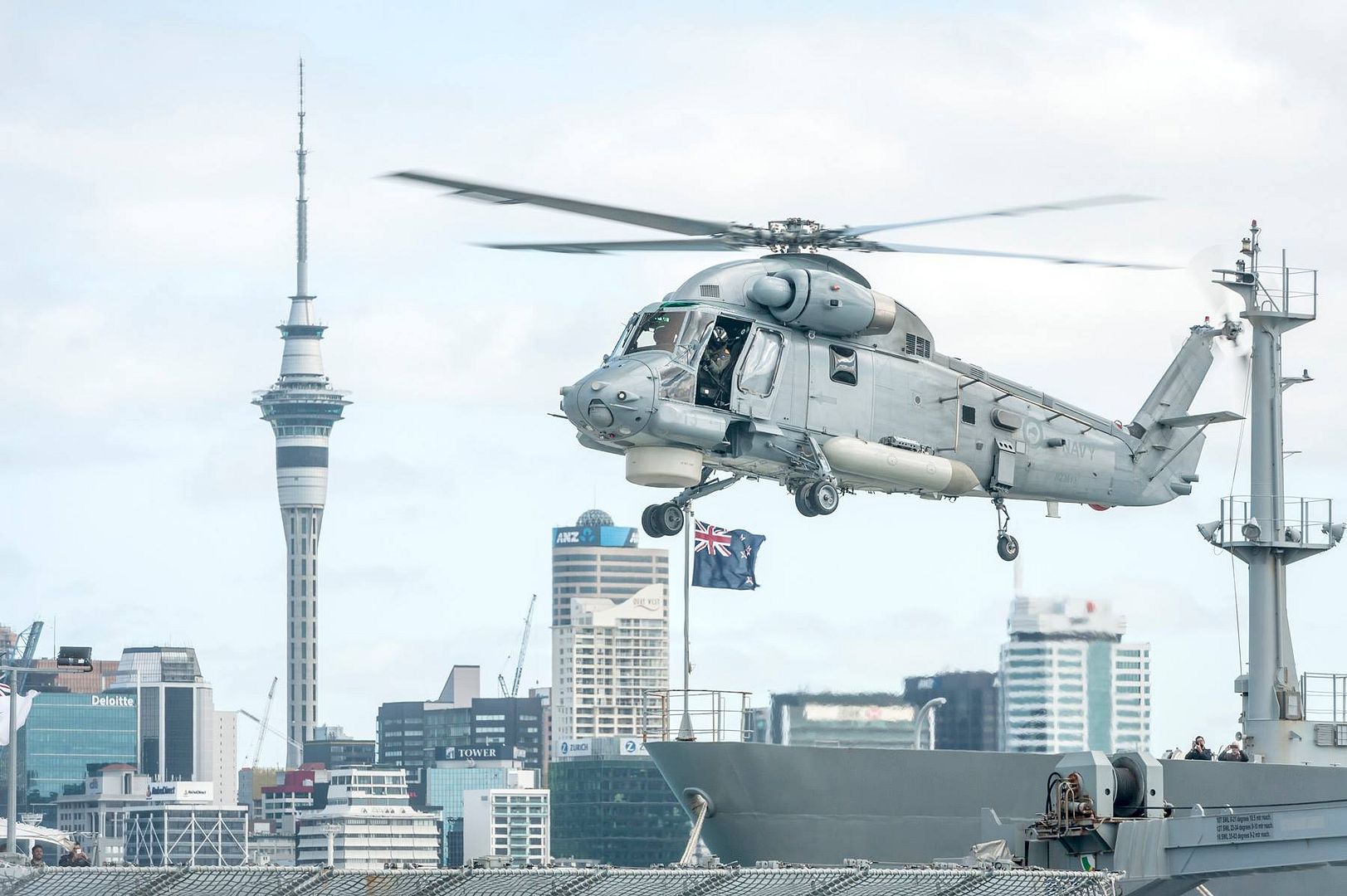
Otago is also transporting three MetService personnel, who will carry out routine maintenance work on the automatic weather station on the island, two electronic technicians and three commercial divers from GNS Science, who will check the tsunami gauges, seismograph and Global Positioning System equipment, and a volcano chemist, who will check the volcano and crater lakes for seismic activity.
?The tsunami gauges are the first line of defence against tsunamis and are vital for public safety in New Zealand,? GNS Science volcanologist Brad Scott said. ?The seismograph and GPS help GNS monitor for large earthquakes and submarine volcanic eruptions. So without NZDF support, we may not be able to keep this going.?
MetService staff will also install a lightning detection sensor on the island to serve as an early detection and warning system to mitigate against lightning hazards.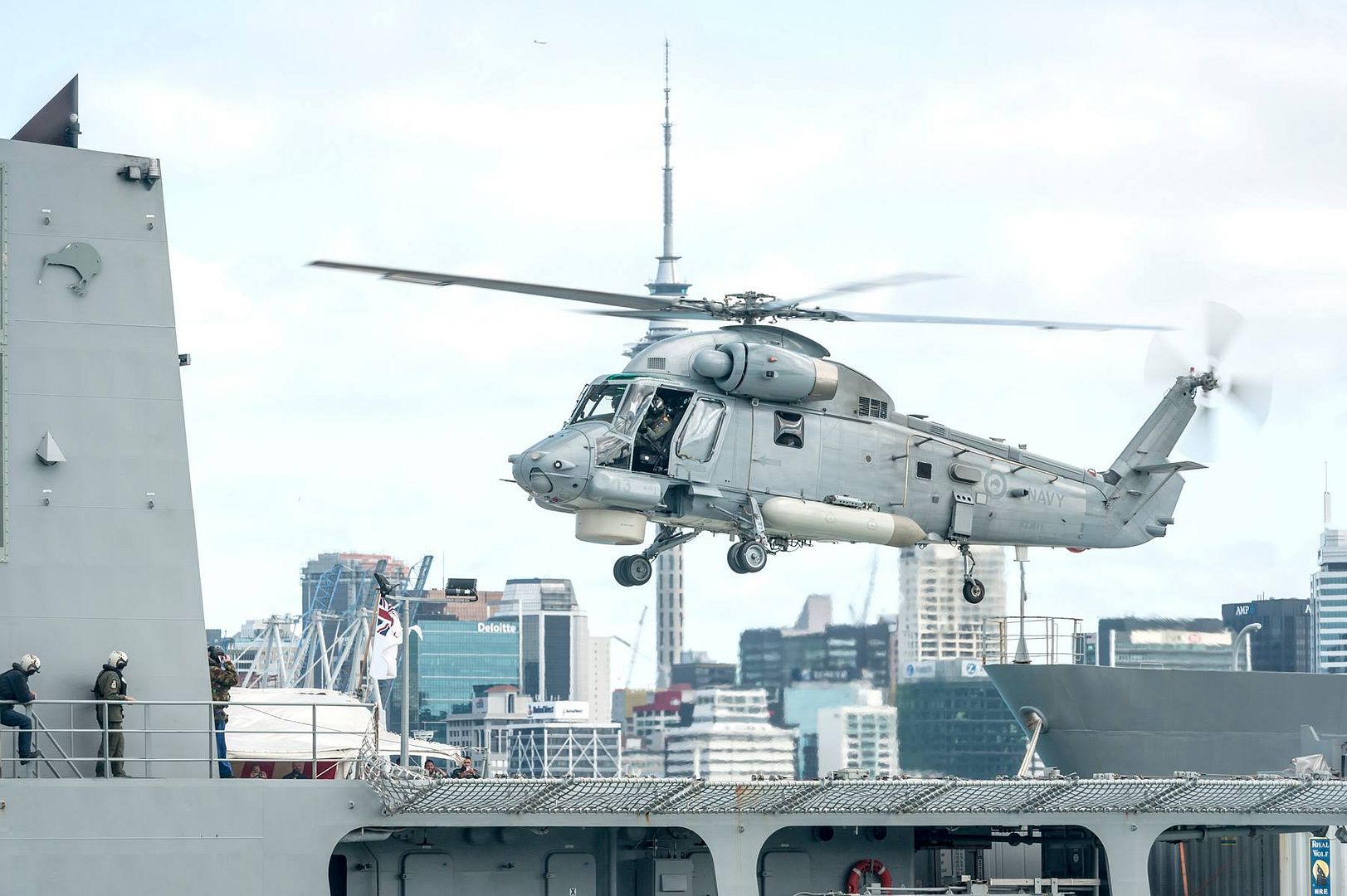
-
 Main AdminPATUXENT RIVER, Md. (Sept. 12, 2016) An EA-18G Growler, assigned to the Salty Dogs of Air Test and Evaluation Squadron (VX) 23, taxies to the runway before a test flight using 100 percent alternative jet fuel with Secretary of the Navy Ray Mabus as a passenger. The flight is part of research and development conducted by Naval Air Systems Command (NAVAIR) at Naval Air Station Patuxent River. (U.S. Navy photo by Mass Communication Specialist 1st Class Armando Gonzales/Released)
Main AdminPATUXENT RIVER, Md. (Sept. 12, 2016) An EA-18G Growler, assigned to the Salty Dogs of Air Test and Evaluation Squadron (VX) 23, taxies to the runway before a test flight using 100 percent alternative jet fuel with Secretary of the Navy Ray Mabus as a passenger. The flight is part of research and development conducted by Naval Air Systems Command (NAVAIR) at Naval Air Station Patuxent River. (U.S. Navy photo by Mass Communication Specialist 1st Class Armando Gonzales/Released)
U.S. Navy pilots assigned to Patrol Squadron Eight (VP-8) provide range clearance for a Sinking Exercise during Valiant Shield 16, off the coast of Guam, Sept. 13, 2016. Units from the U.S. Navy, Air Force and Marine Corps provided live fire from ships and aircraft in order to sink the decommissioned USS Rentz (FFG 46). Conducting these types of joint training events provides service members the opportunity to improve communication while gaining proficiency in tactics, targeting and live firing against a surface target at sea. VS16 is a biennial, U.S.?only, field-training exercise that focuses on training all services to increase interoperability and working relationships. (U.S. Marine Corps photo by Sgt. Jessica Quezada)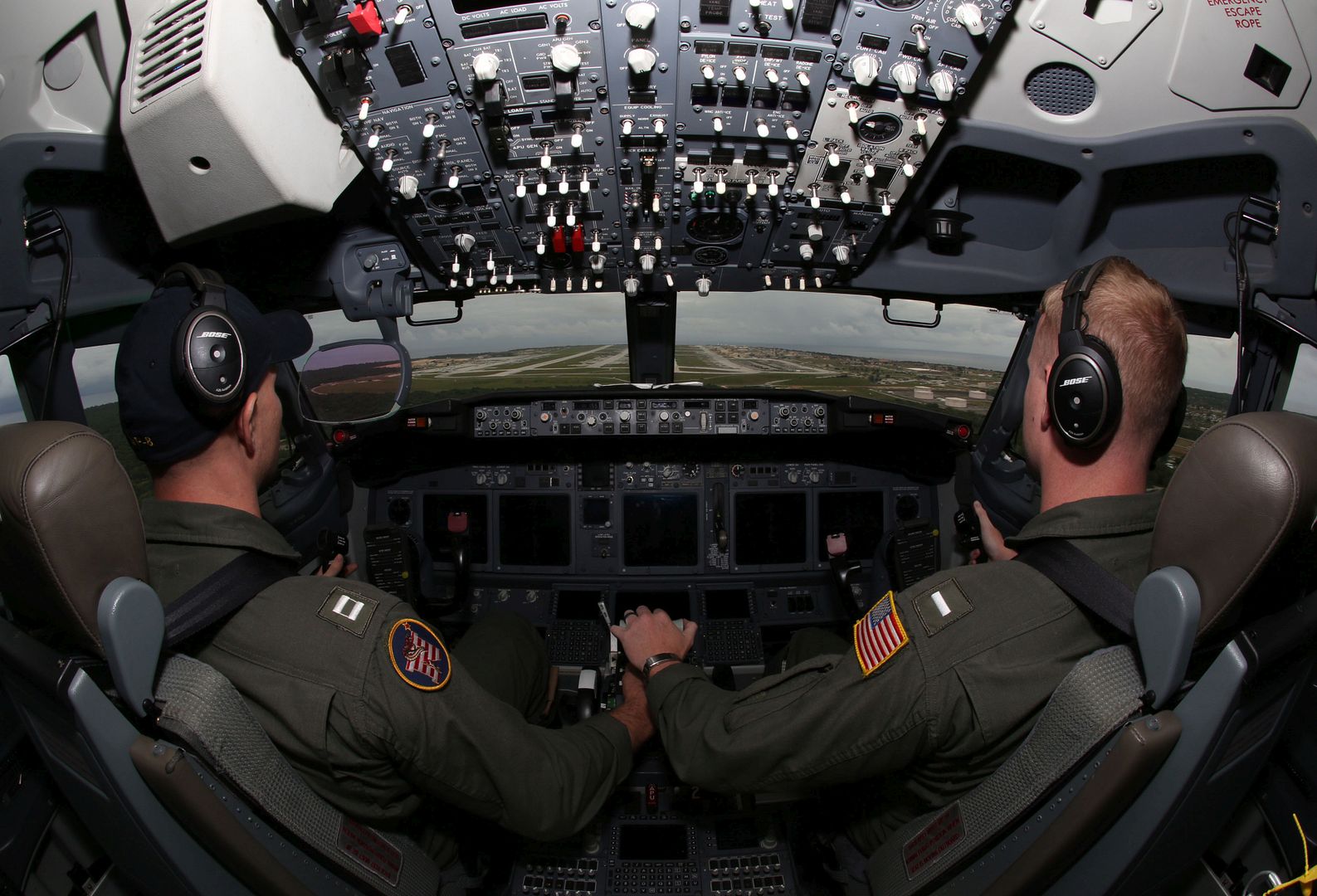
U.S. Navy sailors of Patrol Squadron 46 load a P-3 Orion aircraft with AGM-65F MAVERICKS Air to Surface Missiles prior to a sinking exercise Sept. 13, 2016, at Andersen Air Force Base, Guam, during Valiant Shield 2016. SINKEX provided service members the opportunity to gain proficiency in tactics, targeting, and live firing against a surface target at sea. Valiant Shield is a biennial, U.S. -only field-training exercise with a focus on integration of joint training among U.S. forces. (U.S. Marine Corps photo by Sgt. Justin Fisher)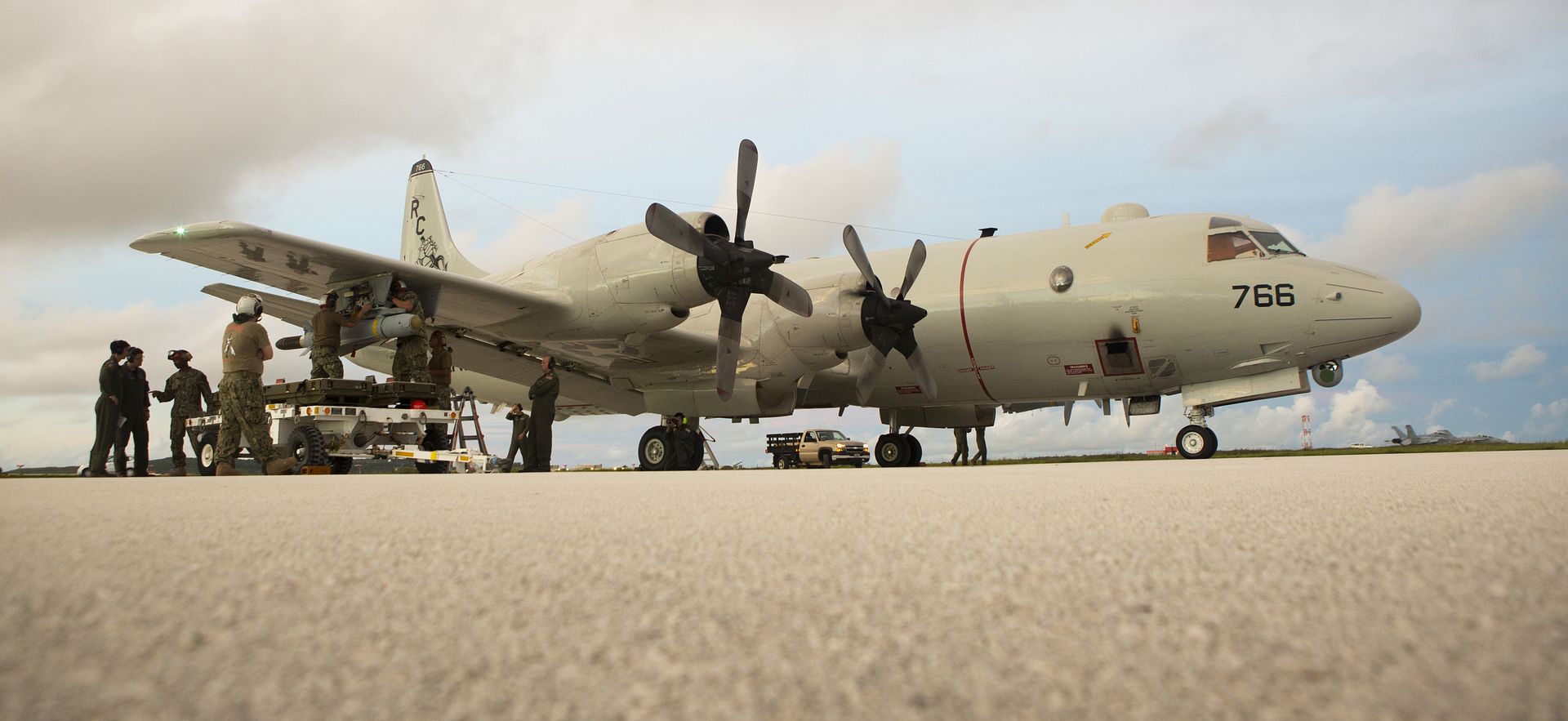
A U.S. Marine F-18 Hornet assigned to Marine All-Weather Fighter Attack Squadron 242, from Marine Corps Air Station Iwakuni, Japan, takes off during Exercise Valiant Shield at Andersen Andersen Air Force Base, Guam, Sept. 14, 2016. Valiant Shield is a biennial U.S. Air Force, Navy and Marine Corps exercise held in Guam, focusing on real-world proficiency in sustaining joint forces at sea, in the air, on land and in cyberspace. (U.S. Air Force photo by Tech. Sgt. Richard P. Ebensberger)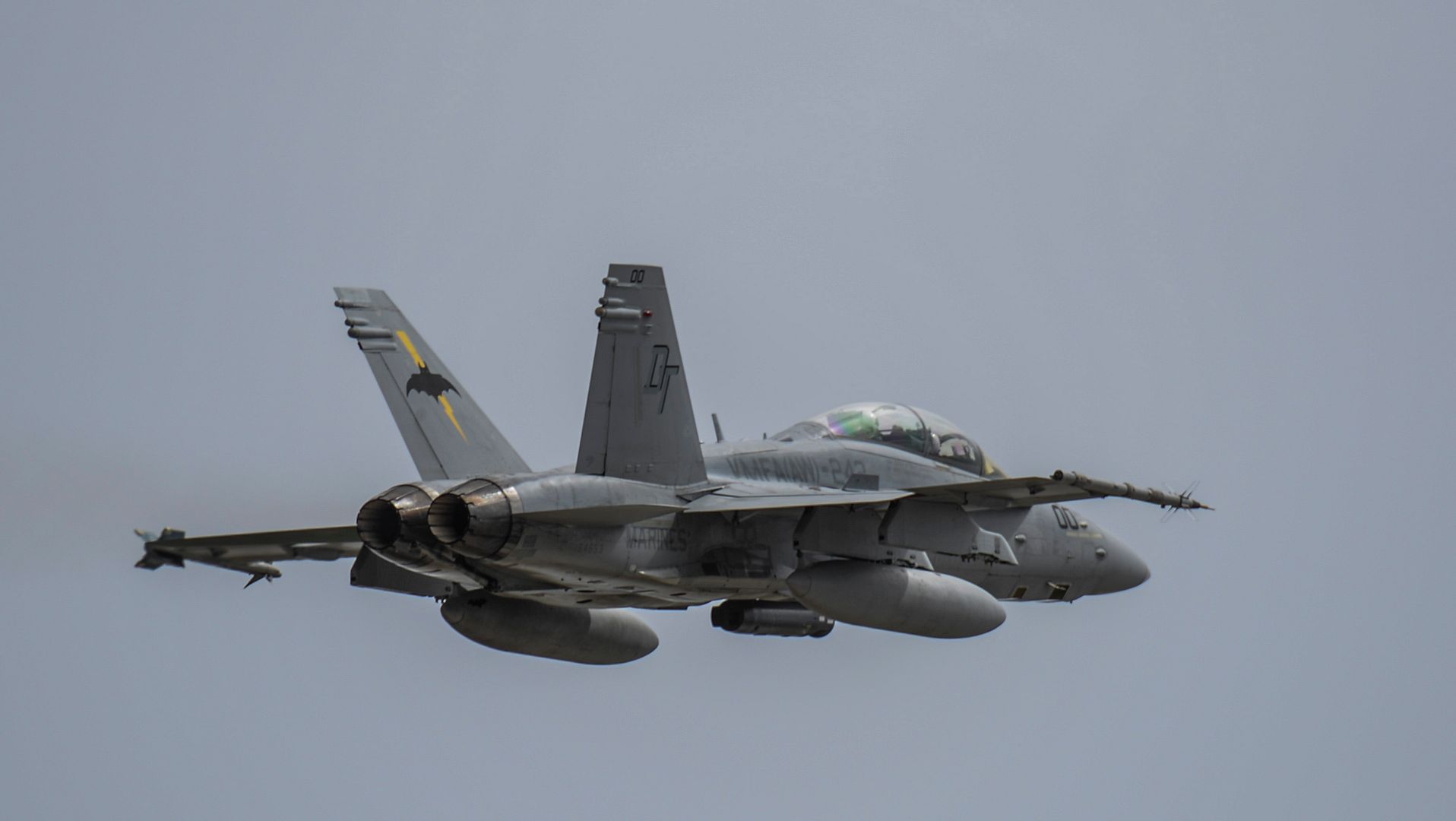
A U.S. Air Force F-15 Eagle assigned to the 44th Fighter Squadron, Kadena Air Base, Japan, takes off during Exercise Valiant Shield at Andersen Air Force Base, Guam, Sept. 14, 2016. Valiant Shield is a biennial U.S. Air Force, Navy and Marine Corps exercise held in Guam, focusing on real-world proficiency in sustaining joint forces at sea, in the air, on land and in cyberspace. (U.S. Air Force photo by Tech. Sgt. Richard P. Ebensberger)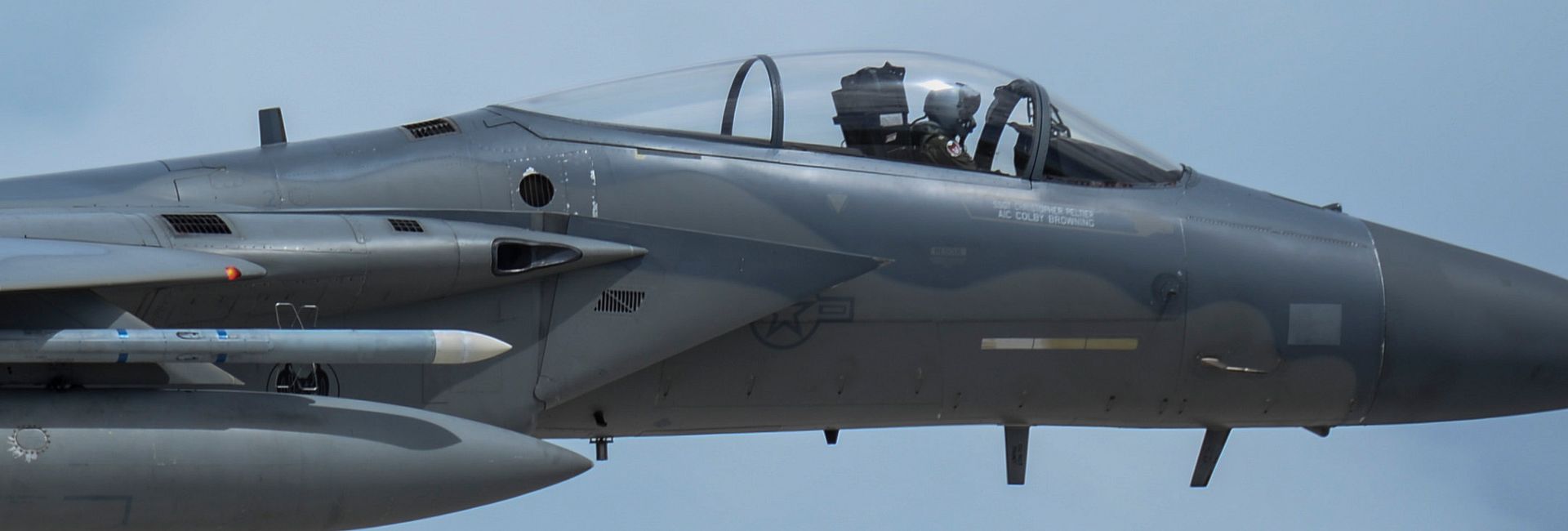
A U.S. Air Force F-15 Eagle assigned to the 44th Fighter Squadron, Kadena Air Base, Japan, taxis during Exercise Valiant Shield at Andersen AFB, Guam, Sept. 14, 2016. Valiant Shield is a biennial U.S. Air Force, Navy and Marine Corps exercise held in Guam, focusing on real-world proficiency in sustaining joint forces at sea, in the air, on land and in cyberspace. (U.S. Air Force photo by Tech. Sgt. Richard P. Ebensberger)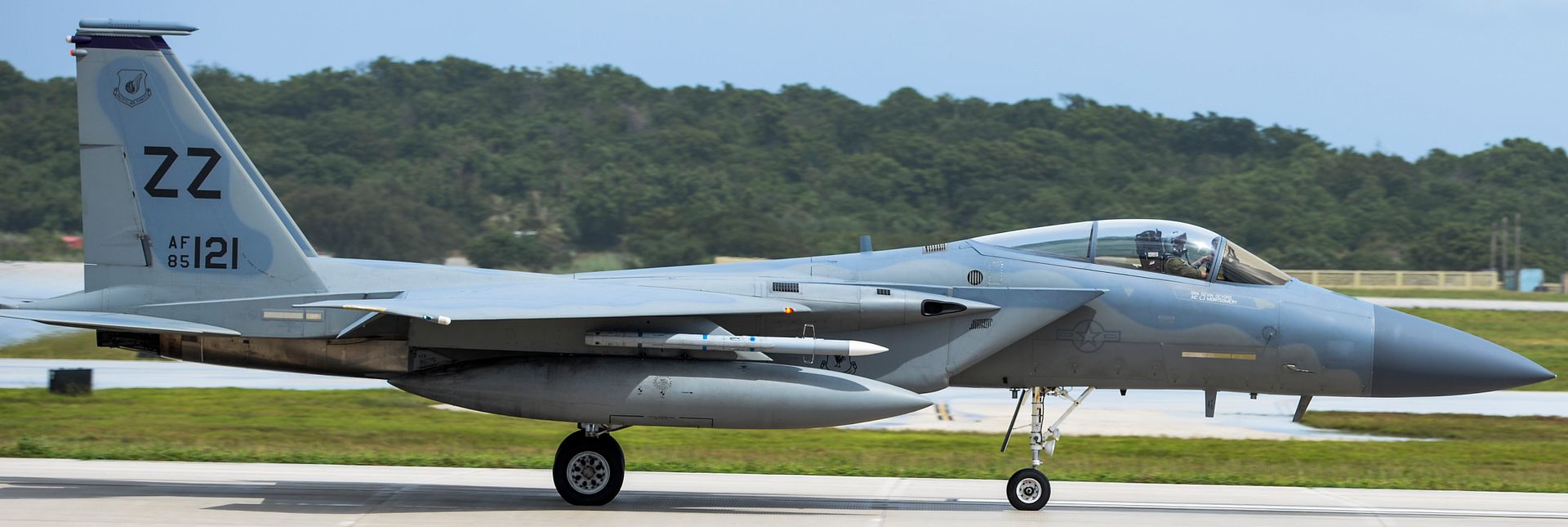
A B-1B Lancer assigned to the 34th Expeditionary Bomb Squadron, deployed from Ellsworth AFB, S.D., takes off during Exercise Valiant Shield at Andersen AFB, Guam, Sept. 14, 2016. Valiant Shield is a biennial U.S. Air Force, Navy and Marine Corps exercise held in Guam, focusing on real-world proficiency in sustaining joint forces at sea, in the air, on land and in cyberspace. (U.S. Air Force photo by Tech. Sgt. Richard P. Ebensberger)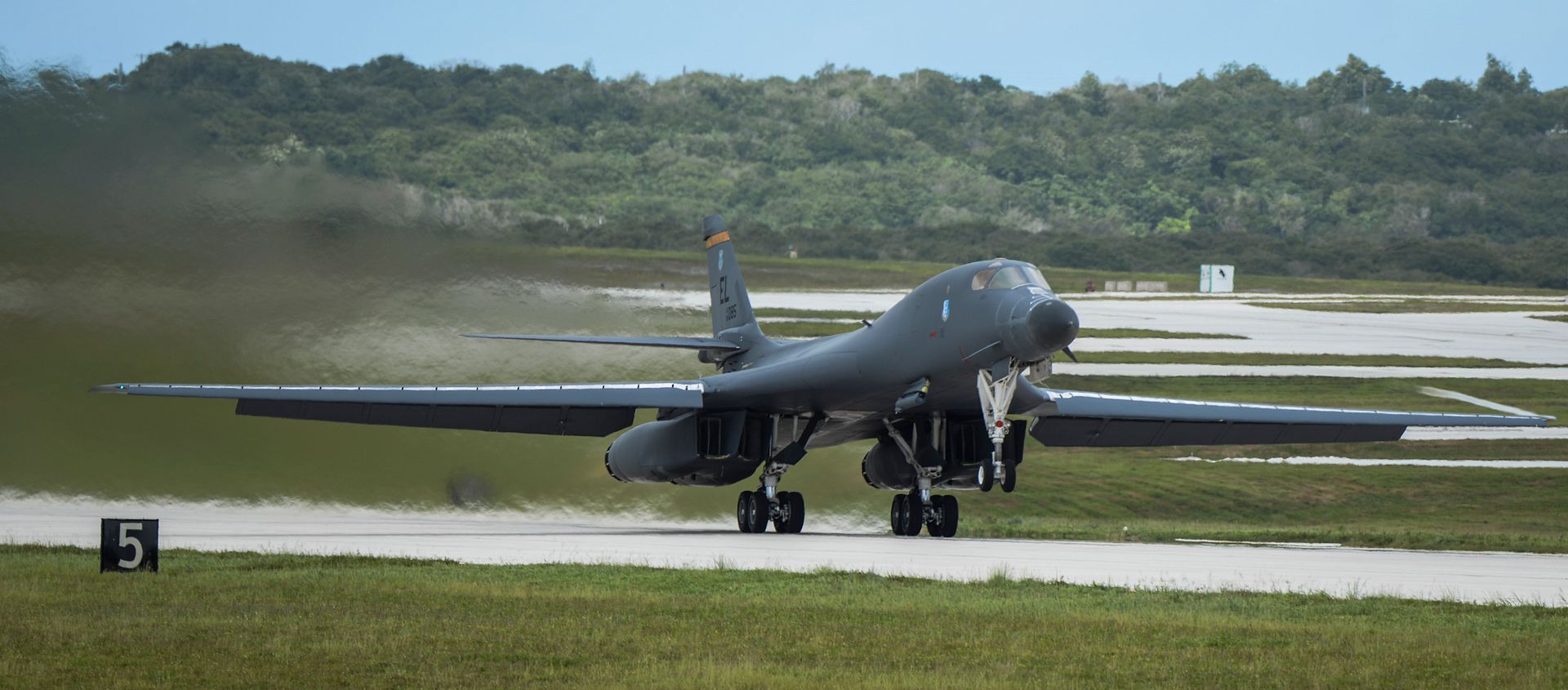
ST. LOUIS, Sept. 13, 2016 ? Boeing [NYSE: BA] and its partner Saab AB [Stockholm: SAABB] will use their two production T-X aircraft, revealed today, to show the U.S. Air Force the performance, affordability, and maintainability advantages of their approach.
Boeing T-X is an all-new aircraft designed specifically for the U.S. Air Force training mission, and takes advantage of the latest technologies, tools and manufacturing techniques. It is an advanced aircraft designed to evolve as technologies, missions and training needs change. The design is more affordable and flexible than older, existing aircraft.
"Our T-X is real, ready and the right choice for training pilots for generations to come," said Boeing Defense, Space & Security President and CEO Leanne Caret.
The Boeing T-X aircraft has one engine, twin tails, stadium seating and an advanced cockpit with embedded training. The system also offers state-of-the-art ground-based training and a maintenance-friendly design for long-term supportability.
"It?s an honor to build the future of Air Force training," said Saab President and CEO H?kan Buskhe. "We have created the best solution thanks to great cooperation and a clear strategy since day one."
T-X will replace the Air Force?s aging T-38 aircraft. Initial operating capability is planned for 2024.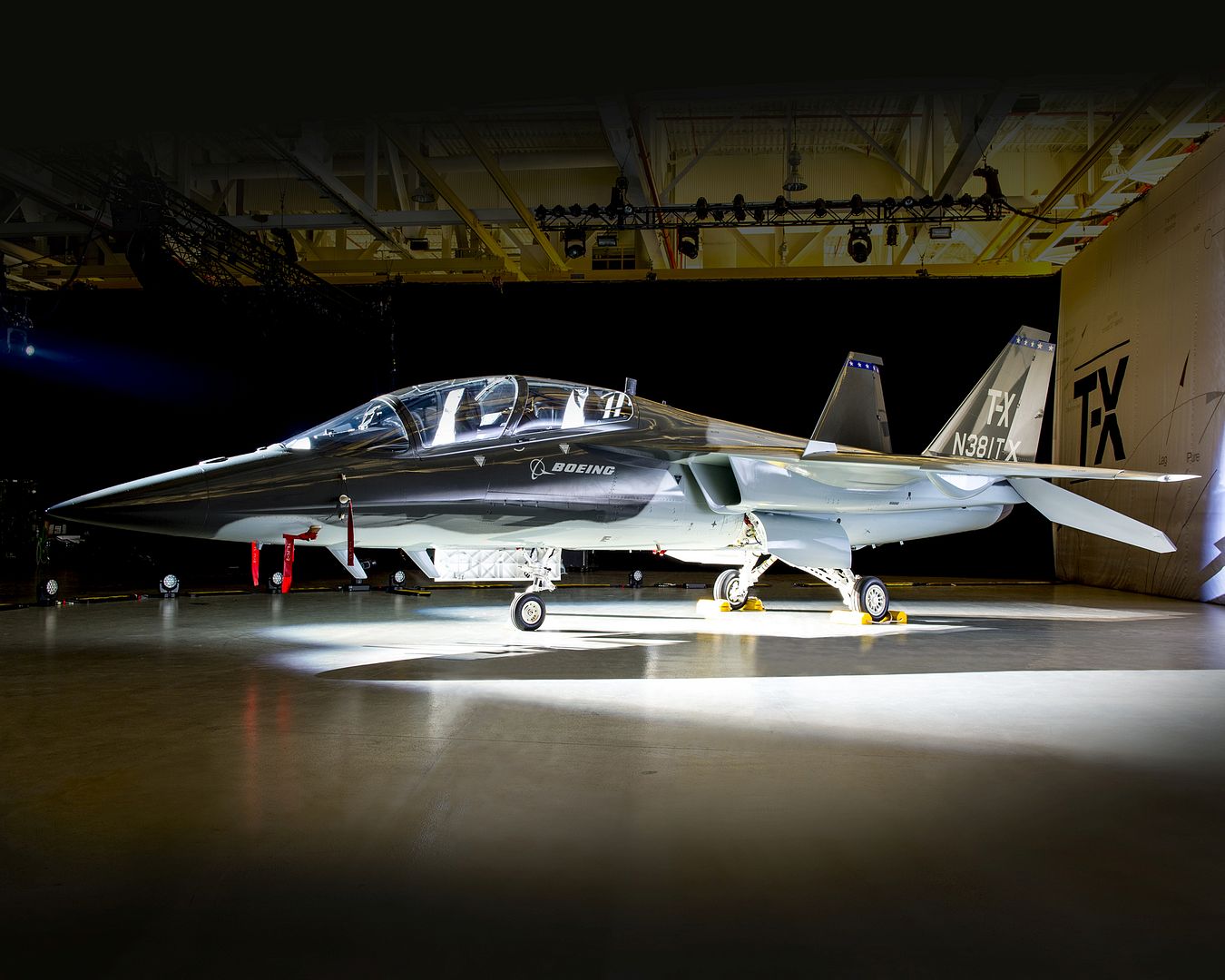
September 13, 2016 Montr?al Business Aircraft, Press Release
Bombardier Business Aircraft announced today that Zenith Aviation, Britain?s leading bespoke charter service provider, will take delivery of two brand new Learjet 75 aircraft.
?We are delighted to be once again working with Bombardier and welcoming the Learjet 75 aircraft into our fleet ? the Learjet brand is synonymous with our facility at London Biggin Hill,? said Stuart Mulholland, Managing Director of Zenith Aviation Ltd. ?Having seen the first Learjet 45 aircraft arrive over 17 years ago, we are now very much looking forward to the arrival of the iconic Learjet 75 business jet.
?We?ve had a hugely successful year for our business and this expansion is a key part of our growth and development strategy moving forward. We are anticipating growing our fleet of managed aircraft and further development of our facilities, and also adding to our Part 145 capability at Biggin Hill Airport over the coming months.?
The new charter aircraft are scheduled to arrive at Biggin Hill Airport at the end of September. This will mark a significant upgrade in Zenith Aviation?s aircraft charter offering following its move to offer worldwide flights alongside shorter charters to Europe at the beginning of the year. Both aircraft will be managed and chartered by Zenith and are set to join the company?s fleet in the coming weeks.
?The Learjet 75 aircraft offers class-leading performance and continues to set the benchmark among private jets in the Light category,? said David Coleal, President, Bombardier Business Aircraft. ?We look forward to working with Zenith Aviation and are thrilled that they have selected the Learjet 75 aircraft to join their growing fleet.?
About the Learjet 75 Aircraft
The Learjet 75 jet features the pioneering Bombardier Vision flight deck with an interior designed for style and comfort. It is the only business jet in its class to feature an eight-seat double-club configuration with a flat floor throughout the cabin and plenty of legroom. The Learjet 75 aircraft is also available in a six-seat executive configuration, offering enhanced comfort and productivity features. Its more powerful engines and new winglet design enables it to cruise at a speed of Mach 0.81* and climb to an operating ceiling of 51,000 ft. (15,545?m)*. The Learjet 75 can also achieve an exceptional range greater than 2,000 NM (3,704 km)*. Its modern interior features a new cabin management system with individual touchscreen monitors and full audio and video control; LED lighting throughout the entire aircraft; a generous baggage suite and a spacious galley to optimize catering. The Learjet 75 aircraft can fly four passengers and two crew members non-stop from London to Moscow*.
About Zenith Aviation
Zenith Aviation was established in September 2013 following the acquisition of Perfect Aviation UK Ltd by the Markerstudy Group. The Sevenoaks based Markerstudy Group is prominent within the UK insurance industry and has several other diverse business interests which now include commercial aviation. Zenith itself operates a fleet of Learjet 45 and Challenger aircraft from its base at London?s Biggin Hill Airport. MD Stuart Mulholland announced further fleet expansion in 2016 with worldwide flight capability achieved in Spring 2016. Zenith also offers EASA Part 145 approved maintenance from its Biggin Hill facility.
For more information on Zenith Aviation and its innovative approach to business aviation aircraft charter please contact the sales team on 01959 578444 or @.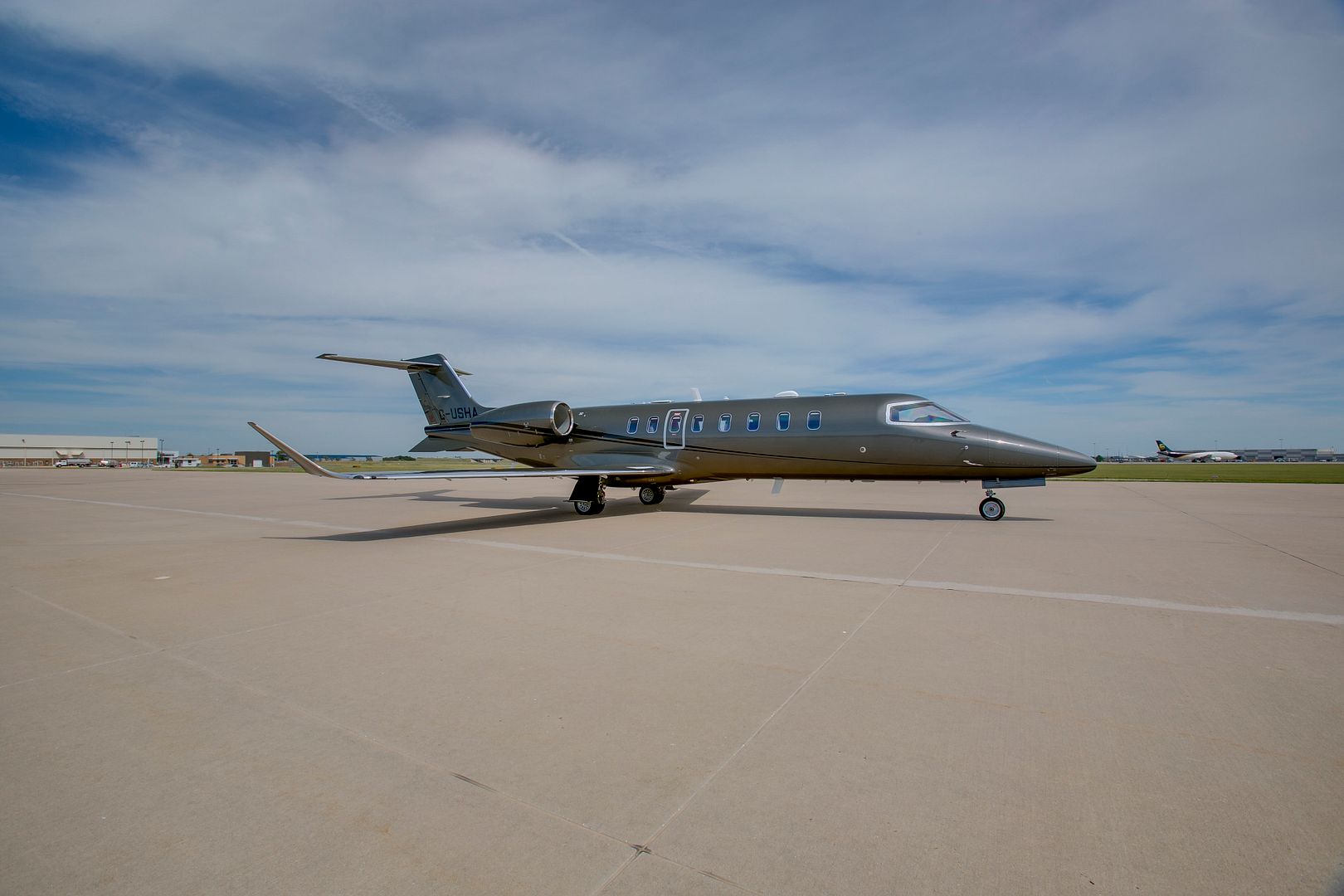
-
 Main AdminMEDITERRANEAN SEA (Sept. 13, 2016) An AV-8B Harrier II with 22nd Marine Expeditionary Unit (MEU), launches from the flight deck of the amphibious assault ship USS Wasp (LHD 1) on Sept. 13, 2016. The 22nd MEU, embarked on Wasp, is conducting precision air strikes in support of the Libyan Government of National Accord-aligned forces against Daesh targets in Sirte, Libya, as part of Operation Odyssey Lightning. (U.S. Marine Corps photo by Cpl. John A. Hamilton Jr.)
Main AdminMEDITERRANEAN SEA (Sept. 13, 2016) An AV-8B Harrier II with 22nd Marine Expeditionary Unit (MEU), launches from the flight deck of the amphibious assault ship USS Wasp (LHD 1) on Sept. 13, 2016. The 22nd MEU, embarked on Wasp, is conducting precision air strikes in support of the Libyan Government of National Accord-aligned forces against Daesh targets in Sirte, Libya, as part of Operation Odyssey Lightning. (U.S. Marine Corps photo by Cpl. John A. Hamilton Jr.)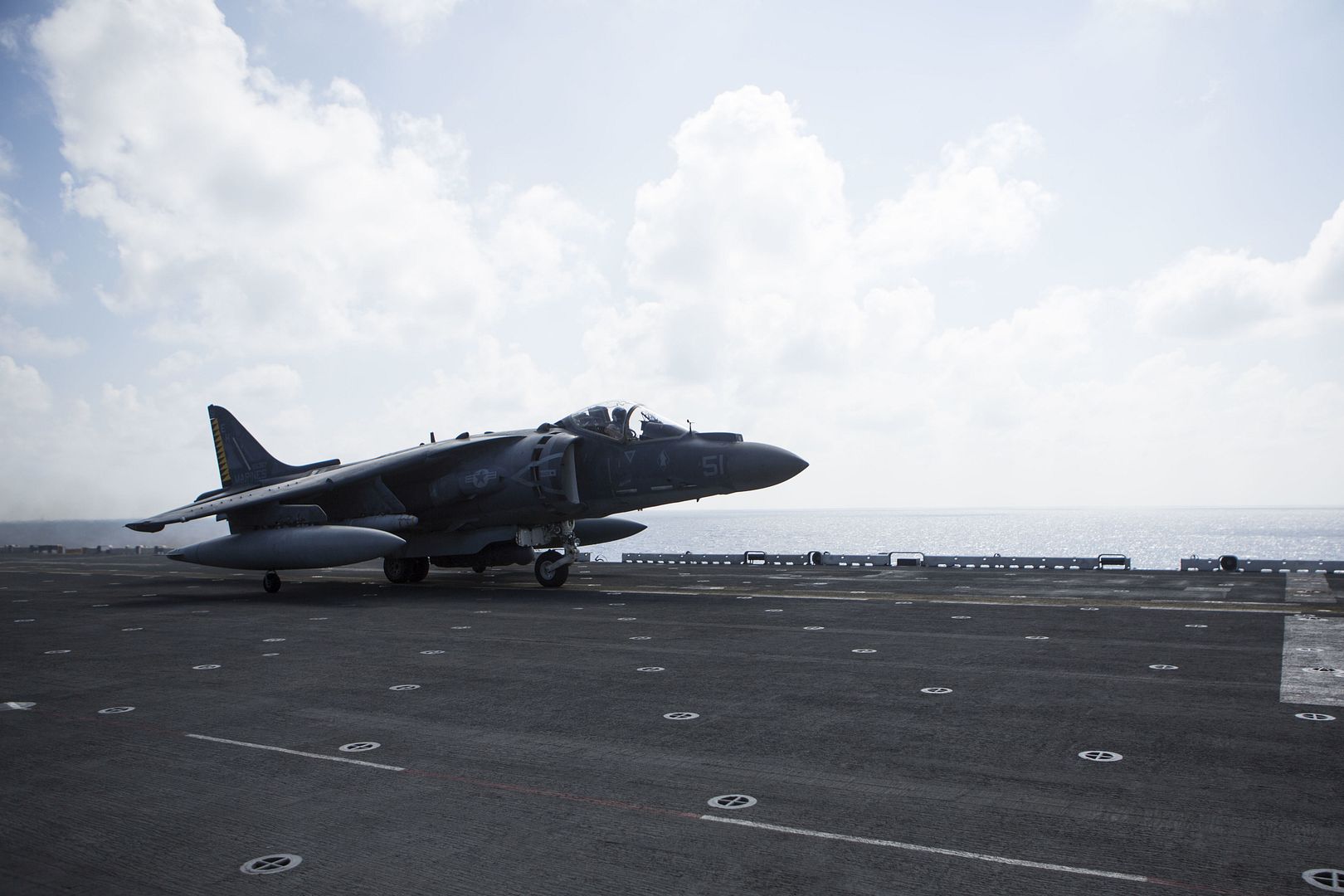
U.S. Soldiers, assigned to the 12th Combat Aviation Brigade, use a CH-47 Chinook to carry a Humvee during a sling load operation with U.S. Soldiers, assigned to the 5th Quartermaster Theater Aerial Delivery Company (5thQMTADC), 39th Transportation Battalion, 16th Sustainment Brigade, at the 7th Army Training Command?s Grafenwoehr Training Area, Germany, Sep. 13. The 5thQMTADC provides personnel and aerial delivery support to the United States European Command and United States Africa Command areas of responsibility and, on order, deploys Soldiers and equipment in support of contingency operations. (Photo by Pfc. Emily Houdershieldt)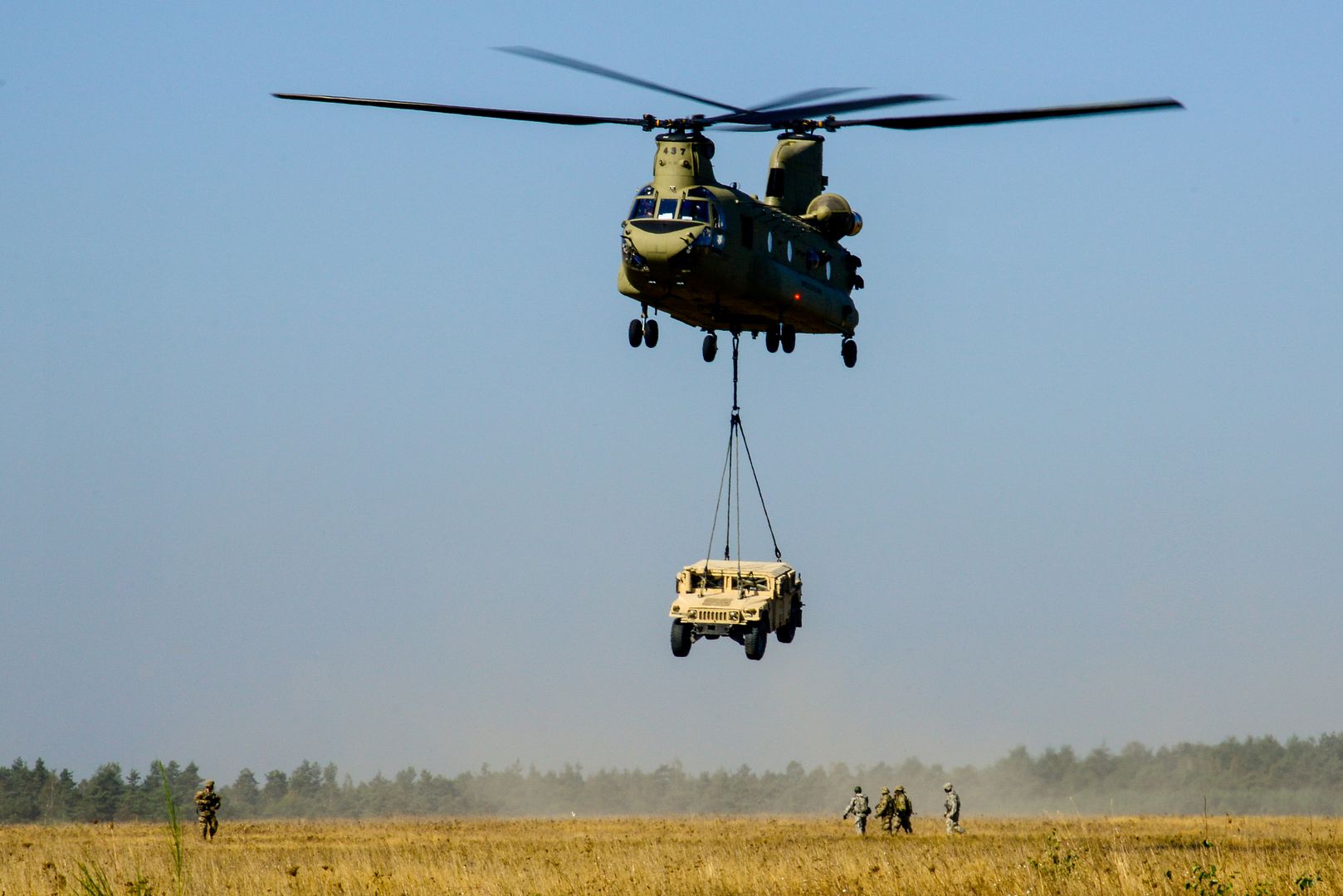
U.S. Marine Corps aviation maintenance personnel with Marine All Weather Fighter Attack Squadron 242, inspect an F/A-18D Hornet during Exercise Valiant Shield 16 at Andersen Air Force Base, Guam, Sept. 14, 2016. The inspection ensured there were no malfunctions with the aircraft while inflight. Valiant Shield is a biennial, U.S. Air Force, Navy, and Marine Corps exercise held in Guam, focusing on real-world proficiency in sustaining joint forces at sea, in the air, on land and in cyberspace. (U.S. Marine Corps photo by Lance Cpl. Jordan A. Talley)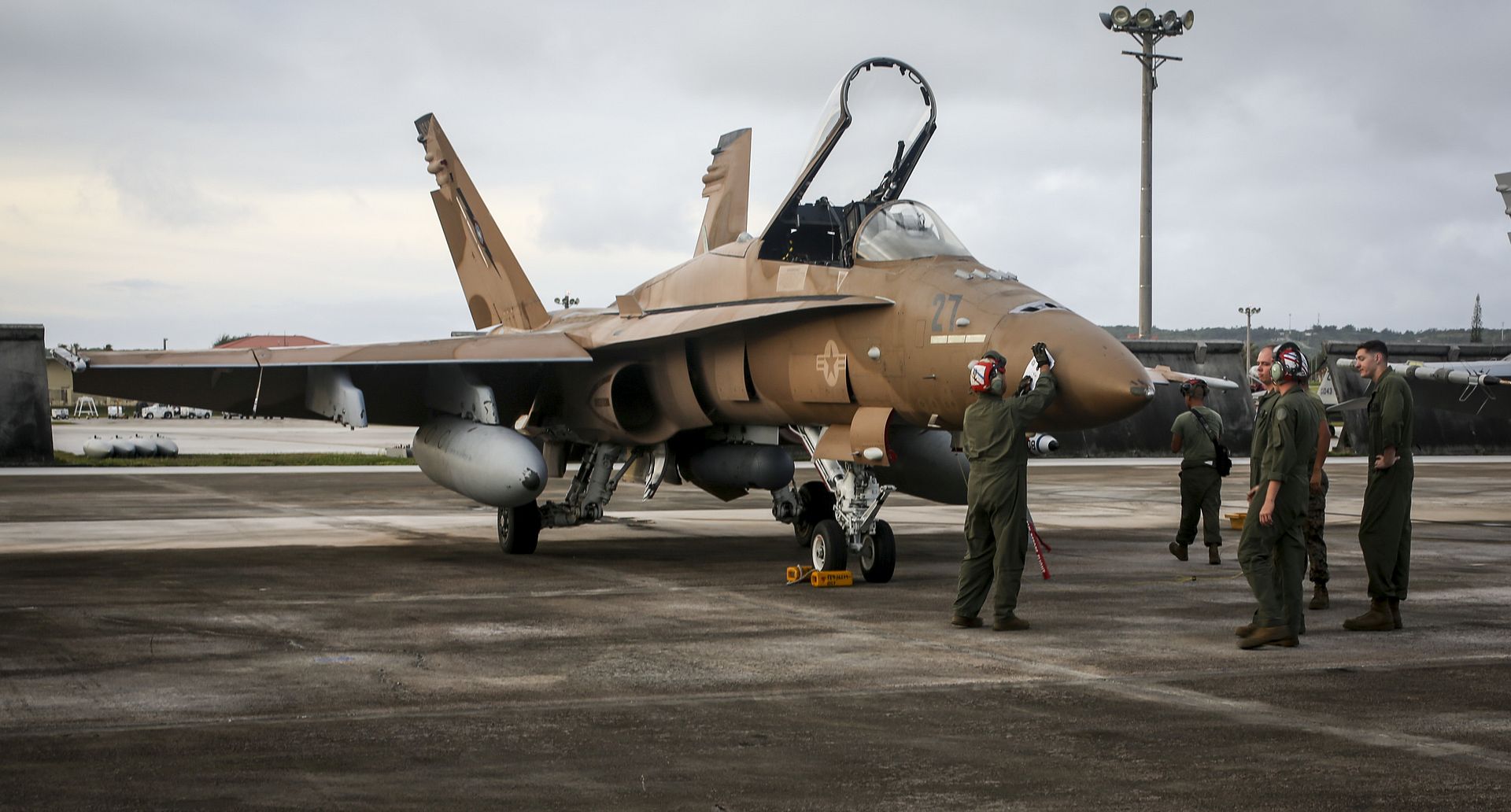
A U.S. Marine Corps F/A-18C Hornet with Marine Fighter Attack Squadron 115 (VMFA-115) taxies to the runway during Exercise Valiant Shield 16 at Andersen Air Force Base, Guam, Sept. 14, 2016. The aircraft was cleared for takeoff to conduct daily flight operations. Valiant Shield is a biennial, U.S. Air Force, Navy, and Marine Corps exercise held in Guam, focusing on real-world proficiency in sustaining joint forces at sea, in the air, on land and in cyberspace. (U.S. Marine Corps photo by Lance Cpl. Jordan A. Talley)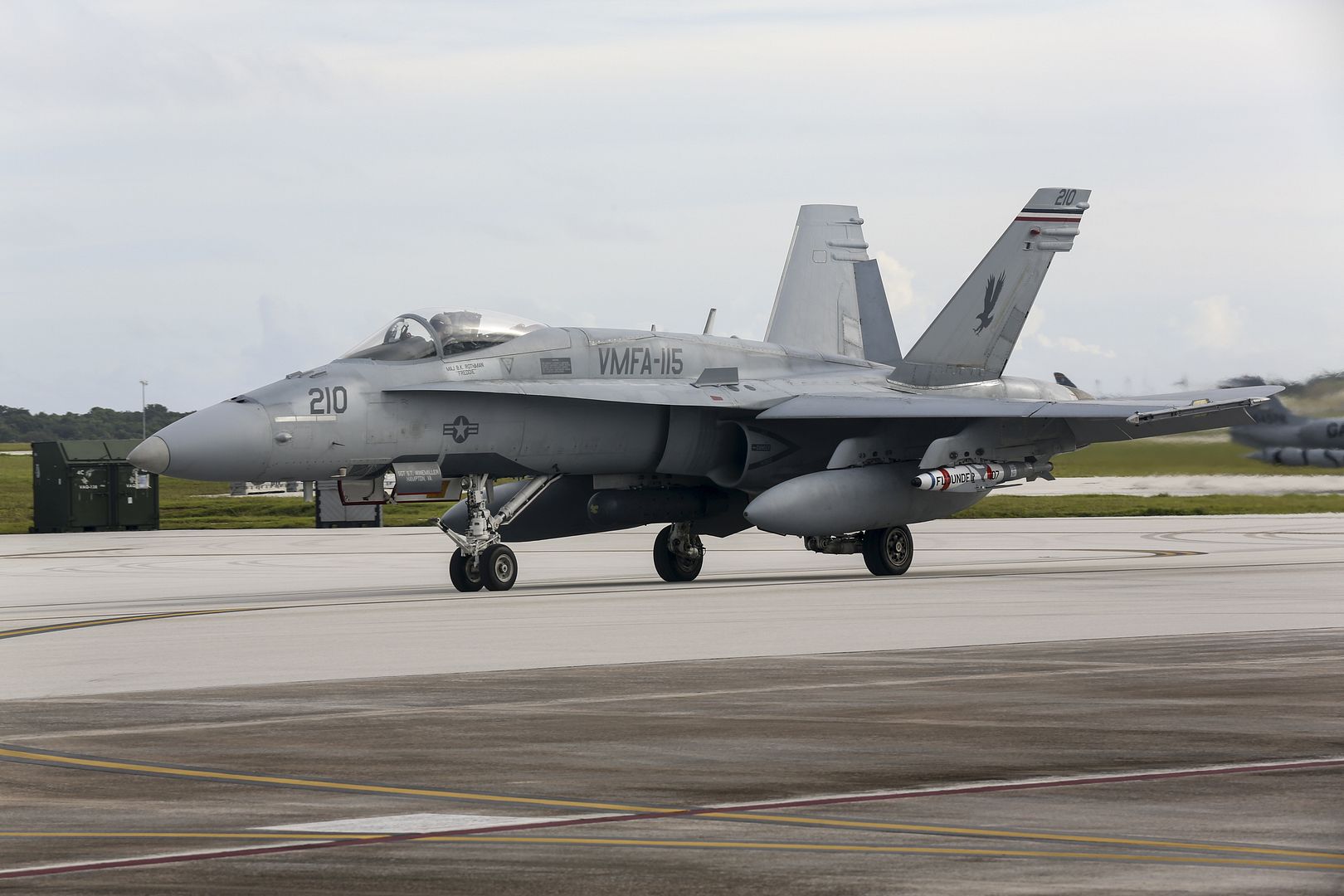
EDWARDS AIR FORCE BASE, Calif. --
Just after the turn of the century, it wasn?t unusual to see seven F-22A Raptors parked around the 411th Flight Test Squadron compound during the fighter?s early developmental test and evaluation days.
Today, the 411th and F-22 Combined Test Force has just four of the fifth-generation fighters left ? including one in the hangar undergoing maintenance ? to conduct testing to continually improve the Raptor fleet?s combat and long-term capabilities.
For the past few weeks, however, Edwards AFB?s Raptors have been joined by four operational F-22s for testing. The jets are from Langley Air Force Base, Virginia; Nellis Air Force Base, Nevada; and Tyndall Air Force Base, Florida. The planes are accompanied by pilots and maintenance crews from their respective bases.
Lt. Col. Randel Gordon, F-22 CTF director and 411th FLTS commander, said operational F-22s from the Air Force come to Edwards for testing occasionally, but it is ?highly unusual? to have eight total Raptors here, including the one being serviced in the 411th FLTS hangar.
The visit by the four operational jets prompted a unique photo opportunity for squadron workers, who were given the chance to take photos with seven planes in the background. The event marks a bittersweet occasion.
?This will be the last time we have this many jets ever in this compound,? said Gordon.
In four months, the F-22 CTF is scheduled to move out of the facilities it has occupied since the 1990s. The squadron will move to another location on base as part of a reorganization to prepare for upcoming test programs.
Eight test planes were built with most being assigned to Edwards for developmental test and evaluation throughout the years. The F-22A Raptor reached initial operational capability in 2005 and the Air Force currently has 183 in its total force.
The F-22 Raptor?s combination of stealth, supercruise, maneuverability and integrated avionics, coupled with improved supportability, represents an exponential leap in warfighting capabilities from previous generations of fighters. The Raptor performs both air-to-air and air-to-ground missions allowing full realization of operational concepts vital to the 21st century Air Force.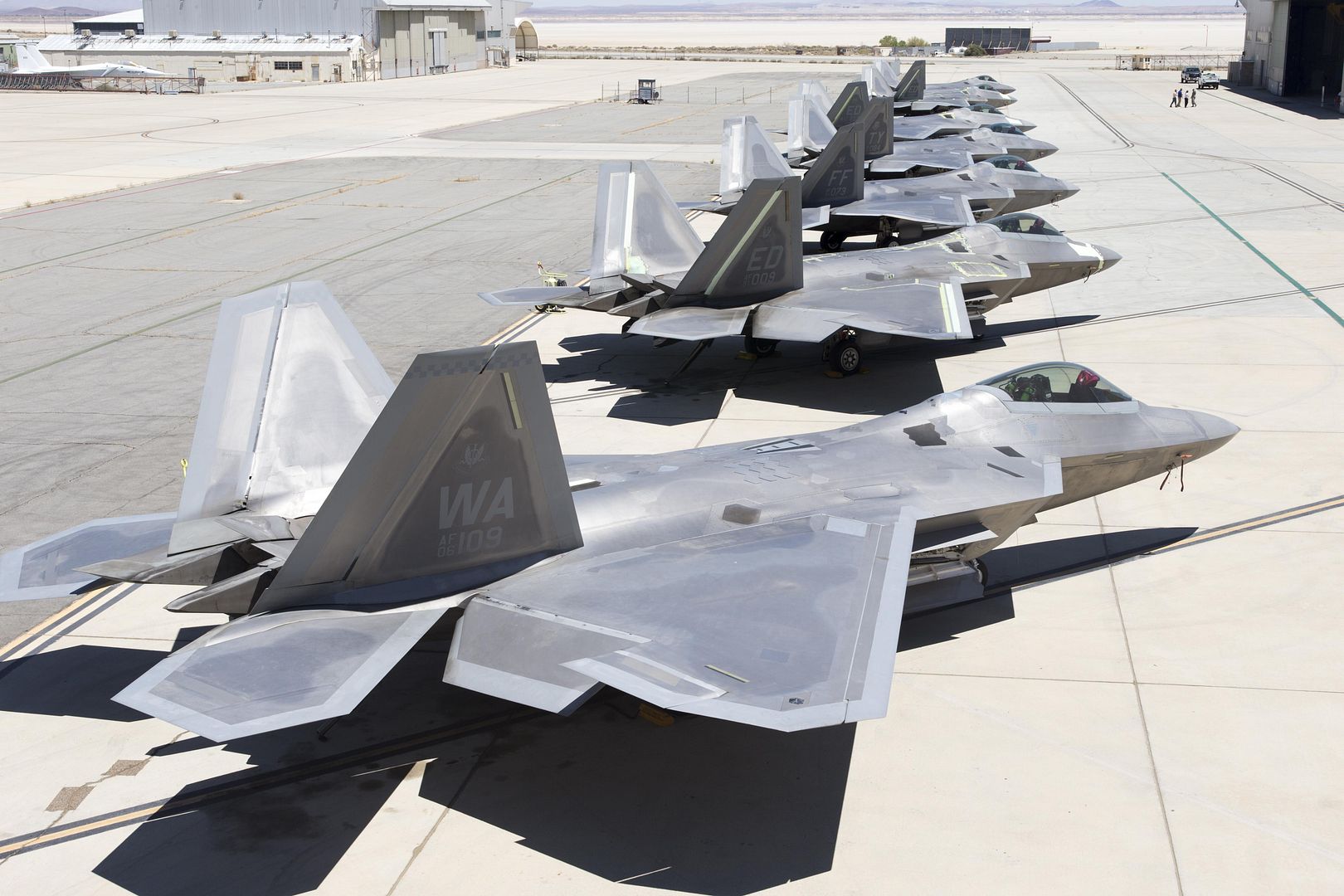
The F-22, a critical component of the Global Strike Task Force, is designed to project air dominance rapidly and at great distances, and defeat threats attempting to deny access to our nation's Air Force, Army, Navy and Marine Corps. The Air Force says the F-22 cannot be matched by any known or projected fighter aircraft.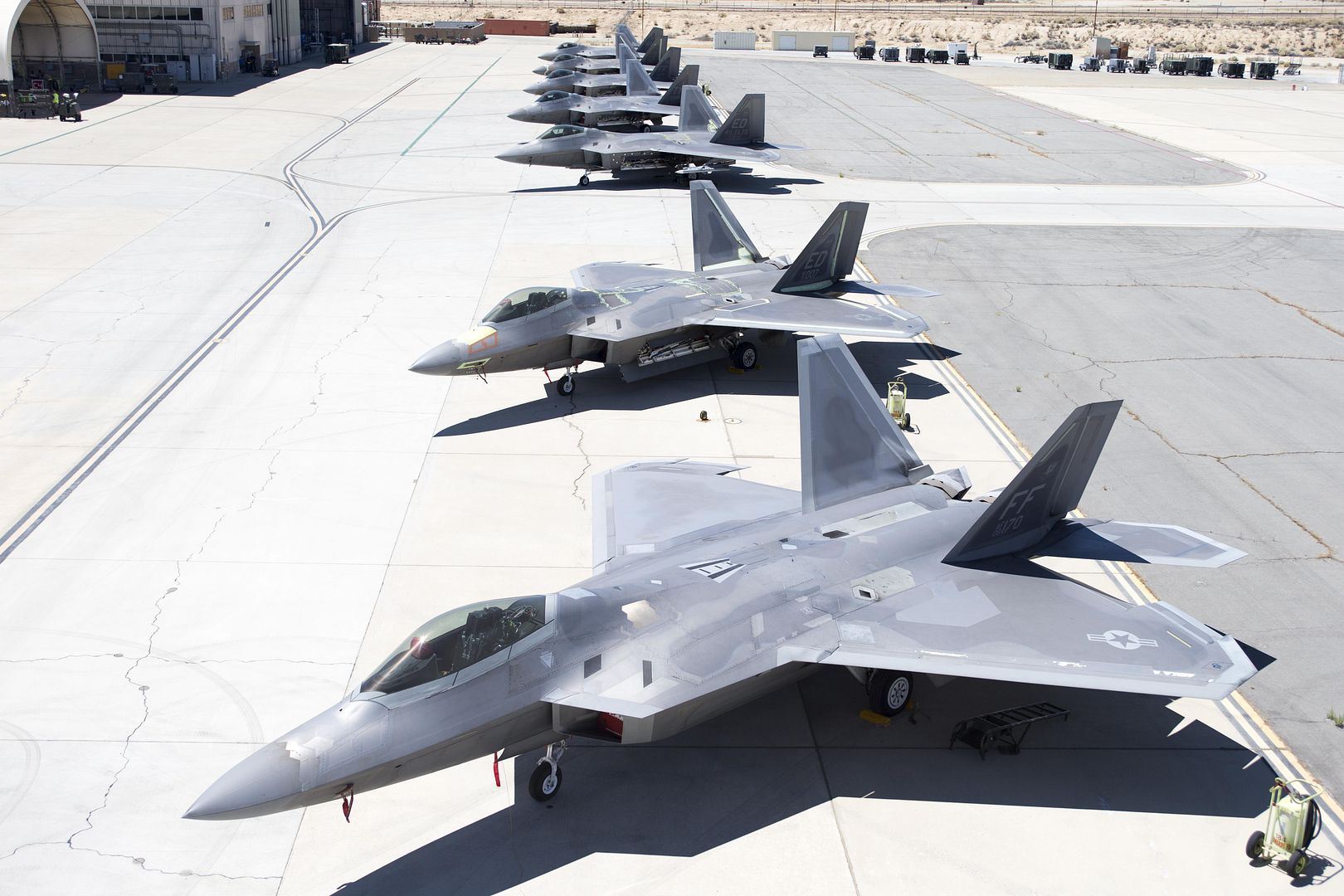
BEALE AIR FORCE BASE, California --
The U-2 Dragon Lady reached a milestone in its 61 years of service Aug. 31, here, qualifying Maj. J.J., 1st Reconnaissance Squadron student pilot, as the 1,000th pilot to operate the aircraft.
J.J. completed his first solo flight to become a part of the select few who have tamed the Dragon Lady. He still has key components of the program to complete before he is a fully-qualified U-2 pilot, such as training and flying in the full-pressure suit, flying at 70,000 feet and operating the mobile chase car.
?I?m honored to be the 1,000th pilot. It's an awesome milestone for the U-2 community,? J.J. said. ?At the same time, I would be grateful to be number 994 or 1,001. Being a part of this community and being counted amongst some of the best aviators in the world is a privilege. The number is a number, I haven?t done anything different than the 999 before me and will not do anything different than the ones after me.?
Beginning his career, J.J. flew different variants of the C-130 Hercules conducting airlift operations. He later looked for other opportunities and applied for the U-2 program.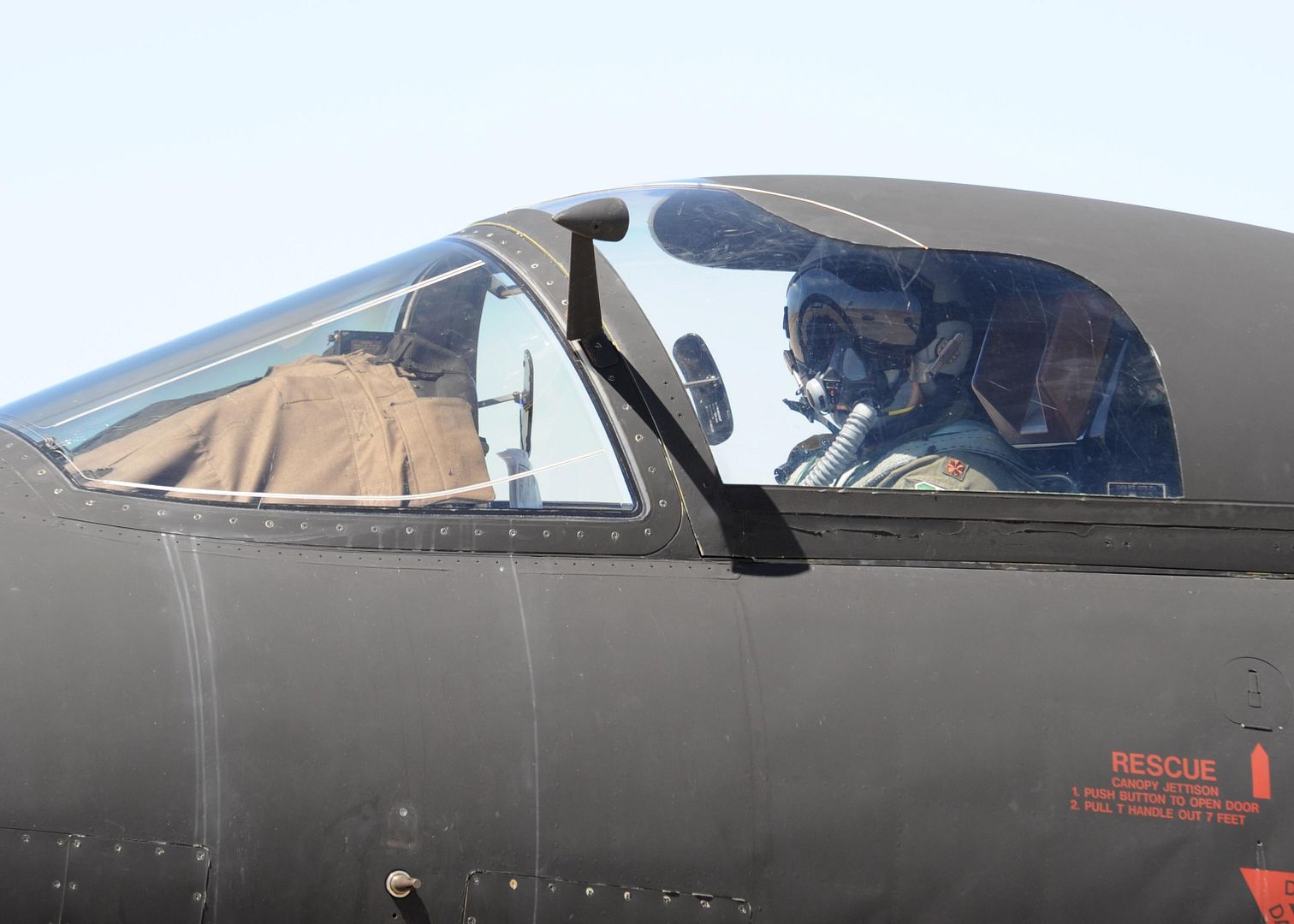
?The difficulty of the program is relative, based on the varied backgrounds of each pilot,? said Maj. Carl Maymi, 1st Reconnaissance Squadron director of operations. ?Pilots will find different phases of training more difficult than others, which may depend on the aircraft they?ve flown before. We benefit as a community from the diverse backgrounds of our pilots; I think this is an often overlooked component to the U-2?s constant relevance and longevity.?
To have the opportunity to fly a U-2, the applicant must be a pilot in the U.S. Armed Forces, have obtained 1200 rated flight hours or other variables depending on aircraft flown, 12 months or 400 hours as pilot in command; and have gone through the application process.
Maymi stated, on average 40 pilots apply per year, half of those are accepted into the program and generally 90 to 95 percent graduate.
The training program takes approximately nine months to complete more than 40 flights in the U-2 and T-38 Talon, 15 simulators, 10 chase car rides, survival training and other ground operations.
?I wanted to be among the best, flying one of the most challenging aircraft,? J.J. said. ?There is no community like this in the Air Force; everyone is here because they want to be here.?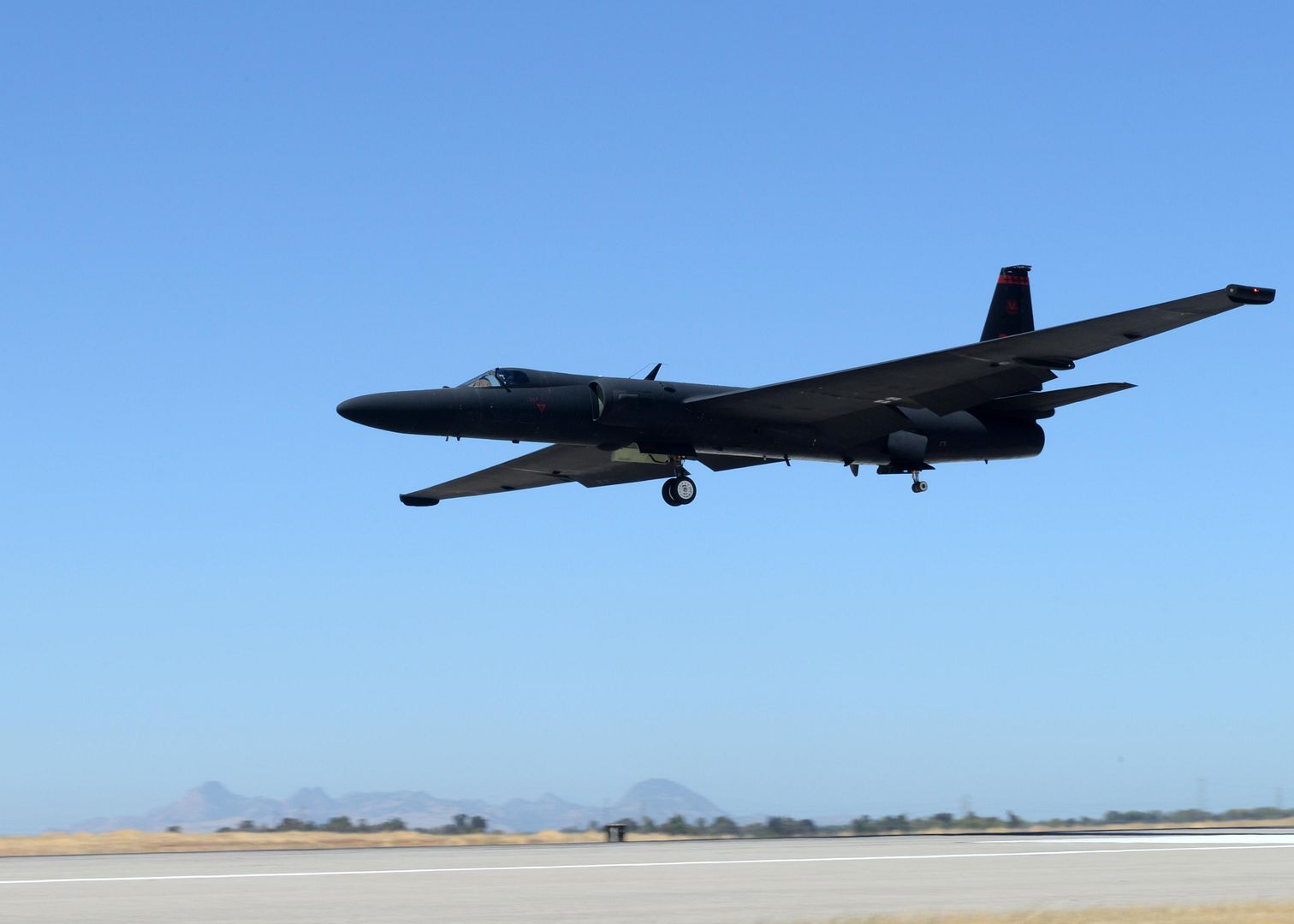
15 September 2016 Press Release
Hong Kong Airlines has signed a contract with Airbus for the firm order of nine additional A330-300 aircraft.
The aircraft will be operated across a network which links Hong Kong with a wide range of destinations in Asia, and beyond.
"Today's announcement underscores our plan to operate an extensive regional network in Asia," said Zhang Kui, President, Hong Kong Airlines. "The A330?s flexibility also allows us to further deploy these aircraft to some long haul routes in the future, and we are going to operate the all-new A350 XWB in 2017 which will open a new chapter of our international operations."
"We are extremely pleased that Hong Kong Airlines again places its confidence in our products to expand its widebody fleet," said John Leahy, Airbus Chief Operating Officer Customers. "With the A330, the carrier will be operating the most cost-efficient and versatile widebody aircraft, both now and in the future."
Hong Kong Airlines currently operates an all-Airbus fleet comprising of 11 A320s and 22 A330s including 5 A330-200 Freighters. By the end of 2018, its fleet size will reach over 50 with the delivery of its first A350-900 aircraft.
The A330 Family, which includes Passenger, Freighter, VIP, and Military Transport/Tanker variants, has now attracted more than 1,600 orders. Over 1,250 A330 Family aircraft are flying with some 120 operators worldwide. The A330 is one of the world?s most efficient aircraft with best in class operating economics. With numerous on-going product enhancements entering service in the coming years, the A330 Family remains the most cost-efficient and capable widebody aircraft. Today?s A330 have an operational reliability of 99.4 percent.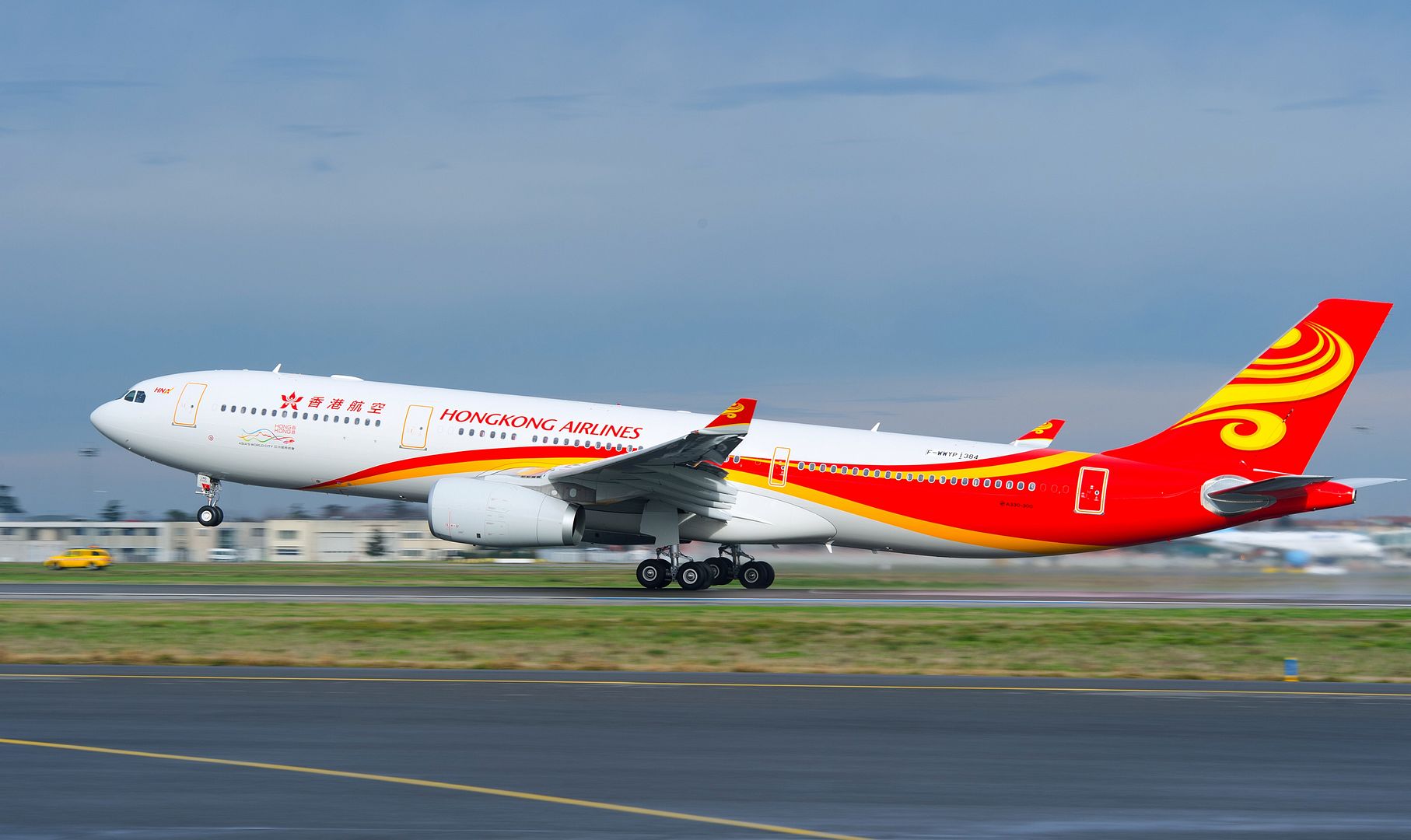
54(R) Squadron Centenary Tail Art
2016 is a very special year for 54(R) Squadron as they celebrate 100 years since their formation on 5th May 1916 at Castle Bromwich. To mark the occasion centenary tail art that has been applied to the Sentry aircraft recognising the most recent chapter of 54(R) Squadrons history as the ISTAR Operational Conversion Unit that trains aircrew to fly the platforms, including Sentry, based at RAF Waddington.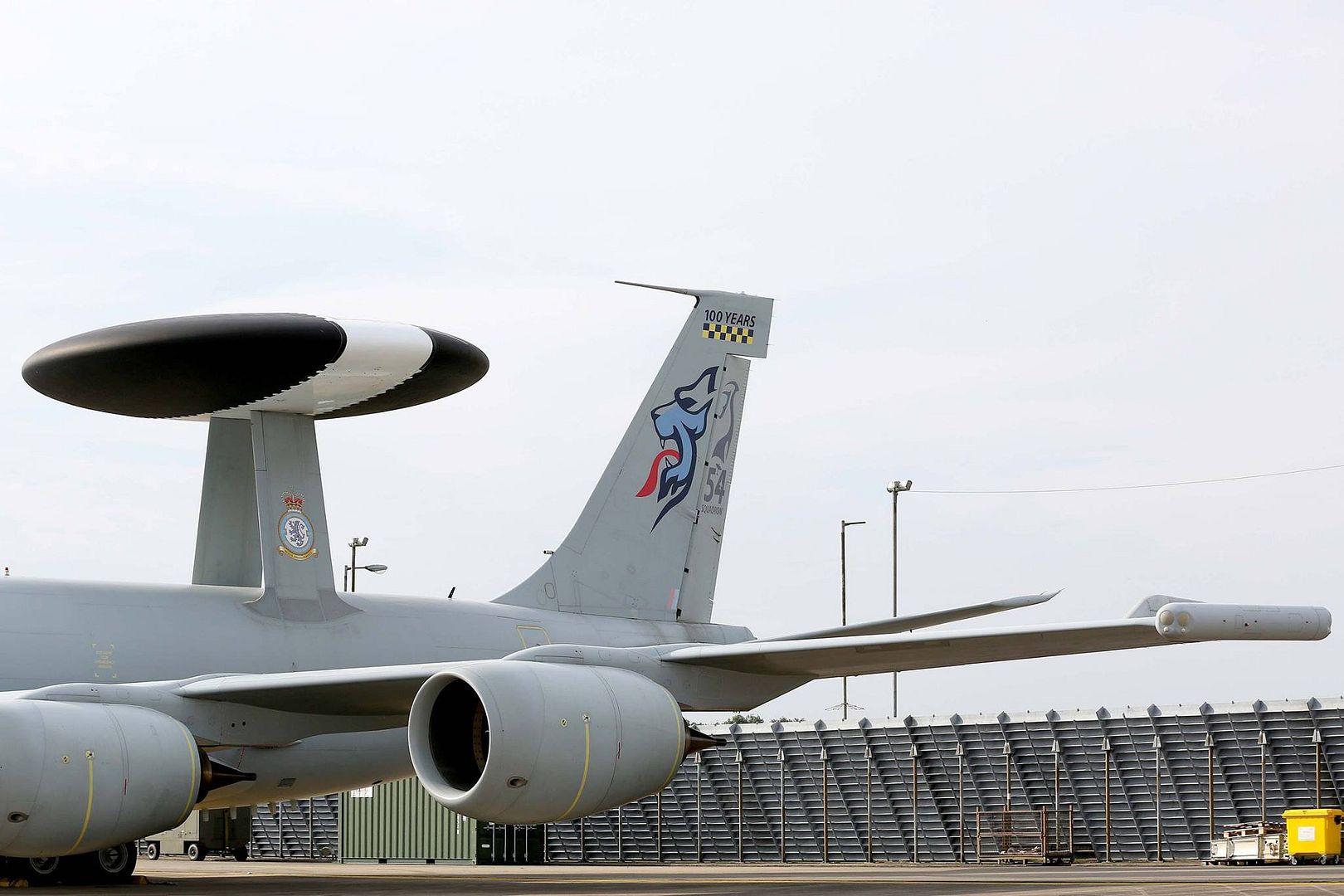
The Officer Commanding of 54(R) Sqn said - The design features the yellow and blue chequered pattern which is a tribute to the Squadron?s heraldic Badge and also incorporates two iconic aircraft operated by the squadron during our history, the Spitfire and Jaguar. The stylised lion head at the centrepiece of the design is taken from the original squadron badge which features a blue lion. It looks fantastic and the Squadron are incredibly proud to see this tail art in place to mark 100 years of distinguished service.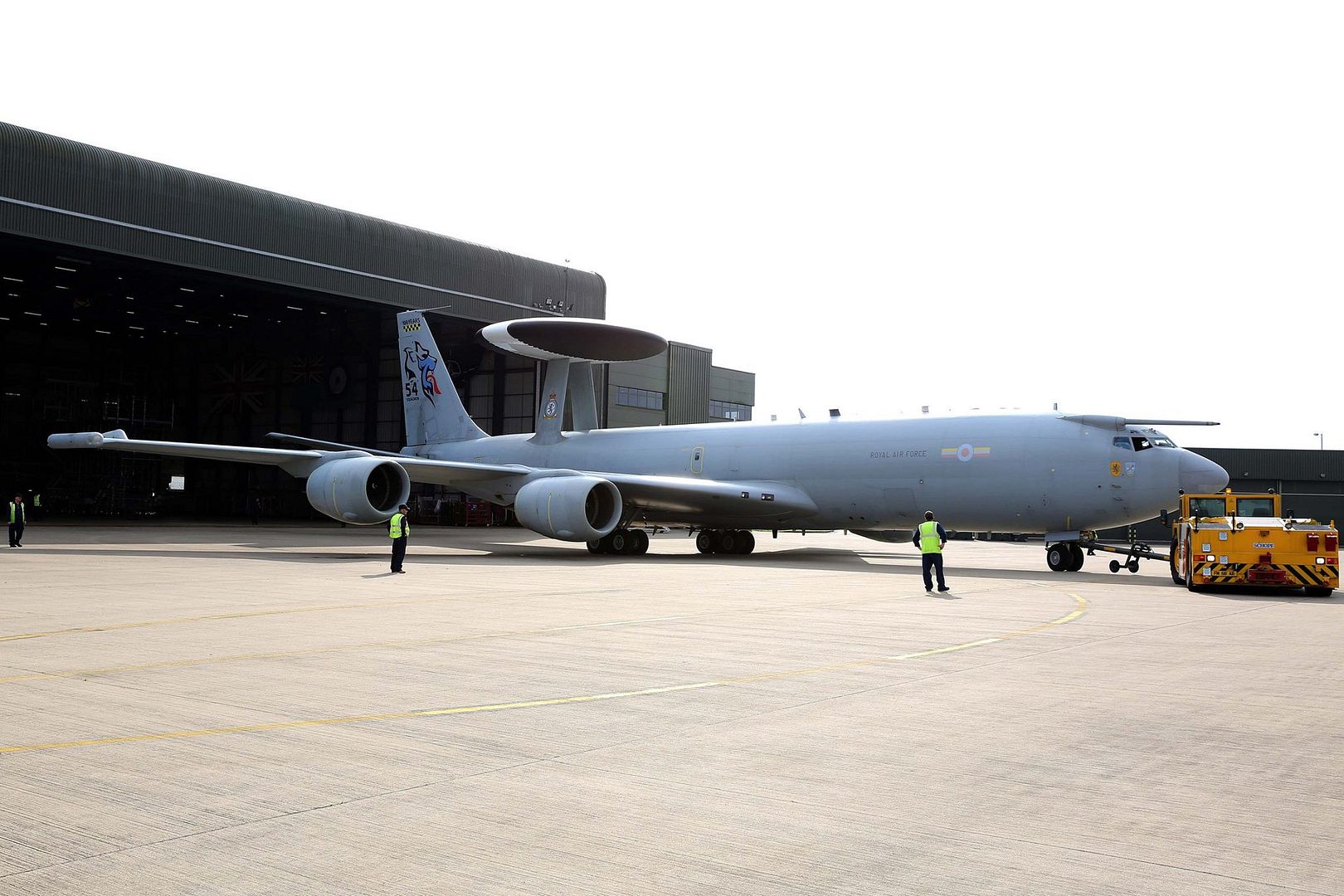
-
 Main AdminPHILIPPINE SEA (Sept. 15, 2016) An F/A-18F Super Hornet assigned to the "Diamondbacks" of Strike Fighter Squadron (VFA) 102 launches from the flight deck of the Navy's only forward-deployed aircraft carrier USS Ronald Reagan (CVN 76) during Valiant Shield 2016. USS Ronald Reagan is participating in Valiant Shield, a biennial, U.S. only, field-training exercise with a focus on integration of joint training among U.S. forces. This training enables real-world proficiency in sustaining joint forces through detecting, locating, tracking and engaging units at sea, in the air, on land and in cyberspace in response to a range of mission areas. (U.S. Navy photo by Mass Communication Specialist 3rd Class Nathan Burke/Released)
Main AdminPHILIPPINE SEA (Sept. 15, 2016) An F/A-18F Super Hornet assigned to the "Diamondbacks" of Strike Fighter Squadron (VFA) 102 launches from the flight deck of the Navy's only forward-deployed aircraft carrier USS Ronald Reagan (CVN 76) during Valiant Shield 2016. USS Ronald Reagan is participating in Valiant Shield, a biennial, U.S. only, field-training exercise with a focus on integration of joint training among U.S. forces. This training enables real-world proficiency in sustaining joint forces through detecting, locating, tracking and engaging units at sea, in the air, on land and in cyberspace in response to a range of mission areas. (U.S. Navy photo by Mass Communication Specialist 3rd Class Nathan Burke/Released)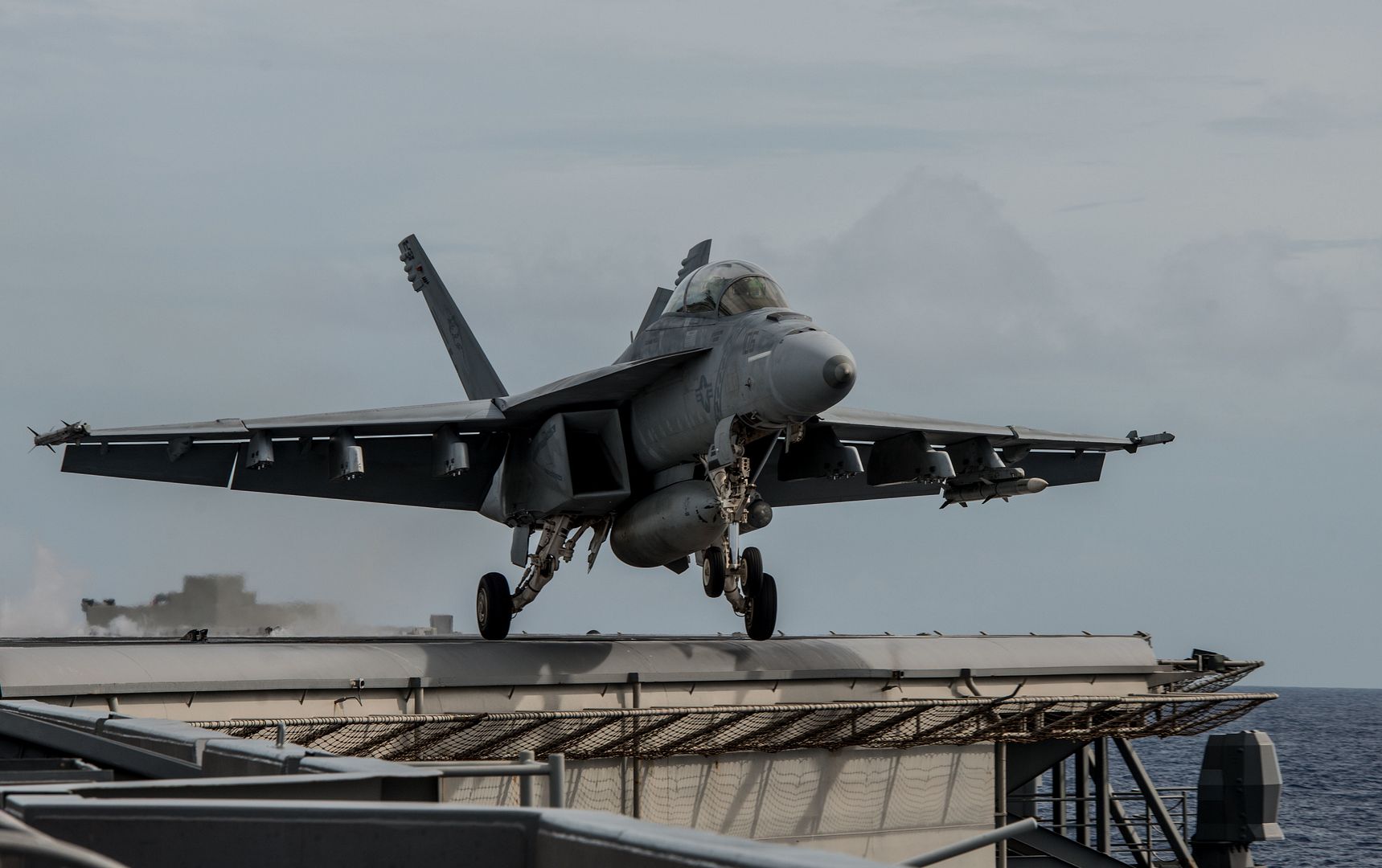
PHILIPPINE SEA (Sept. 15, 2016) An F/A-18E Super Hornet assigned to the "Eagles" of Strike Fighter Squadron (VFA) 115 launches from the flight deck of the Navy's only forward-deployed aircraft carrier USS Ronald Reagan (CVN 76) during Valiant Shield 2016. USS Ronald Reagan is participating in Valiant Shield, a biennial, U.S. only, field-training exercise with a focus on integration of joint training among U.S. forces. This training enables real-world proficiency in sustaining joint forces through detecting, locating, tracking and engaging units at sea, in the air, on land and in cyberspace in response to a range of mission areas. (U.S. Navy photo by Mass Communication Specialist 3rd Class Nathan Burke/Released)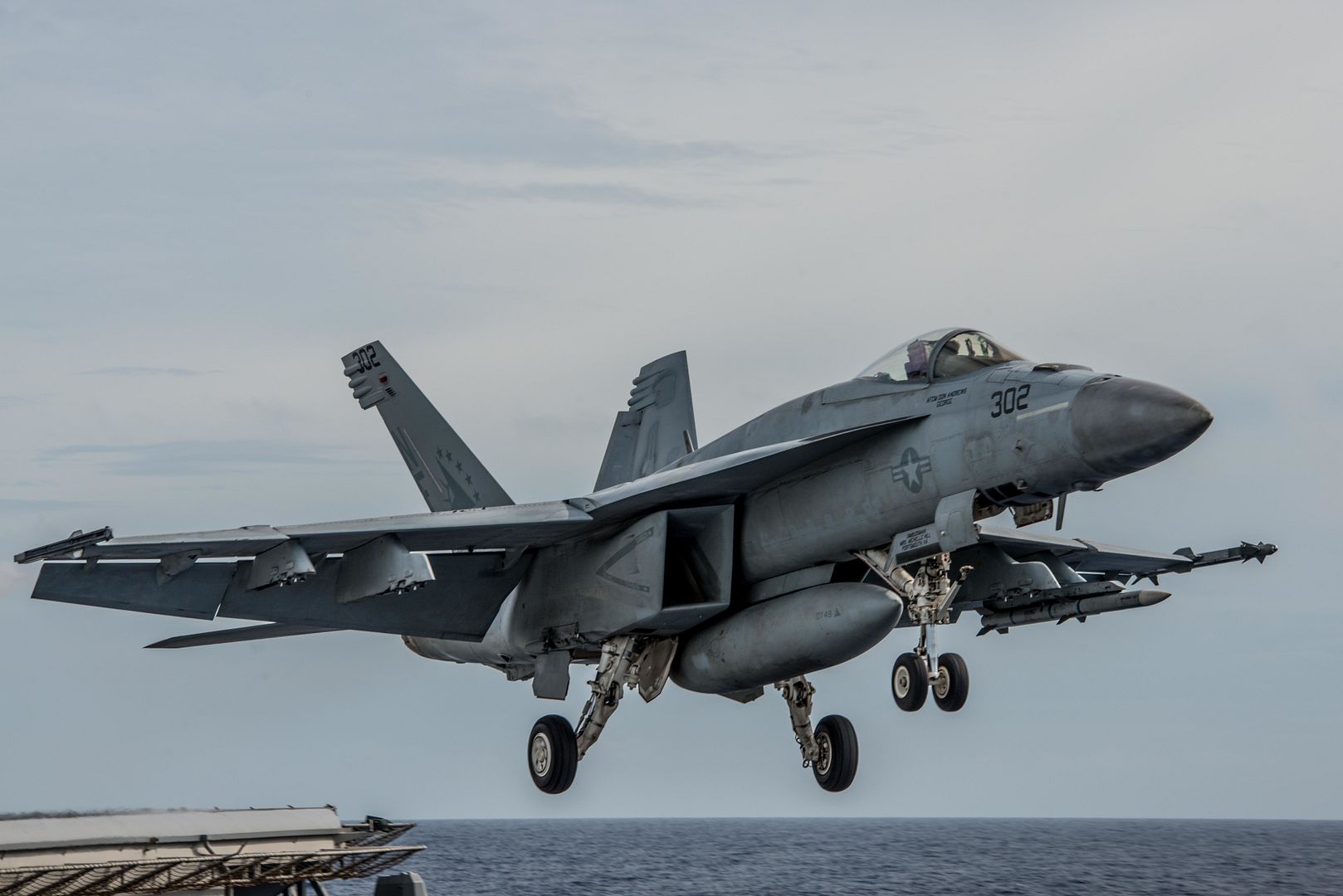
On Wednesday 14 September a very special formation left RAF Odiham bound for the south coast of England but tactical camouflage was not on the agenda!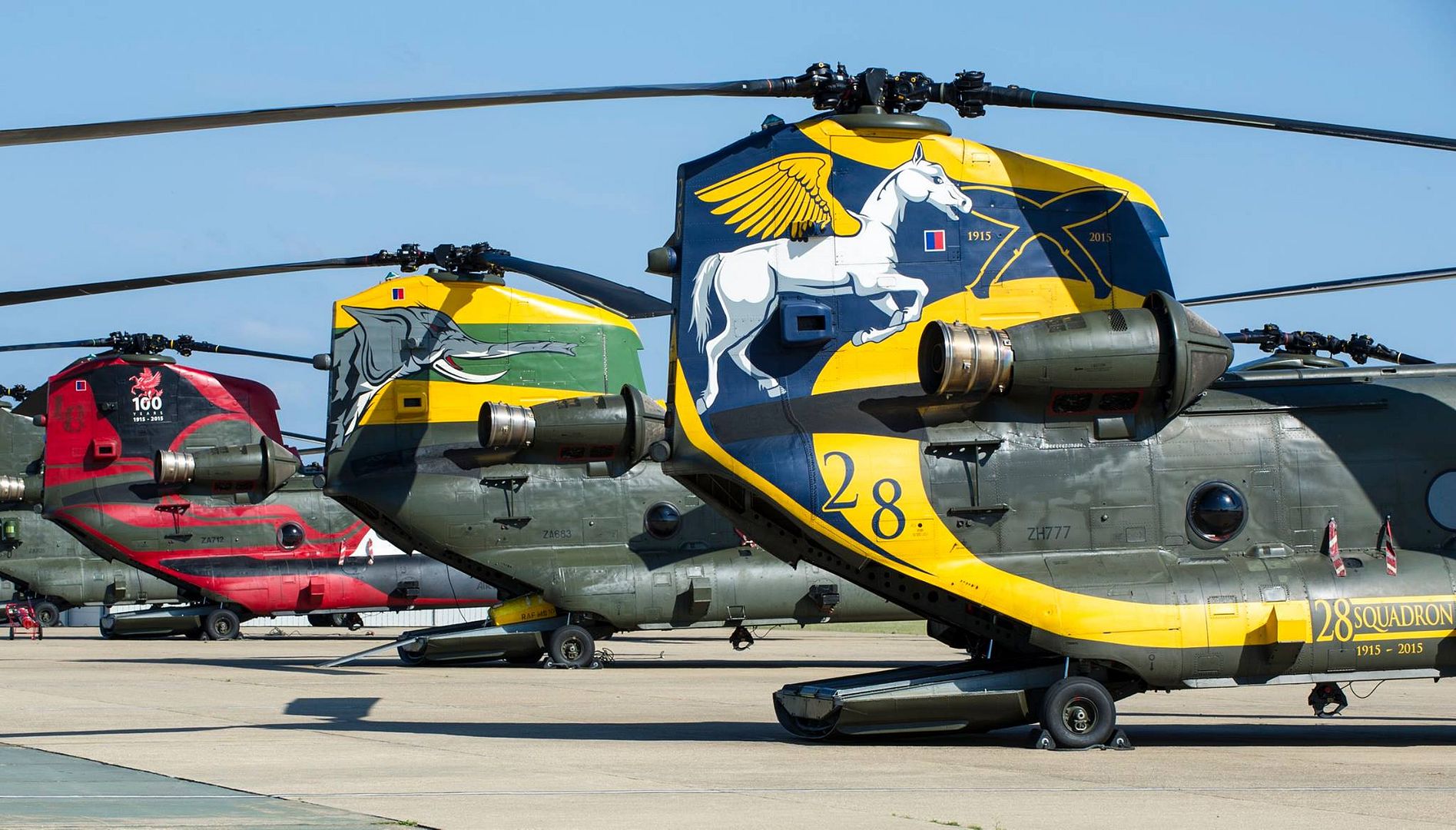
In the past 18 months three Chinook aircraft have been painted to celebrate the 100th anniversaries of 18(B) and 27 Squadron from RAF Odiham and 28 Squadron from RAF Benson. With the first of the helicopters expected to be returned to standard operational markings in the near future this opportunity was integrated in to a formation training sortie which tested the crews? ability to plan and execute some very unique tasks. With it being so complex the mission was, unusually, briefed the day prior to launch and each crew walked through the various maneouvres in the hangar, in what is colloquially known as a ?rock drill.? At the hour they walked for their aircraft each member had a firm grasp of the planned movements which enabled them to focus on maintaining strict safety margins.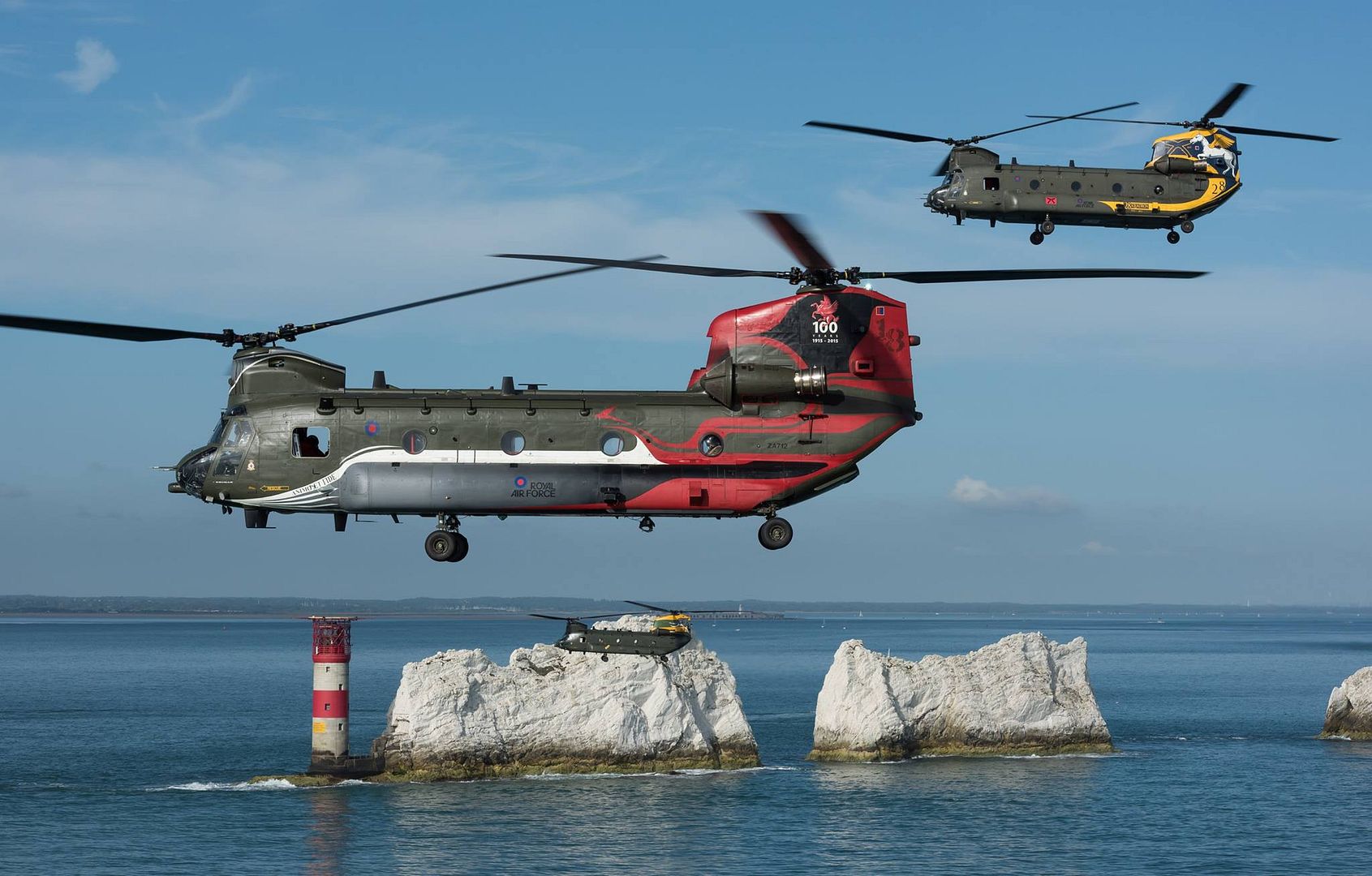
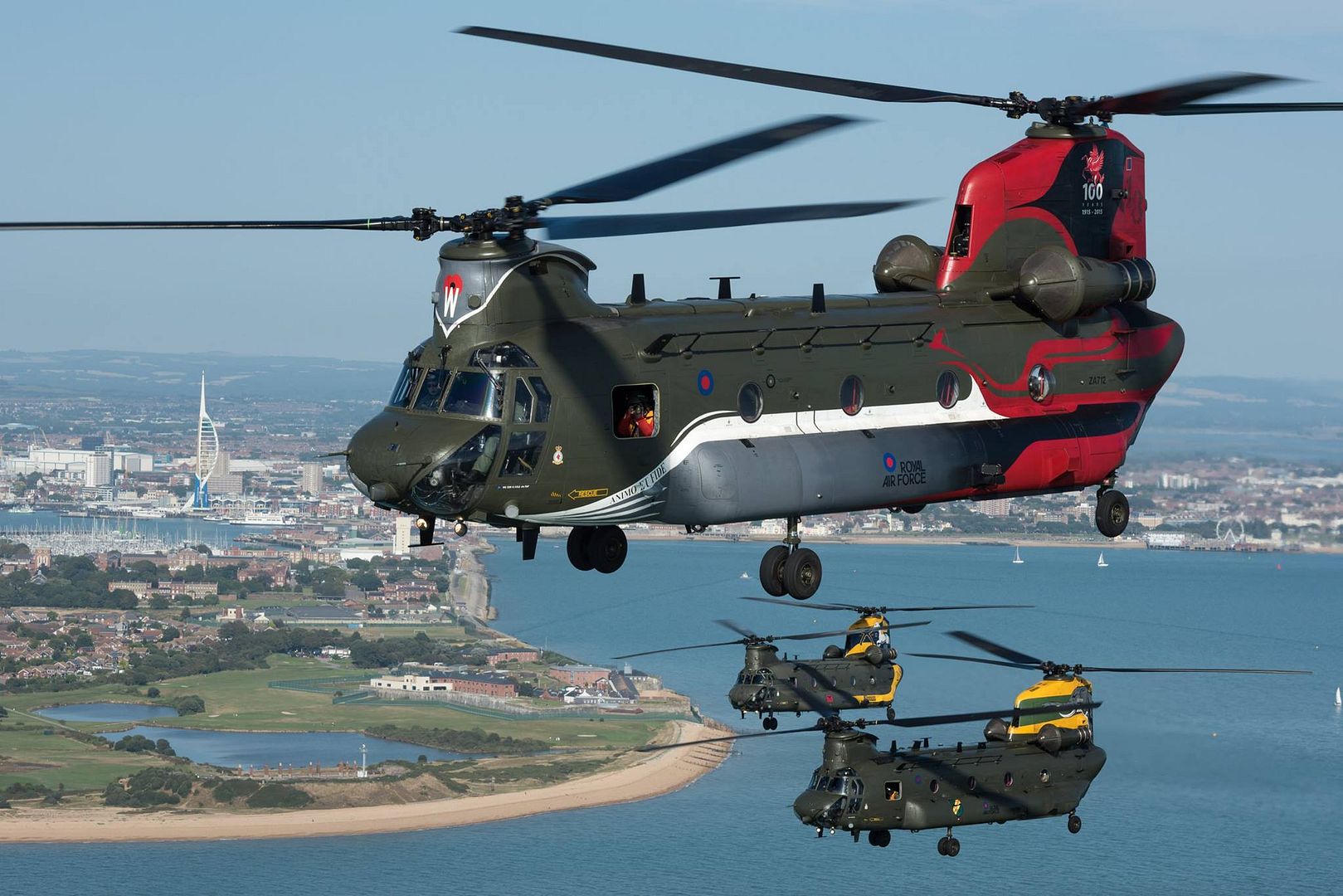
The day itself was only the end of a long road though, with preparation having begun over 6 months ago. Operational restraints cancelled the first planned date in June and the only other window where all three aircraft were available concurrently was identified as being this week. RAF Odiham?s dedicated and professional engineering teams were therefore faced with generating three very specific airframes to complete this sortie whilst concurrently deploying multiple others to support exercises in Sweden and onboard HMS Ocean and providing manpower to flying detachments in the United States and elsewhere. They succeeded and the results of their efforts are clear to be seen.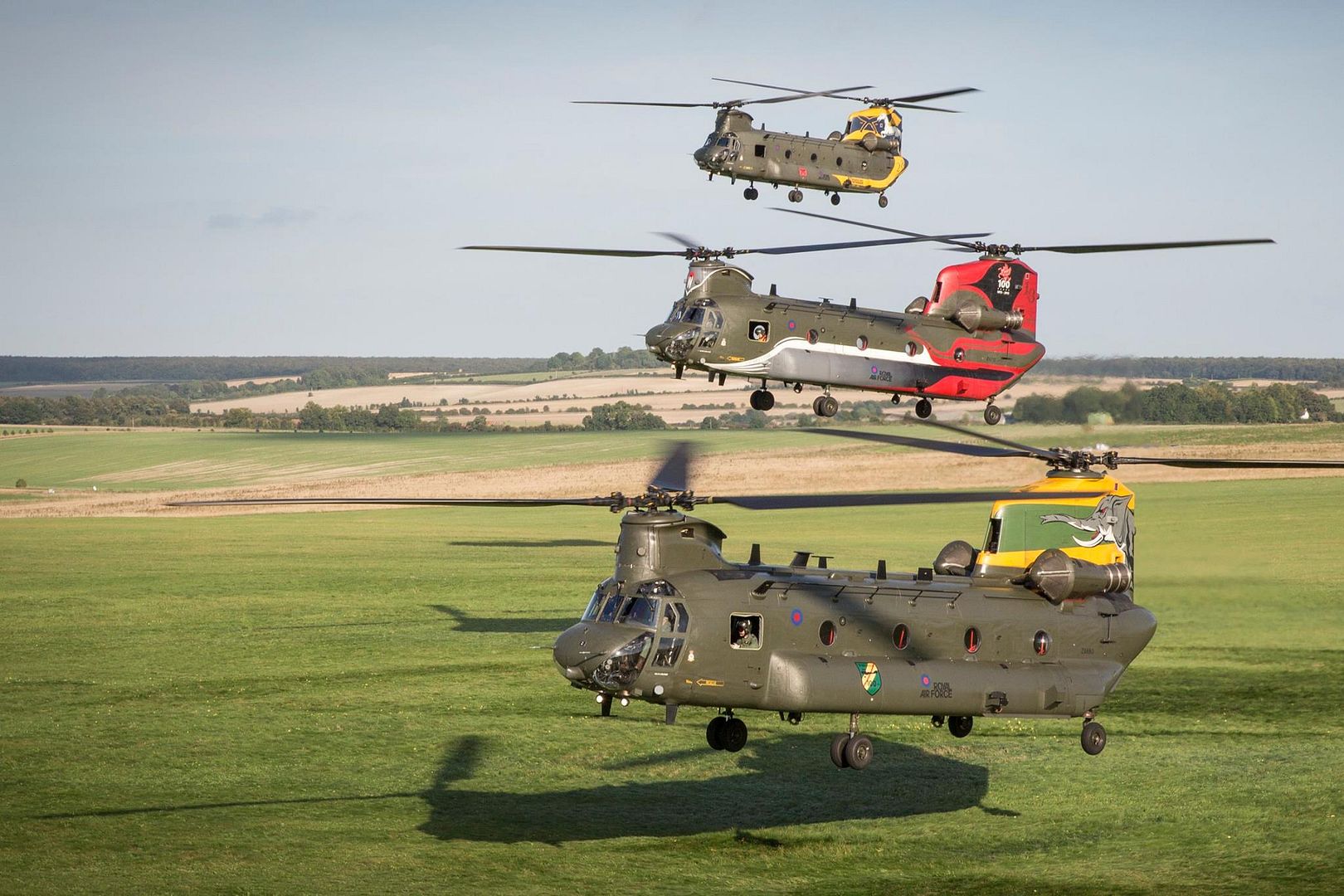
The Serco team who painted the Chinooks at Odiham, each in the space of two intense weeks, were invited to see the three lined up on the dispersal together for what may be the first and only time ? a moment they had waited a long time to see. As for the stunning imagery seen here, that could certainly not have been captured without the generous contribution of 657 Sqn Army Air Corps, also based at RAF Odiham, who integrated a Lynx aircraft with the formation to act as a camera platform. This again provided a valuable training opportunity for dissimilar types to operate together, all the while having to maintain awareness of the other?s capabilities and limitations.
RAF Odiham?s future will undoubtedly be a busy one but with only a few weeks to spare until the opportunity faded, has now managed to record a unique and unrepeatable period for the history books.
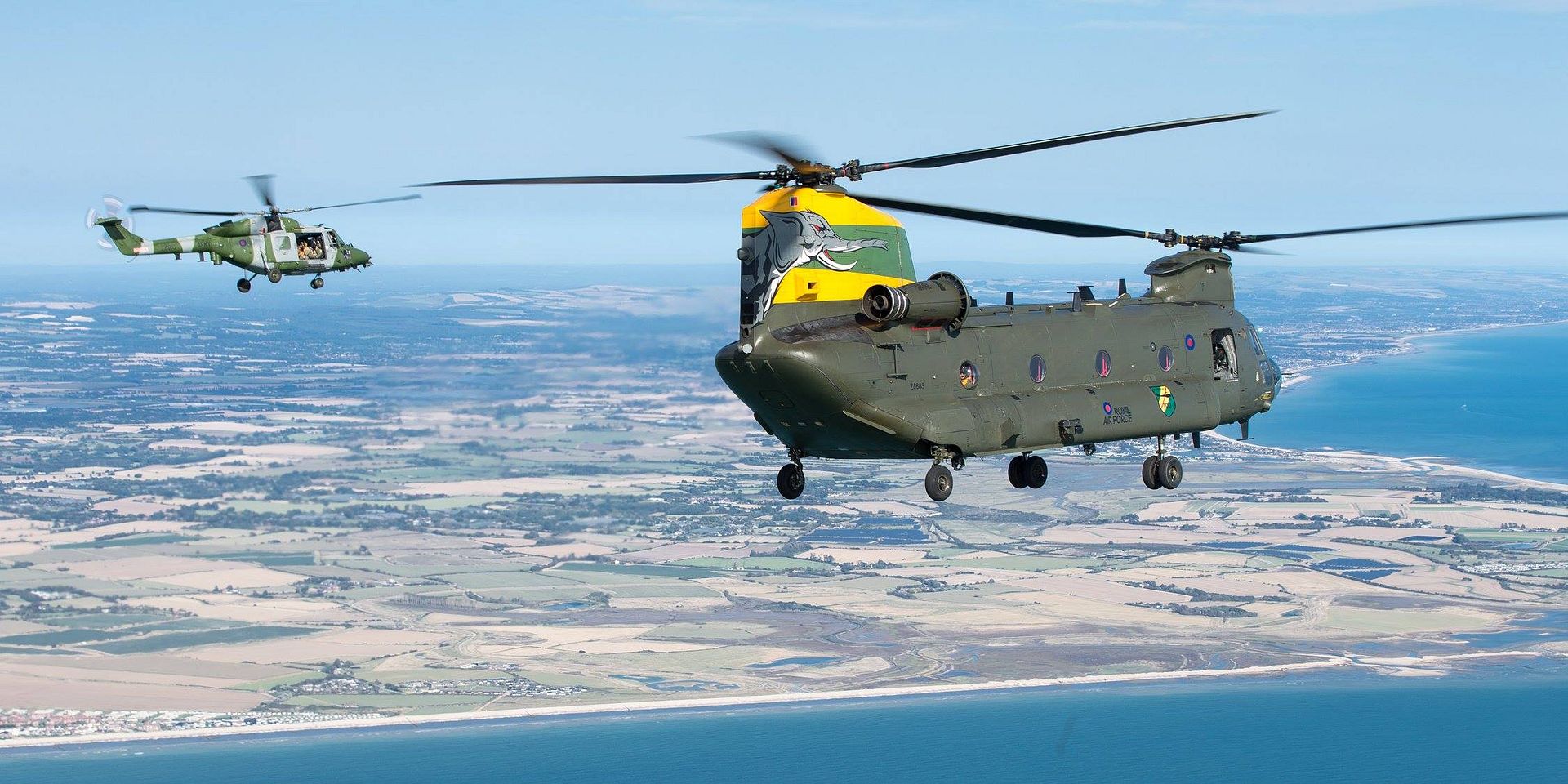
Images by RAF Odiham Photographic Section & Flt Lt Andy Donovan.
The RAAF Museum at Point Cook, Victoria has today unveiled its newest addition, a Spitfire MK VIII LF replica, A58-492.
Gifted by Friends of the RAAF Museum, the Spitfire replica is on display outside the Museum to represent an Mk VIII Spitfire operated by Number 79 Squadron in the South West Pacific Area of operations during World War II.
The Chief of Air Force, Air Marshal Leo Davies, thanked those who made the new display possible and said it was both a fitting tribute and an important addition representing an important era in military aviation.
?The display is the result of great support by the Friends of the RAAF Museum and corporate donors. It will take pride of place outside of the RAAF Museum where Air Force personnel and visitors can acknowledge the achievements by 79 Squadron,? Air Marshal Davies said.
?The Spitfire was flown by 79 Squadron between 1943 and 1945, during World War II, where five pilots were lost to enemy action. The Spitfire will serve as a reminder of their courage and commitment for visitors to the Museum,? Air Marshal Davies said.
David Gardner, Director of the RAAF Museum said it had been a big but very rewarding task to get the project completed.
?We have received such amazing support from the Friends of the Museum who have worked tirelessly to make this project happen,? said Mr Gardner.
?They, the Friends, have also had donations from various sponsors including Rolls Royce, the RAAF Association (National, State-Vic and Ballart sub-branch), and other smaller donors.
?Without the support and donations of our generous sponsors this project would not have been possible.?
The full size replica, weighing almost approximately 1500 kilograms has been purpose built for the Museum from fibreglass, taking into account the extreme weather conditions that Point Cook experiences. Manufactured in the United Kingdom by Gateguards, the replica had to be dismantled to be shipped to Point Cook before being reassembled and placed on a 2.7 metre high pole.
After disbanding in 1945 at cessation of hostilities, No 79 Squadron reformed in 1962 operating Mirage fighter aircraft, only to disband again in 1988. The Squadron reformed gain in 1998 and today is located at RAAF Base Pearce, Western Australia and operating the Hawk 127 lead-in-fighter trainer.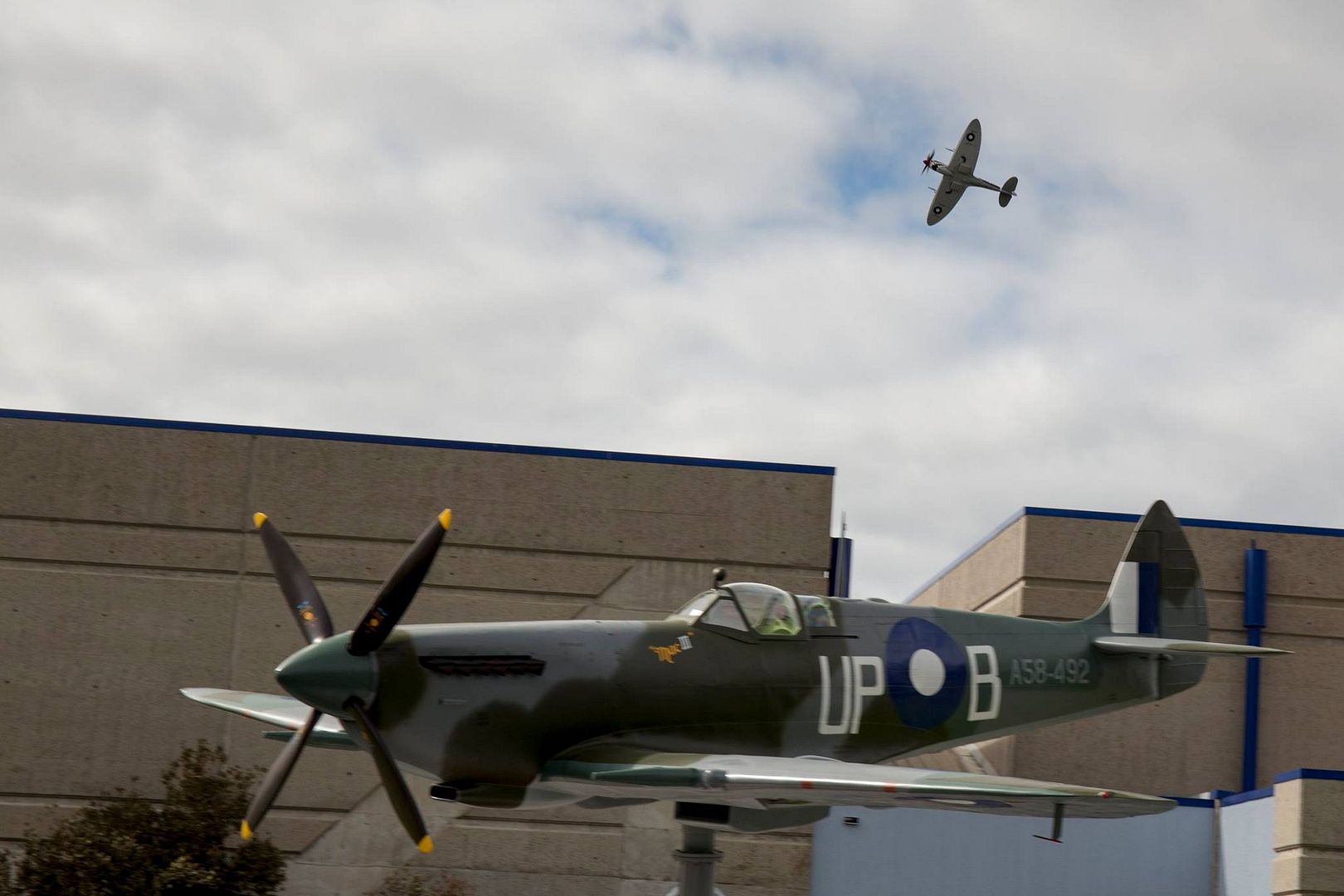
The Museum is currently closed for renovations, but reopening on October 4 to the public.
-
 Main AdminA Belgian Air Force pilot conducts a training flight in an F-16 Fighting Falcon at the 7th Army Training Command?s Grafenwoehr Training Area, Germany, Sep. 16, 2016. (U.S. Army photo by Visual Information Specialist Gertrud Zach)
Main AdminA Belgian Air Force pilot conducts a training flight in an F-16 Fighting Falcon at the 7th Army Training Command?s Grafenwoehr Training Area, Germany, Sep. 16, 2016. (U.S. Army photo by Visual Information Specialist Gertrud Zach)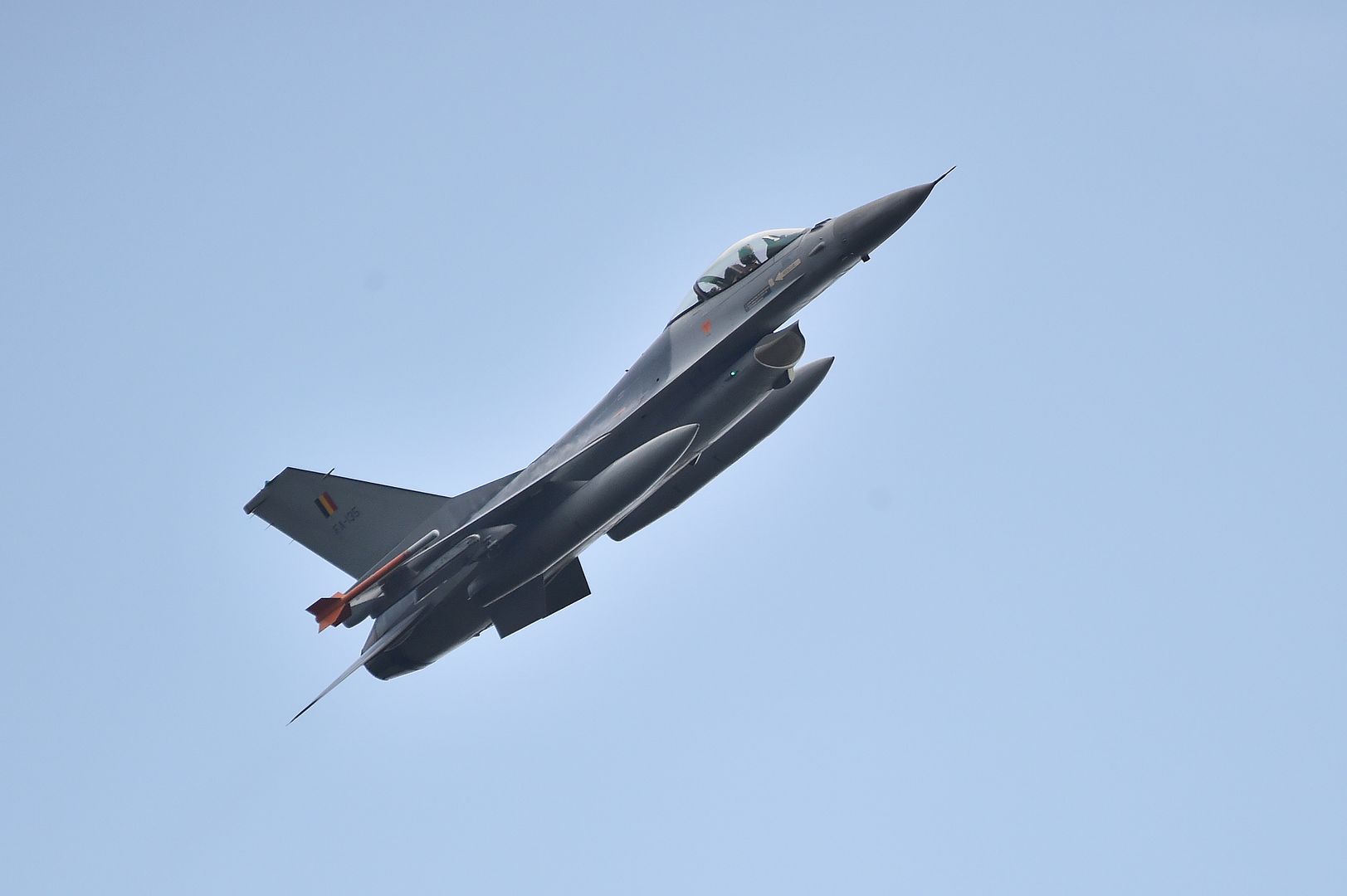
WHITEMAN AIR FORCE BASE, Mo. -- Low observable technicians from the 509th Maintenance Squadron tape off sections of an FB-111A General Dynamics Aardvark static display prior to repainting it at Whiteman Air Force Base, Mo., Sept. 13, 2016. During the restoration process, the aircraft was sanded, primed, repainted and received corrosion maintenance.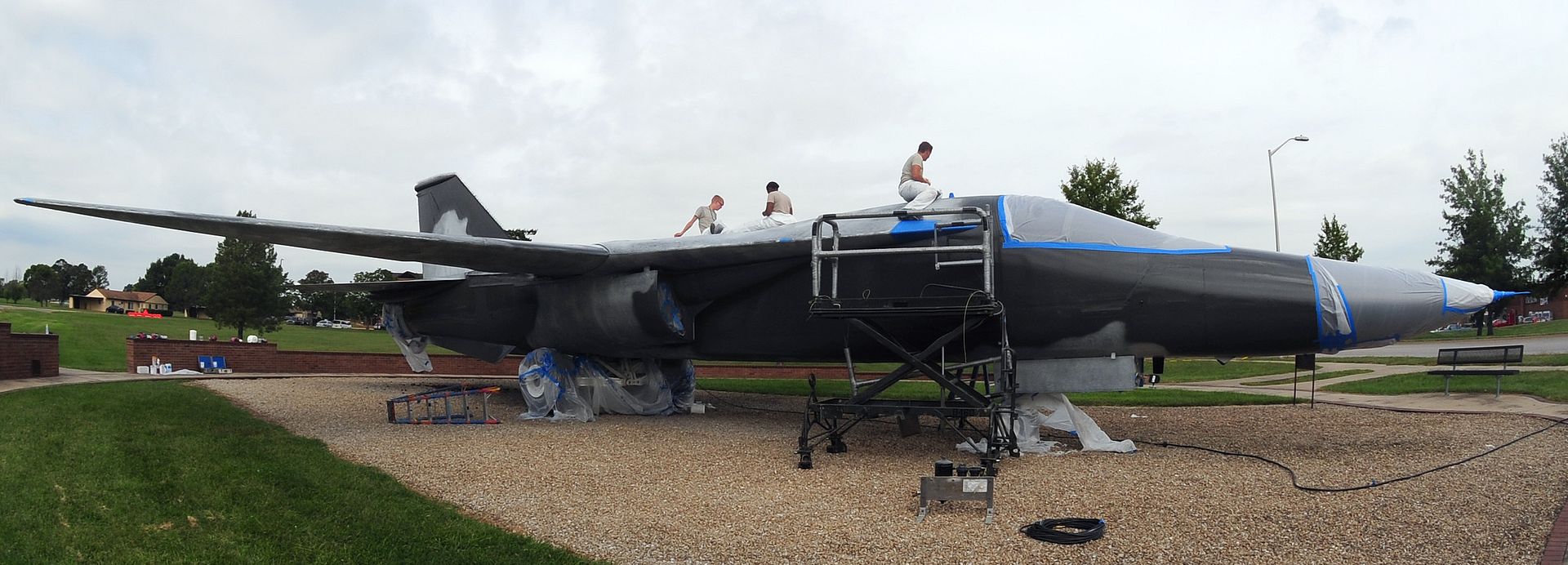
15 September 2016 Press Release
The aircraft bearing the airline?s distinctive livery will now enter the final phase of production, including further ground and flight tests. This first A350-900 for China Airlines is scheduled for delivery in the coming weeks.
China Airlines has 14 A350-900s on order. The aircraft is expected to be deployed on the carrier's long-haul routes to Europe and on selected regional routes. The A350-900 will join China Airlines' Airbus fleet including A330s and A340s on its regional and long haul services.
The A350 XWB is the world?s latest generation airliner and the newest member of Airbus? modern, comfortable & efficient widebody product family. It features the latest aerodynamic design, carbon fiber fuselage and wings, plus new fuel-efficient Rolls-Royce Trent XWB engines. Together, these latest technologies translate into unrivalled levels of operational efficiency, with a 25 per cent reduction in fuel burn and emissions, and significantly lower maintenance costs.
To date, Airbus has recorded a total of 810 firm orders for the A350 XWB from 43 customers worldwide, already making it one of the most successful widebody aircraft ever.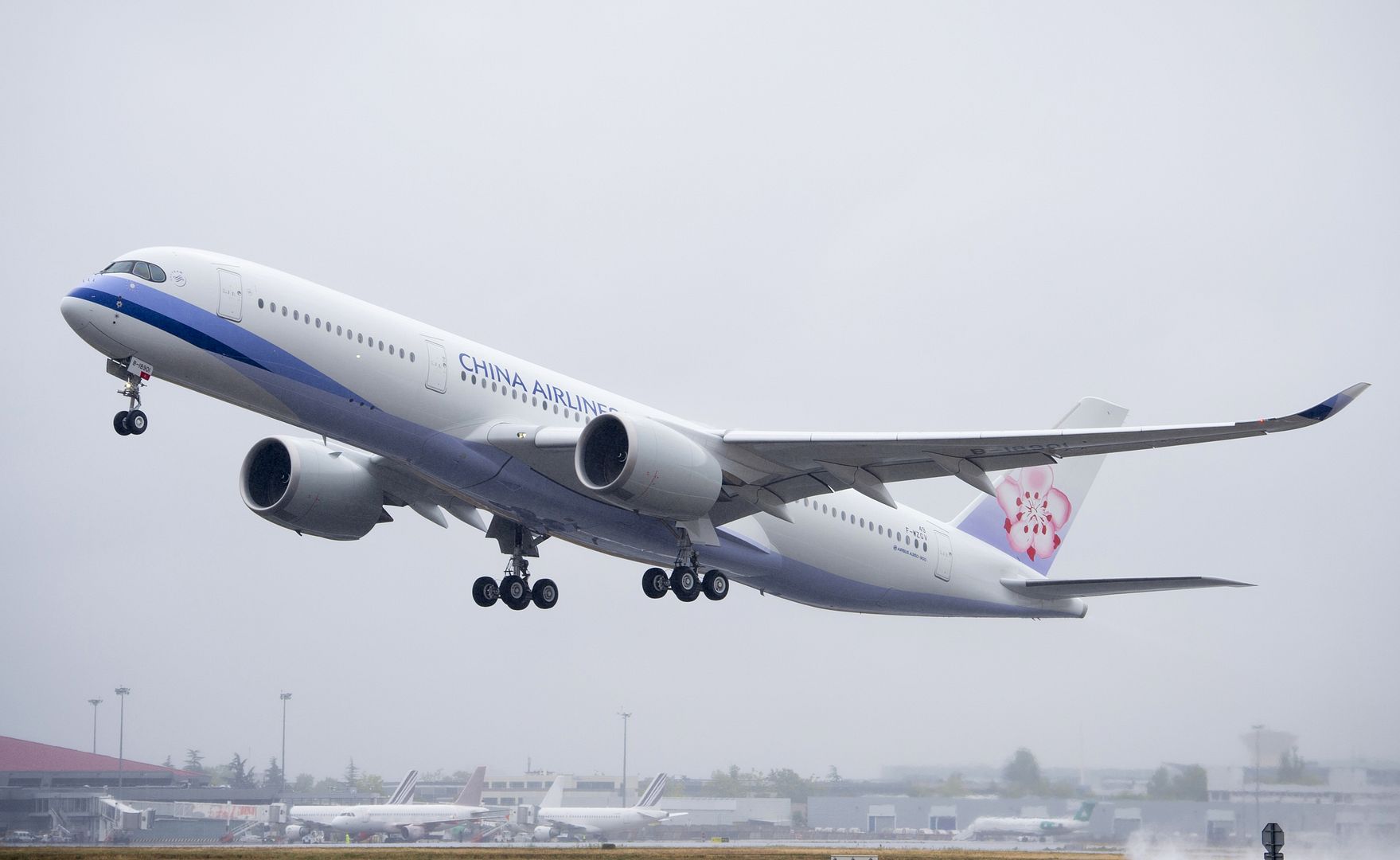
The Chief of Staff of the Japan Air Self Defence Force, General Yoshiyuki Sugiyama, announced today that the first-ever UK-Japan Fighter Exercise would be hosted at JASDF Misawa Air Base from mid-October to early November.
This exercise was agreed at the January 2016 Foreign and Defence Ministers Dialogue (2+2).
Four Typhoons from RAF II (AC) Squadron will be visiting Japan with Voyager and C-17 aircraft. The JASDF will be participating with F-2 and F-15 fighter aircraft.
This is the first time for the JASDF to host an exercise with a foreign nation other than the United States. The Exercise will be aimed at enhancing interoperability to deepen the UK and Japan?s partnership in security and defence.
The Exercise has been named ?GUARDIAN NORTH 16? to represent the role of the JASDF and RAF as the guardians of security and the exercise area of Northern Japan.
The UK and Japan share common values such as democracy and the rule of law. GUARDIAN NORTH 16 represents the deepening partnership in security and defence.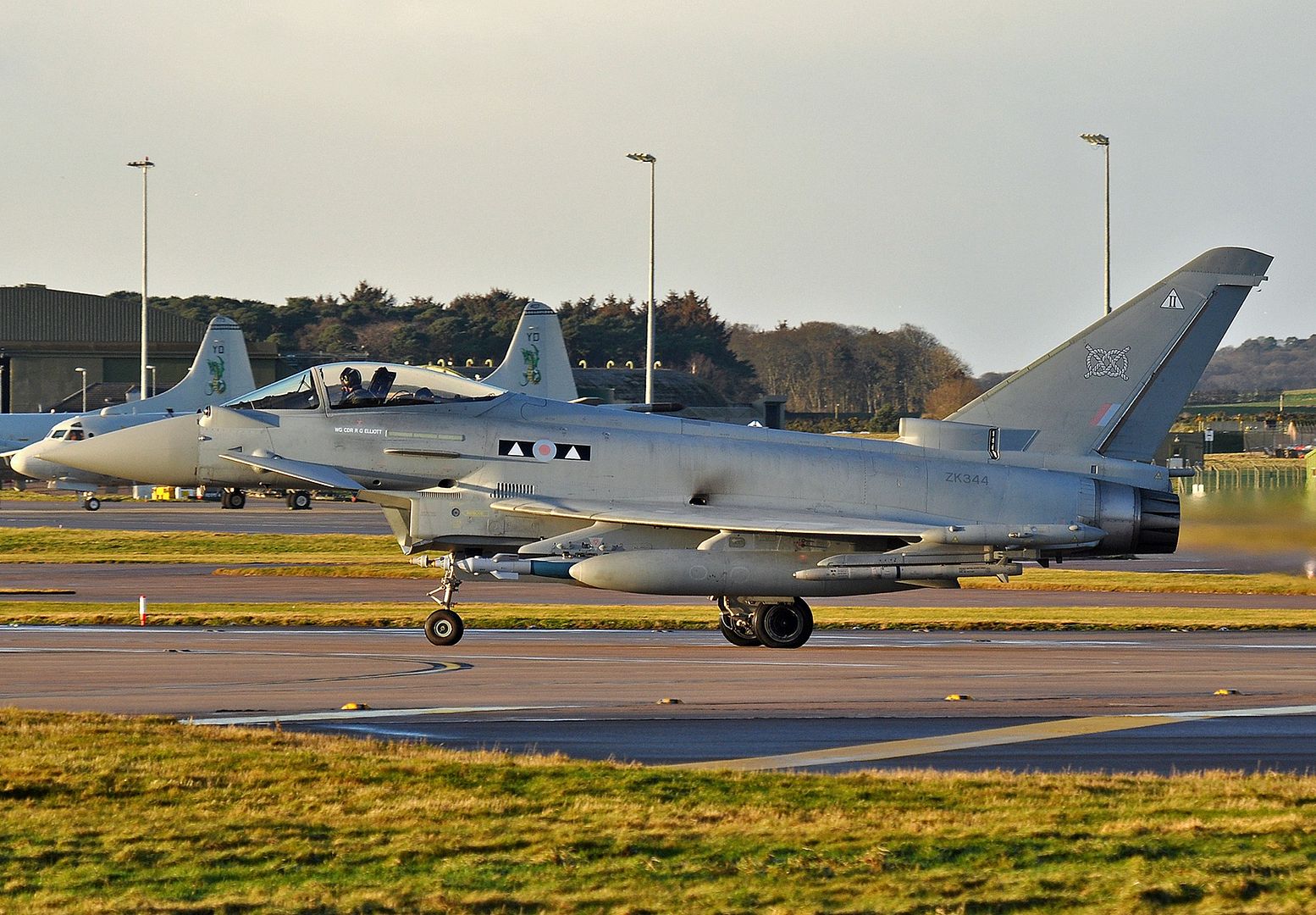
Mosquito TV959 is now marked up as a former 75 Sqn aircraft NZ2337.
Looks fantastic well done lads!
From Here - https://www.facebook.com/ClassicAircraftPhotography/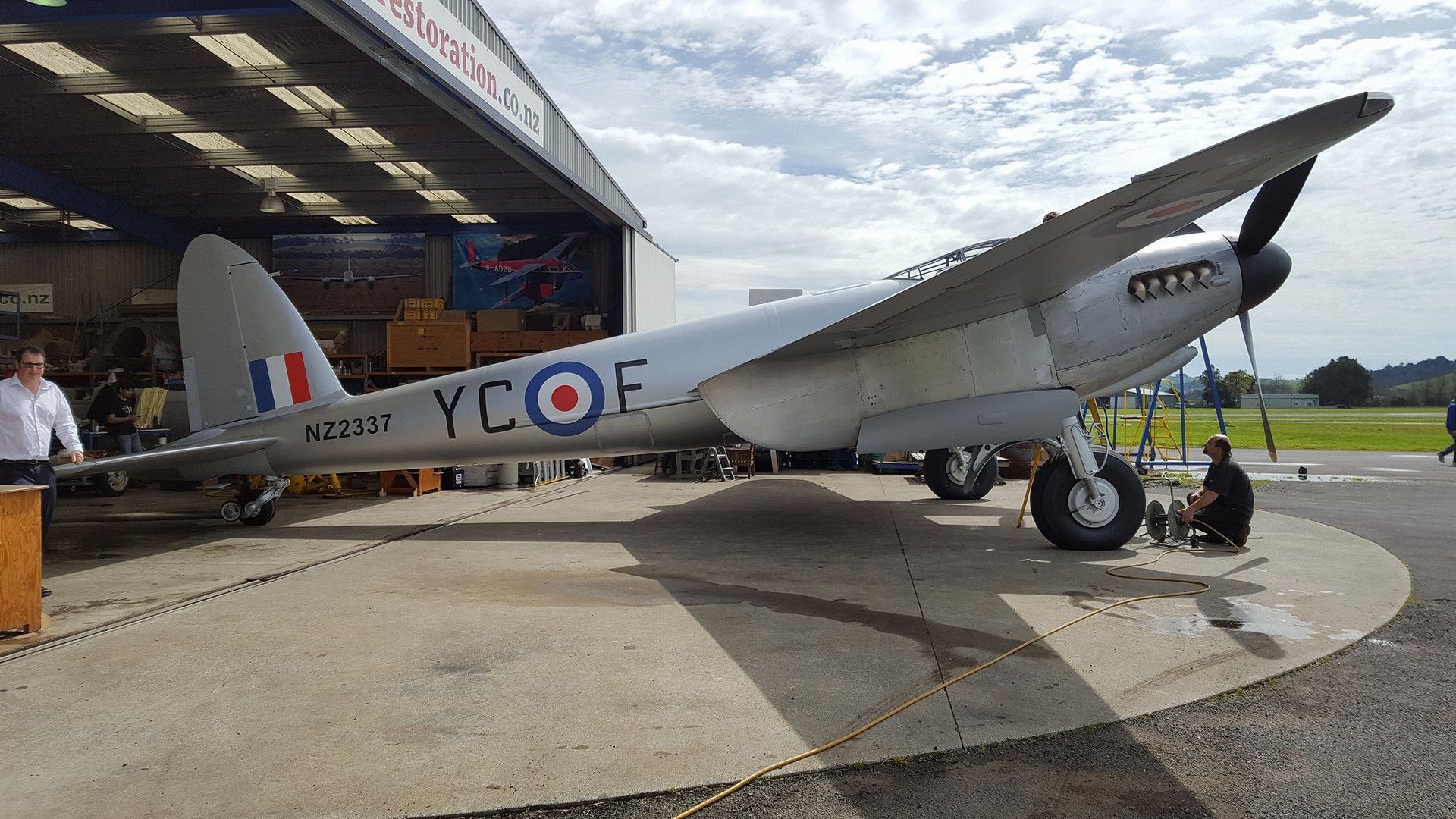
Post a reply
- Go to Next topic
- Go to Welcome
- Go to Introduce Yourself
- Go to General Discussion
- Go to Screenshots, Images and Videos
- Go to Off topic
- Go to Works in Progress
- Go to Skinning Tips / Tutorials
- Go to Skin Requests
- Go to IJAAF Library
- Go to Luftwaffe Library
- Go to RAF Library
- Go to USAAF / USN Library
- Go to Misc Library
- Go to The Ops Room
- Go to Made in Germany
- Go to Campaigns and Missions
- Go to Works in Progress
- Go to Juri's Air-Raid Shelter
- Go to Campaigns and Missions
- Go to Works in Progress
- Go to Skinpacks
- Go to External Projects Discussion
- Go to Books & Resources
